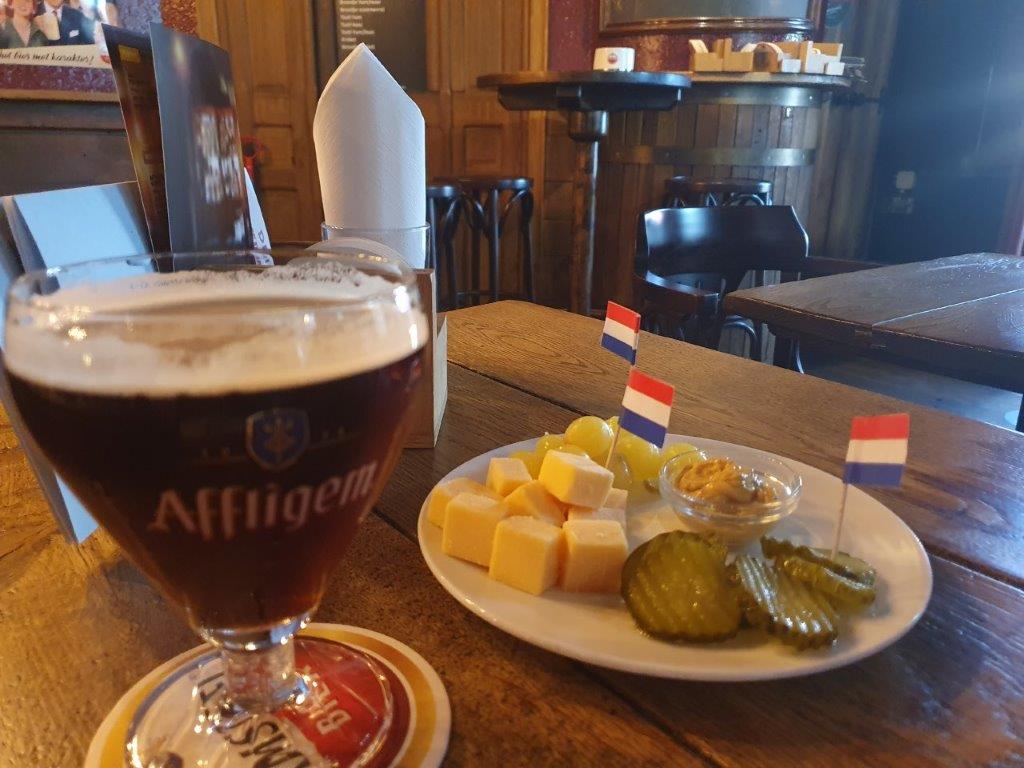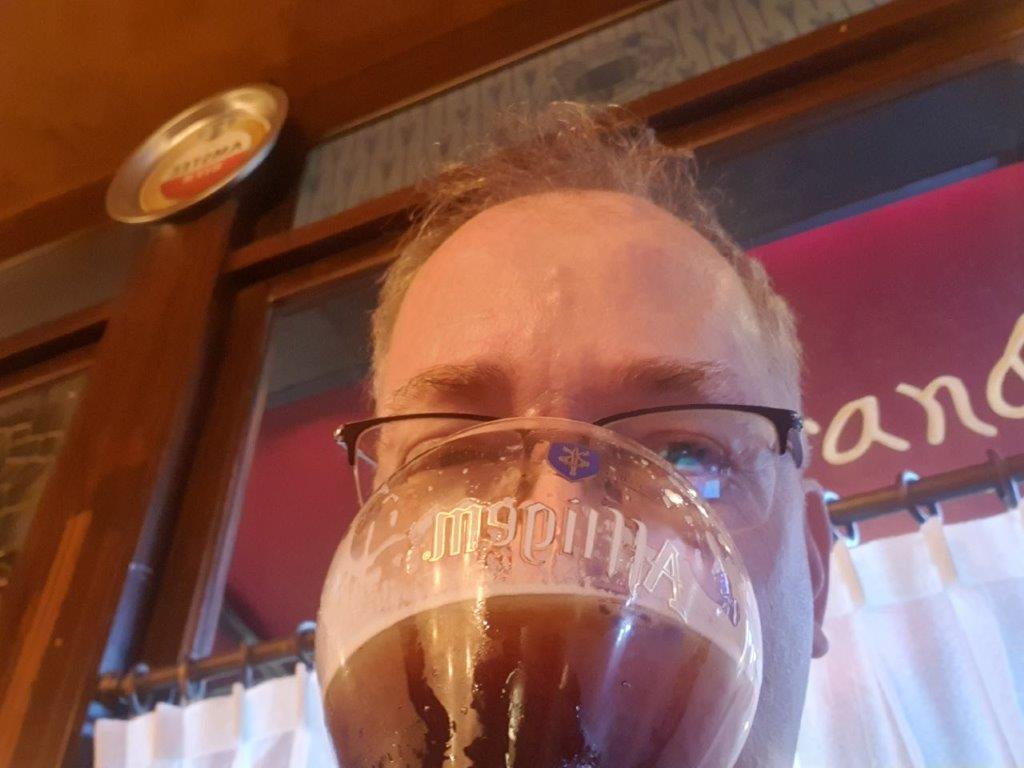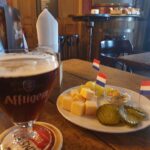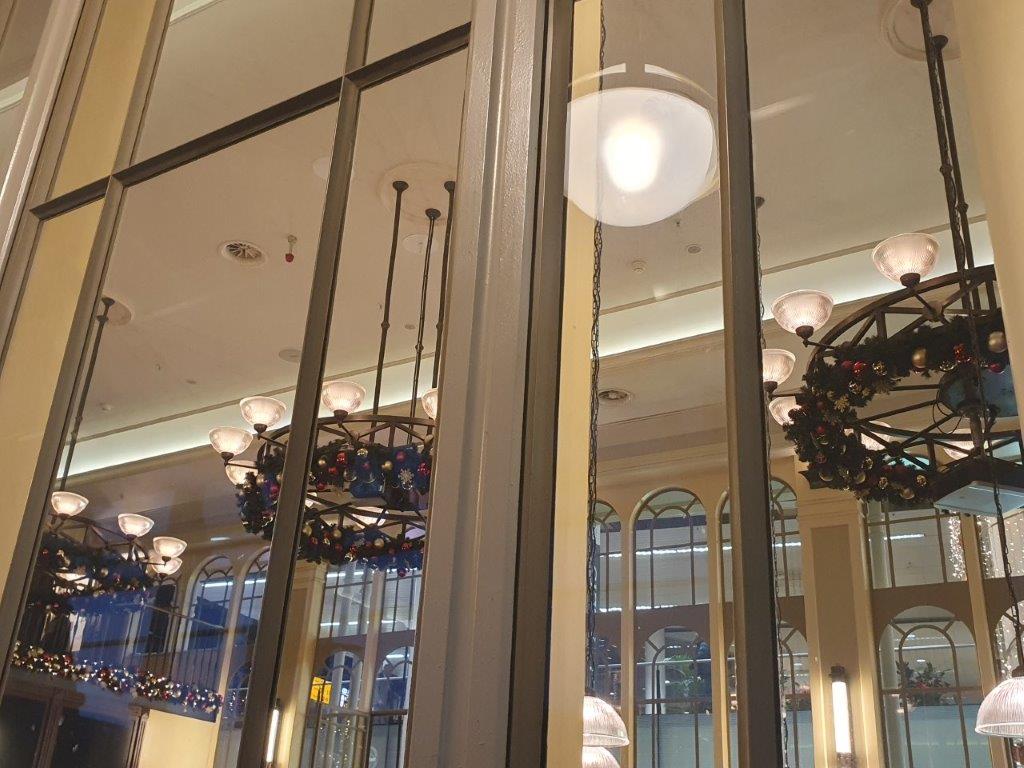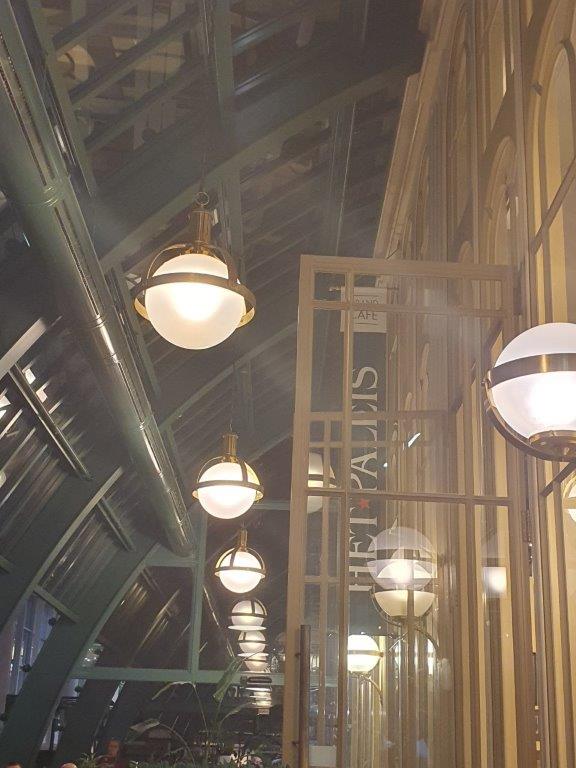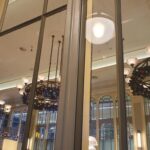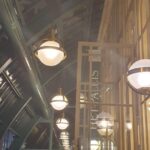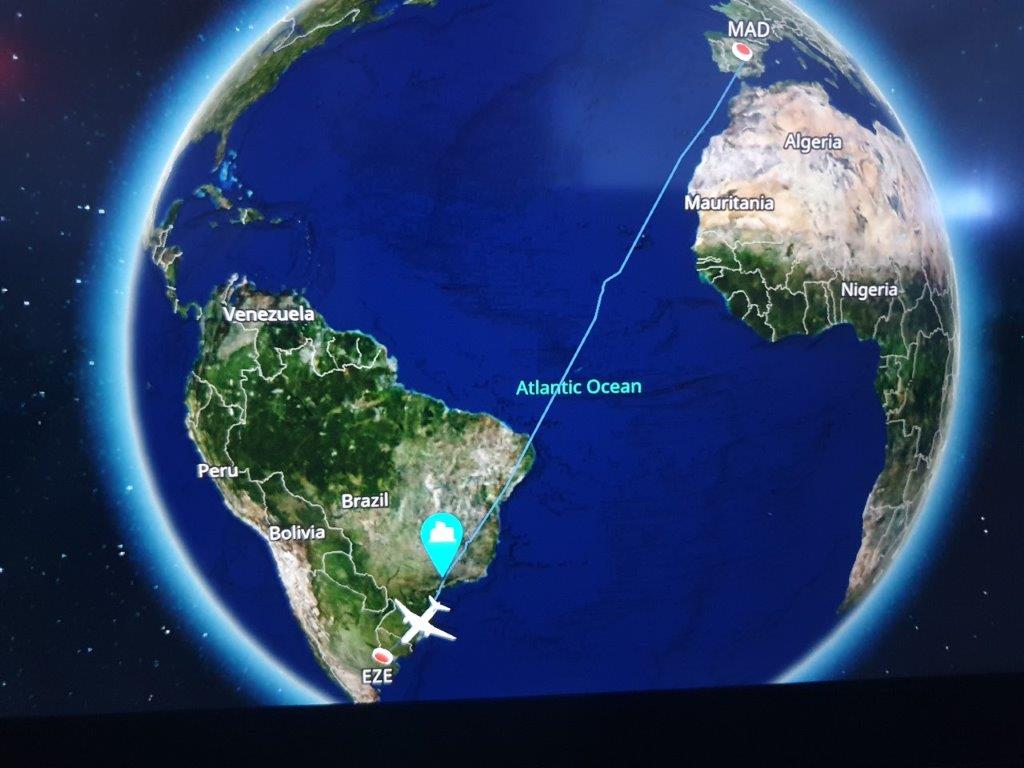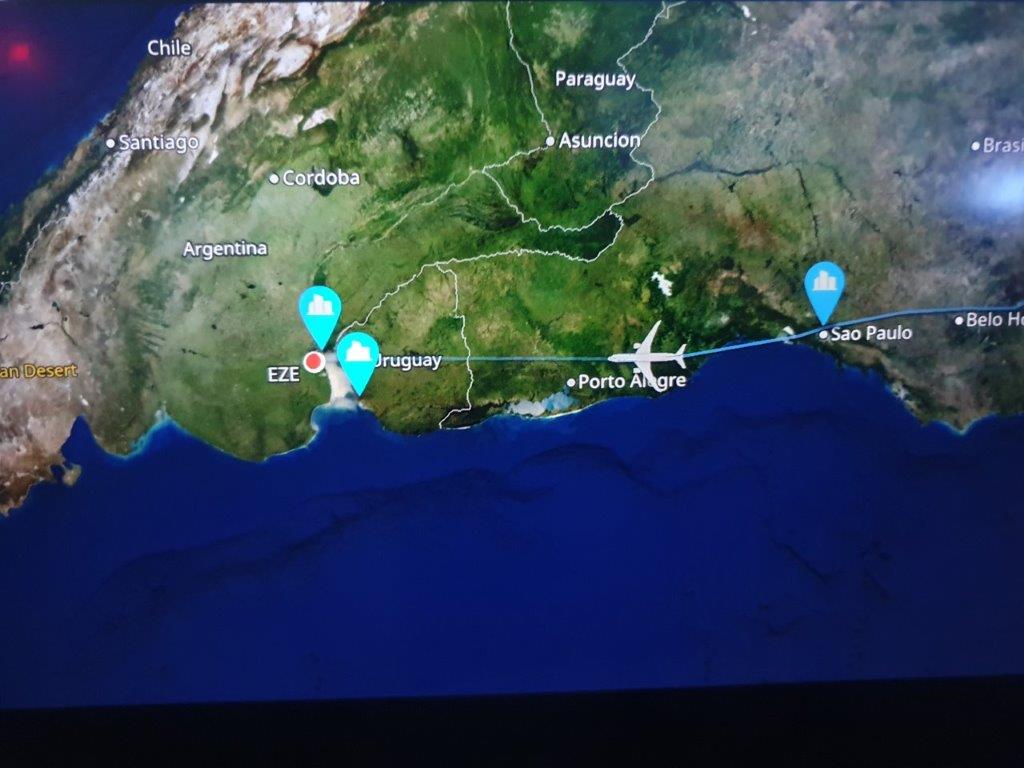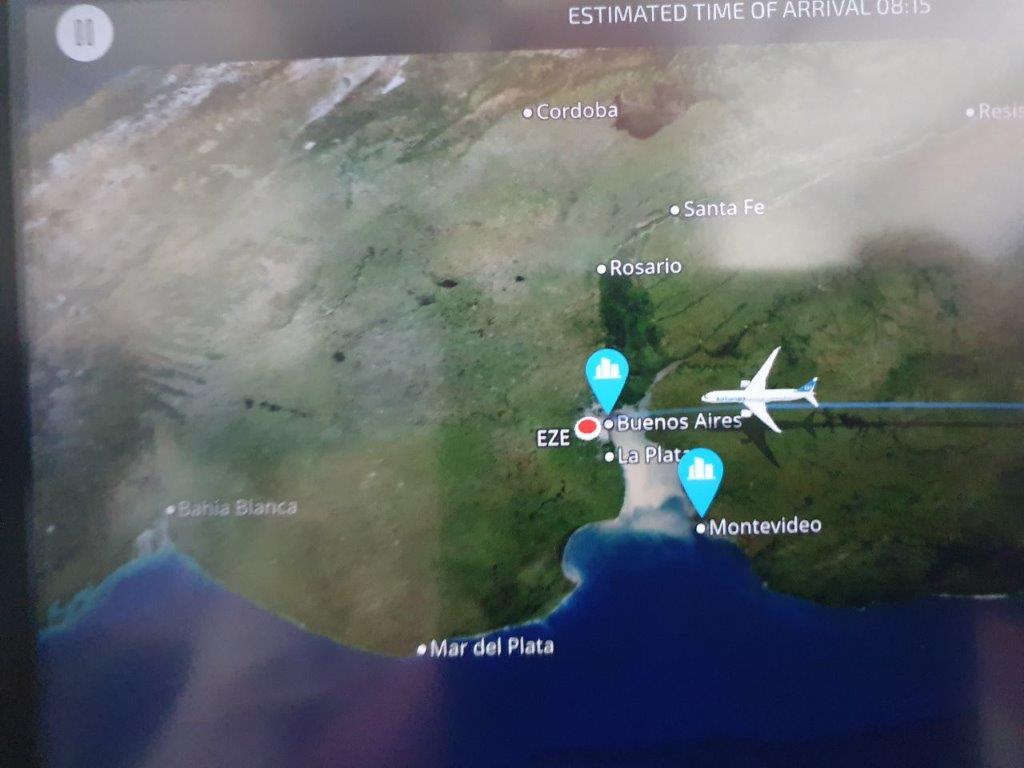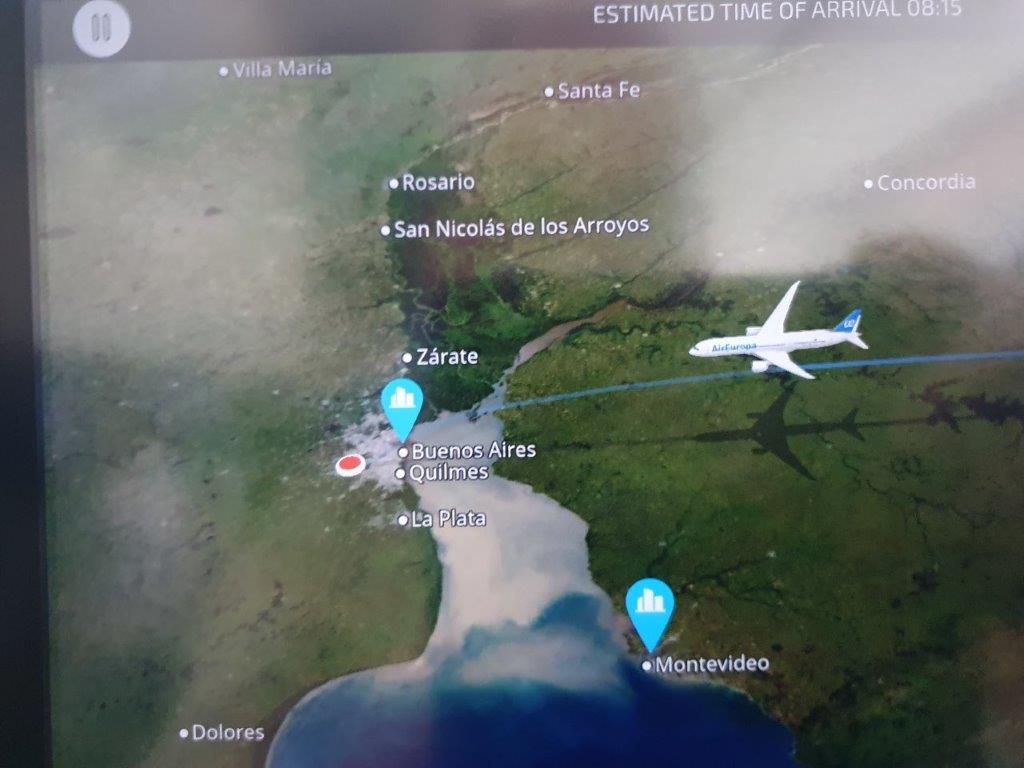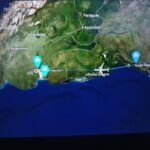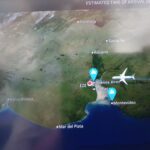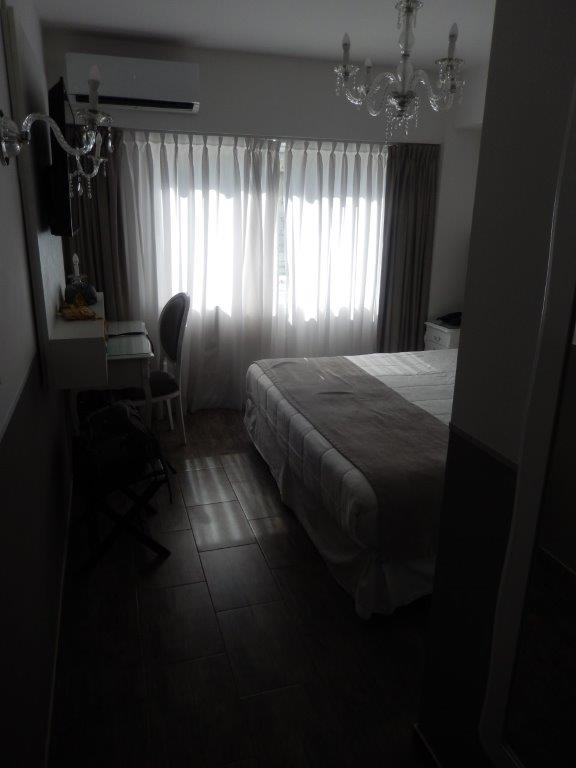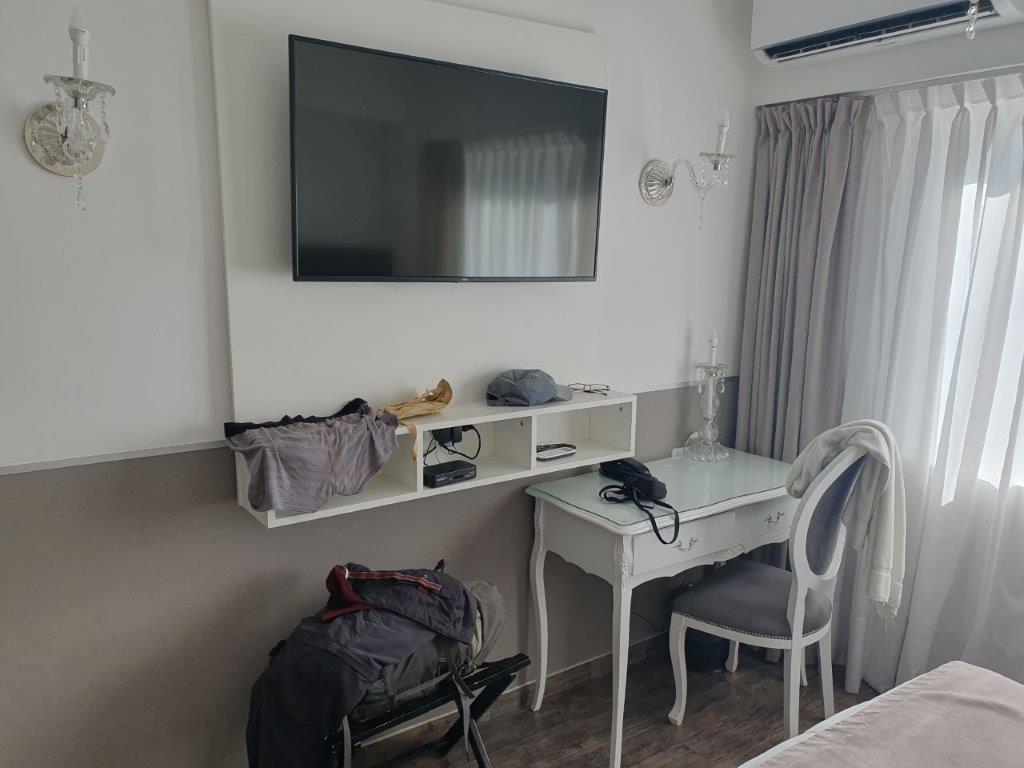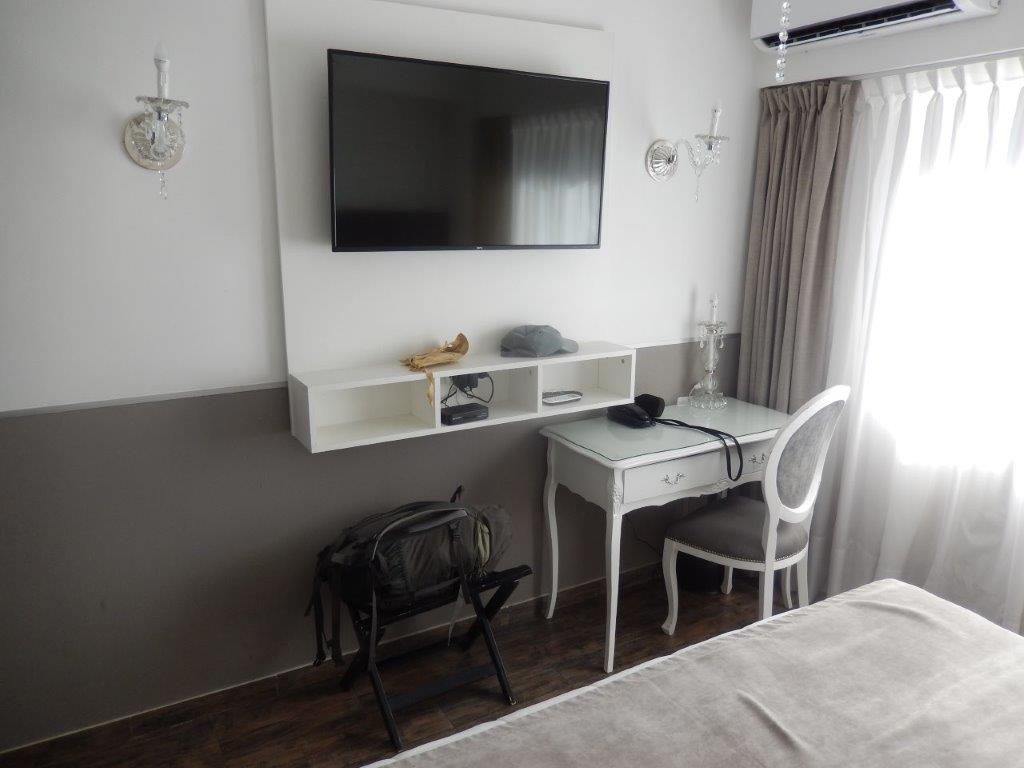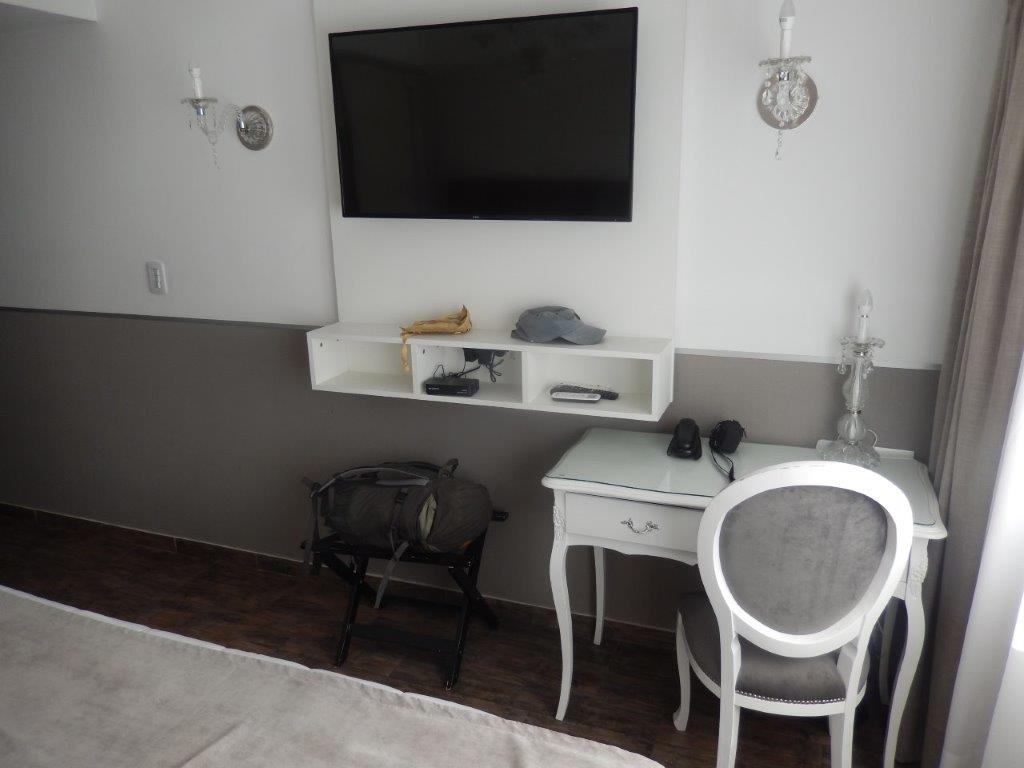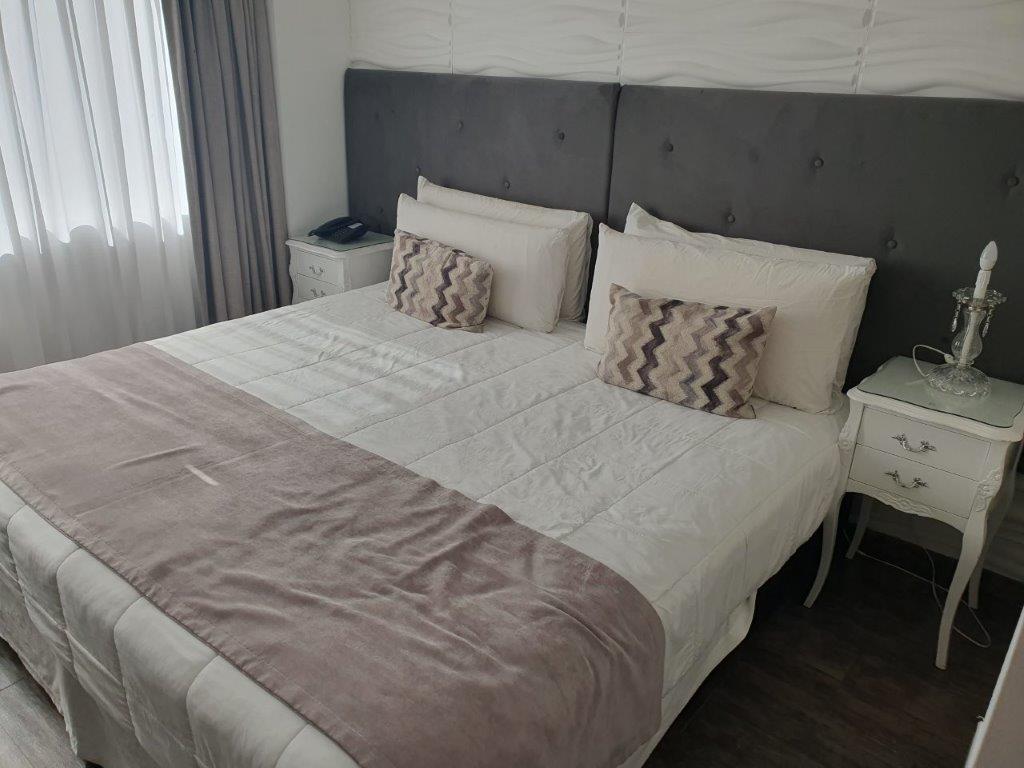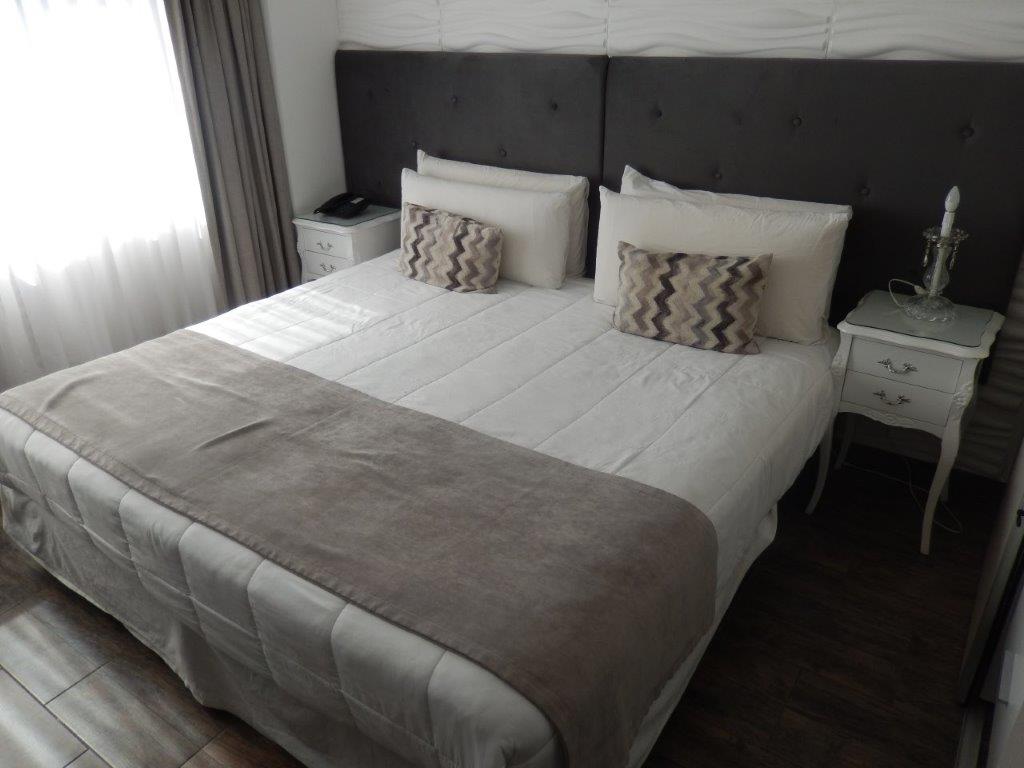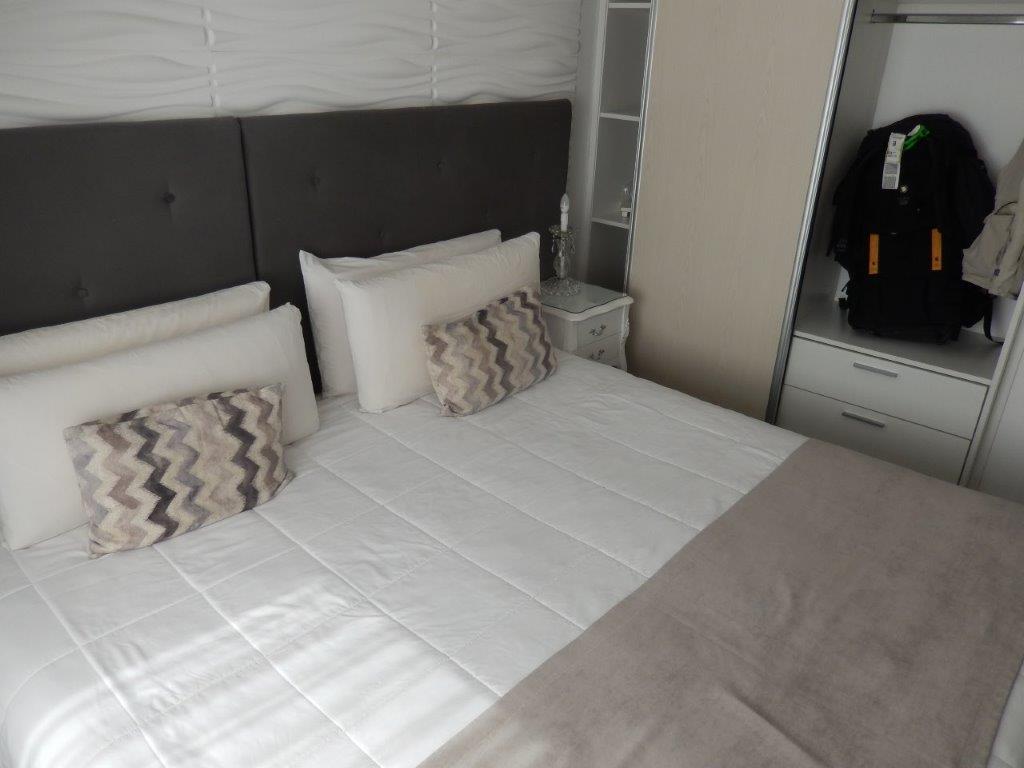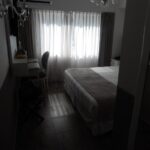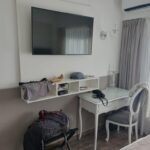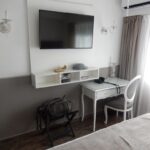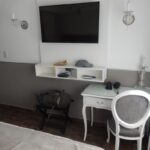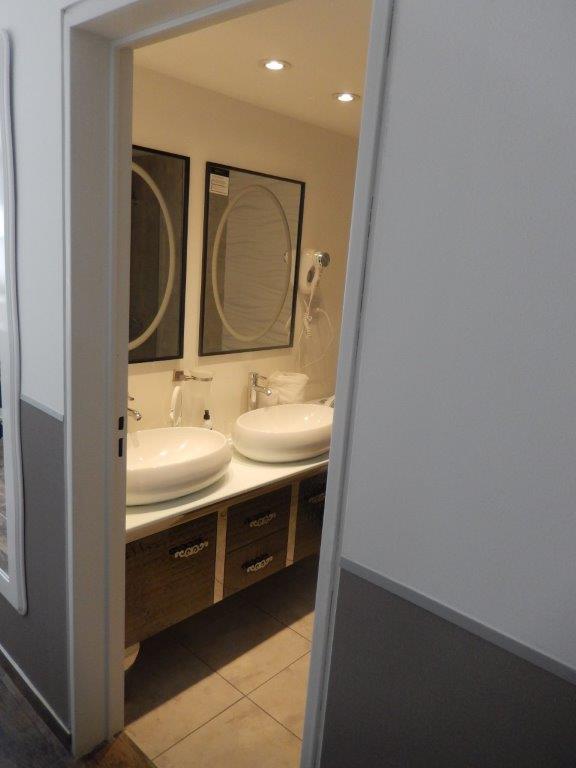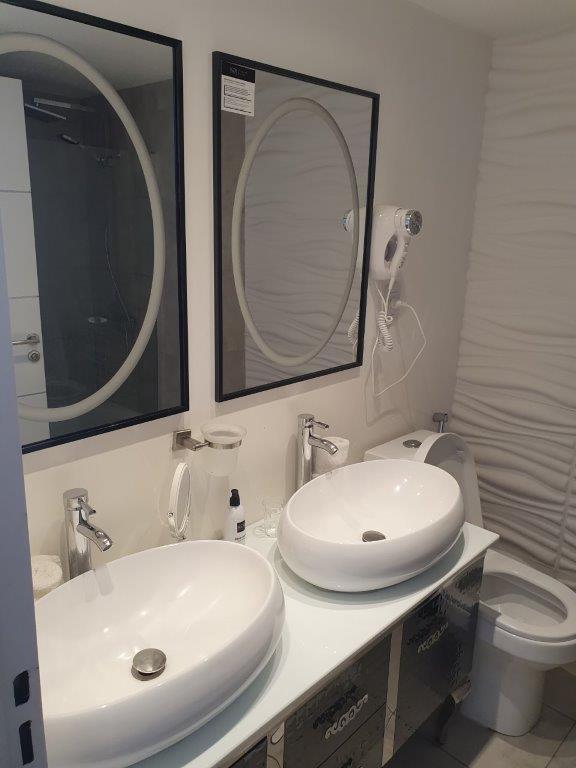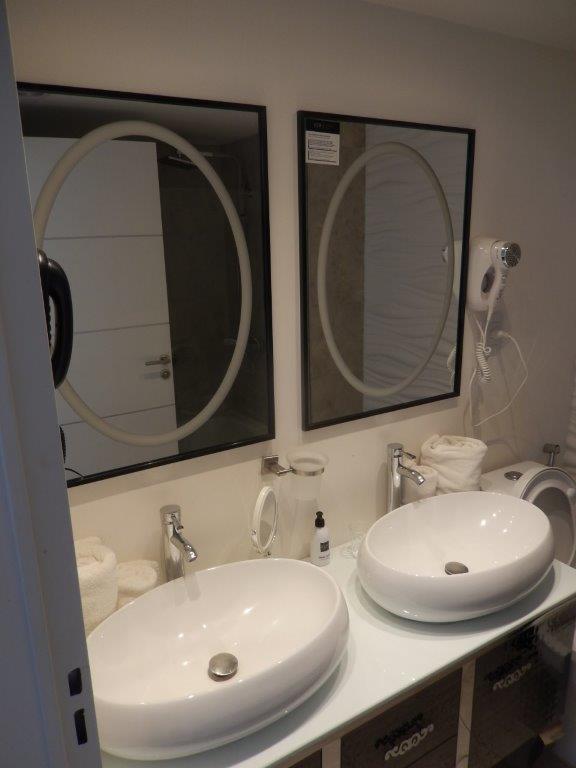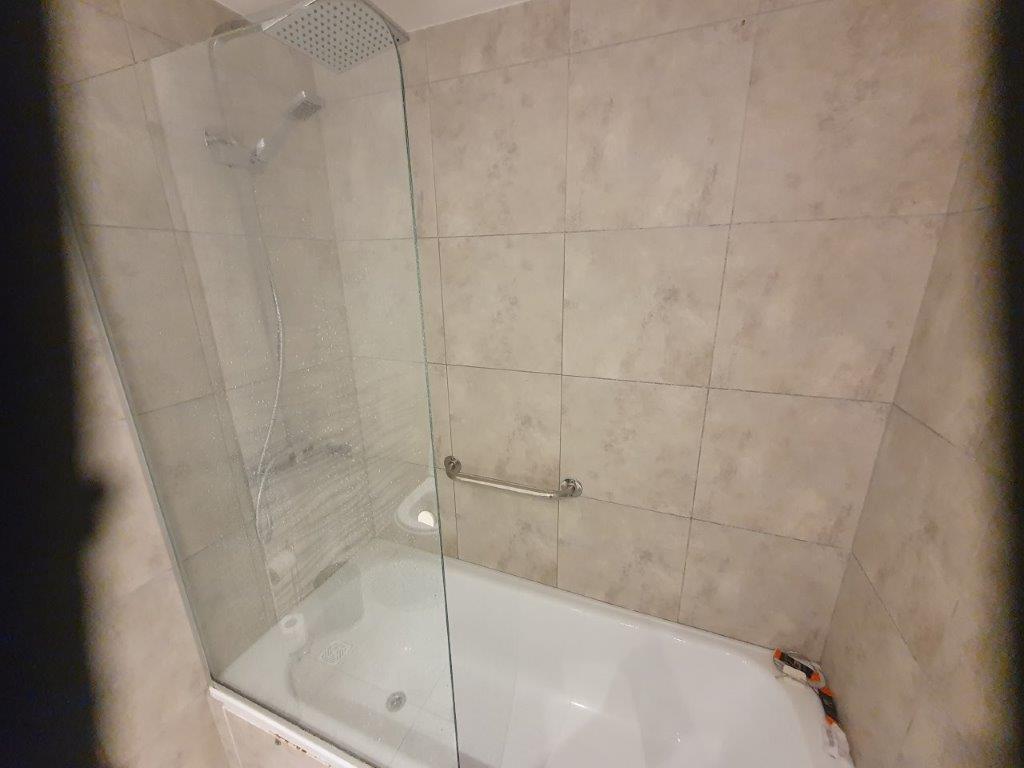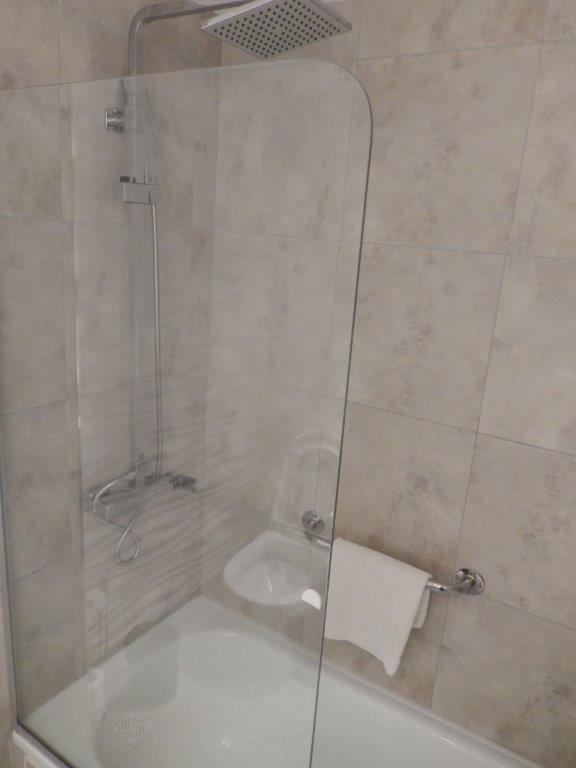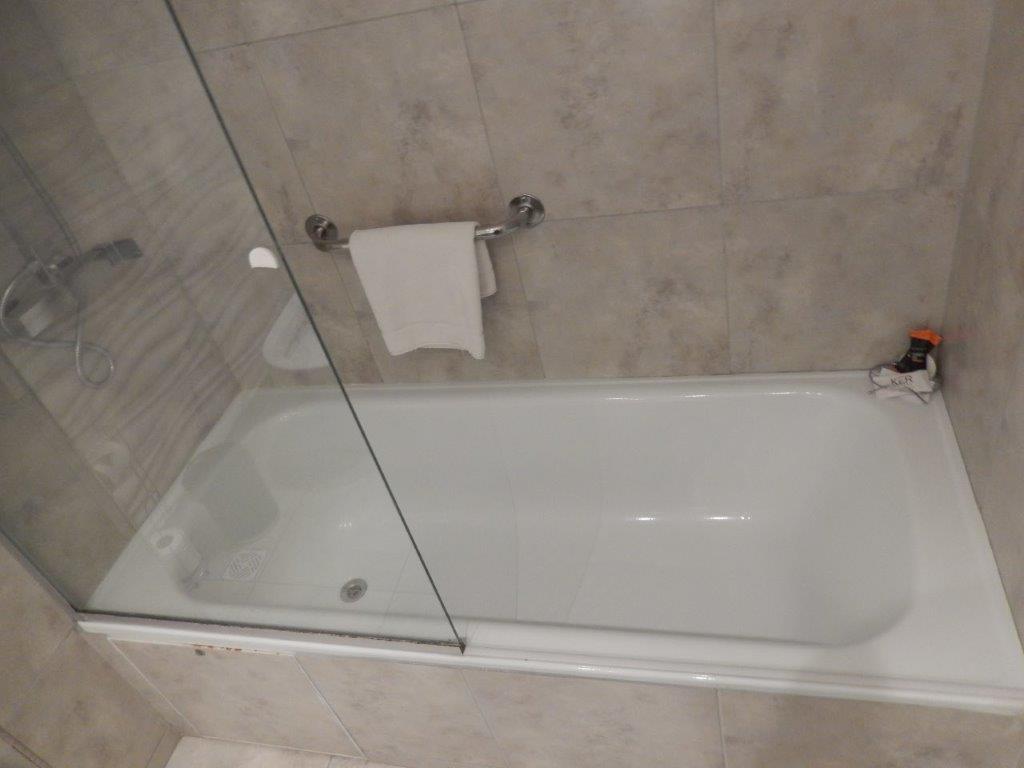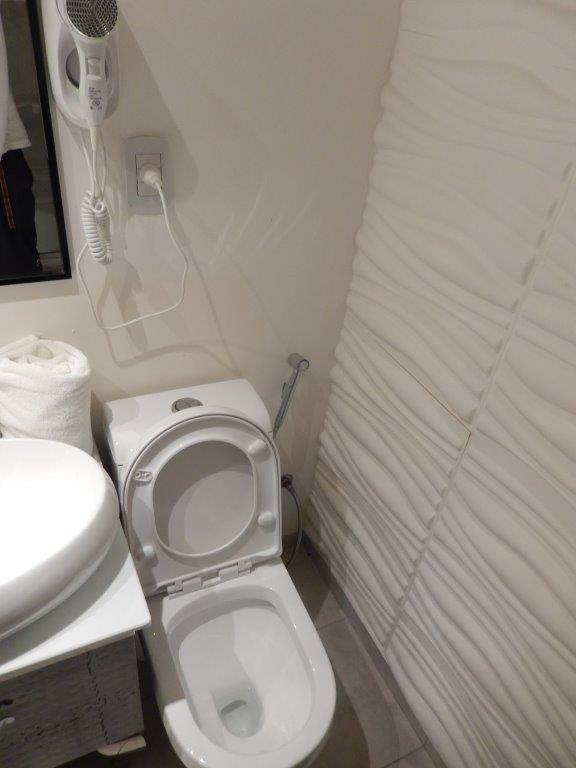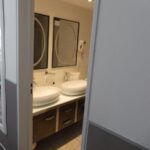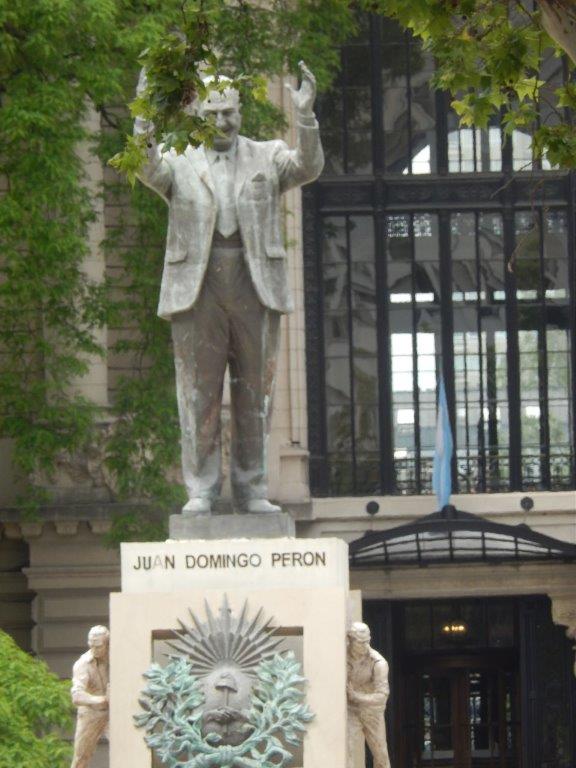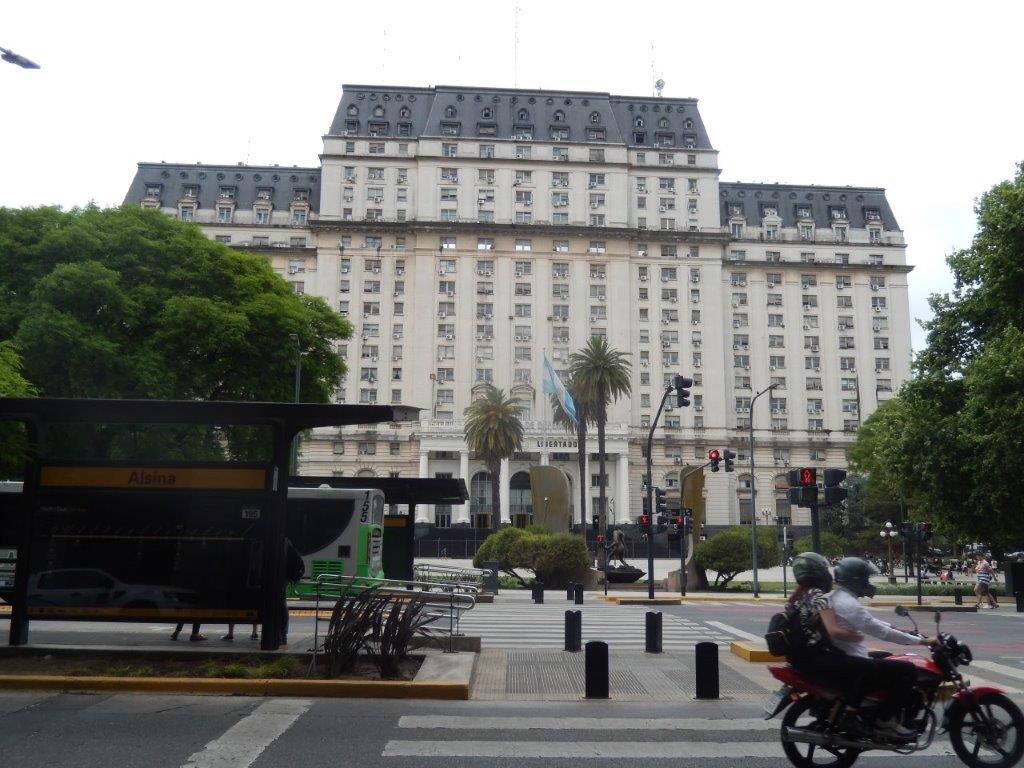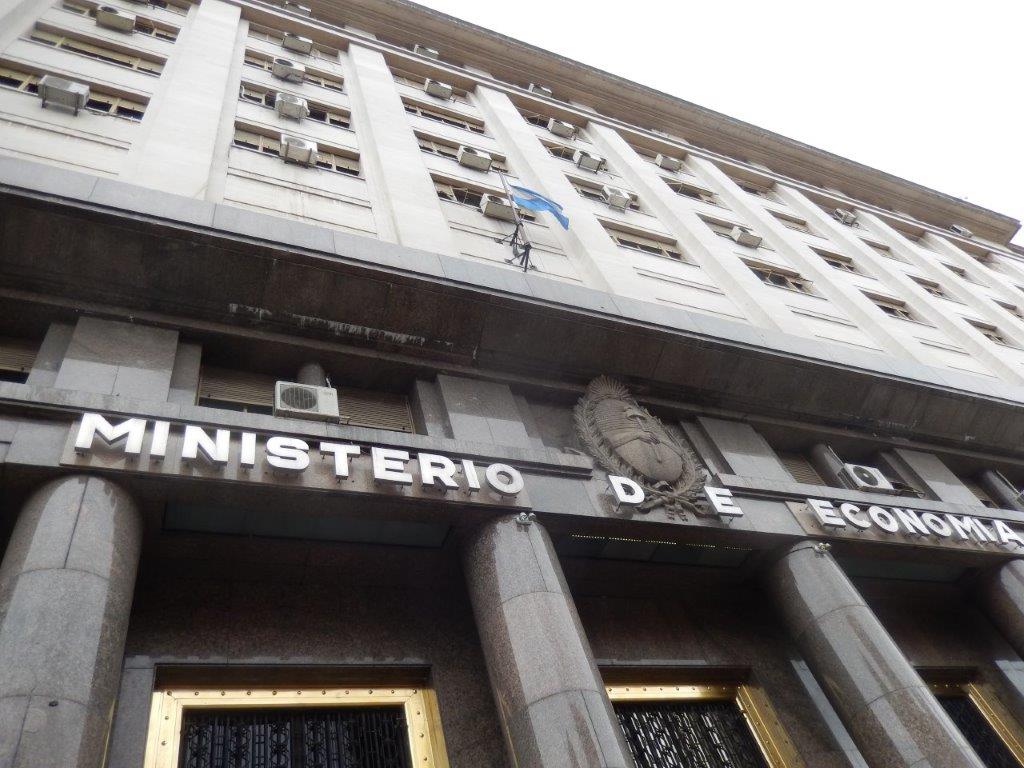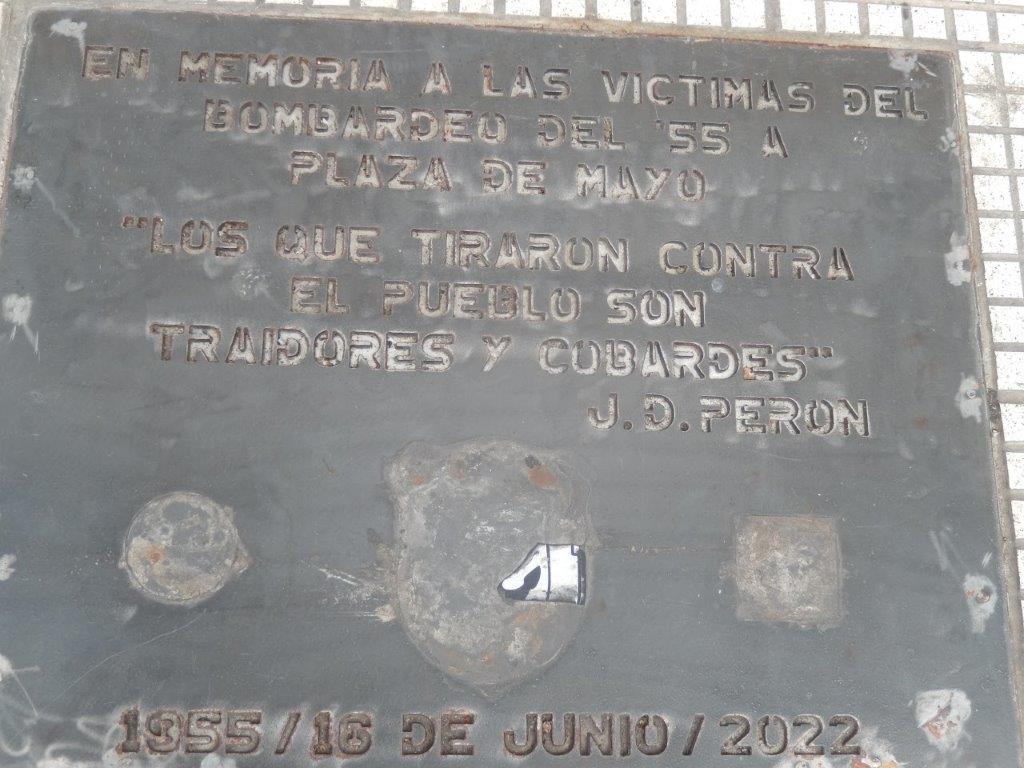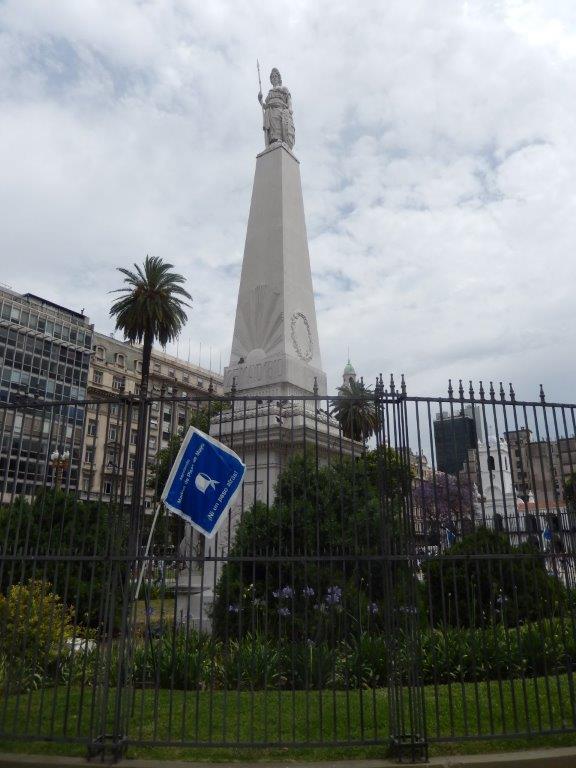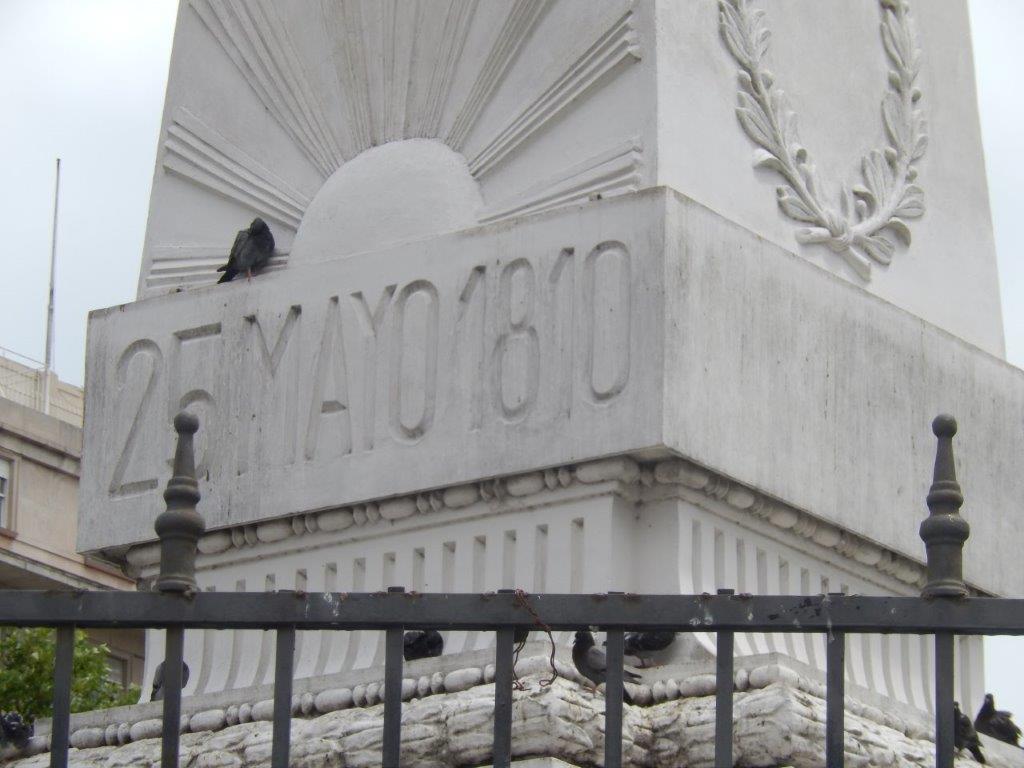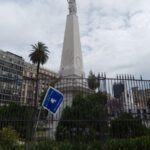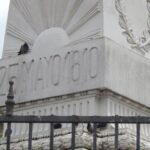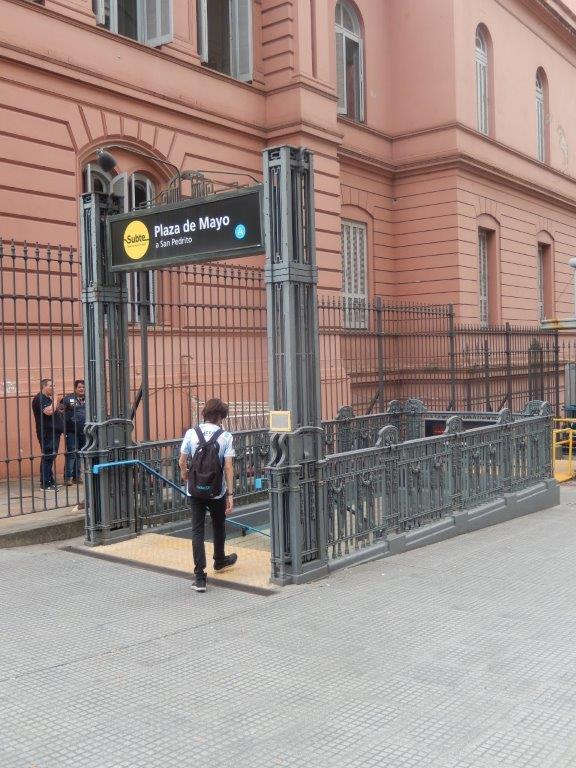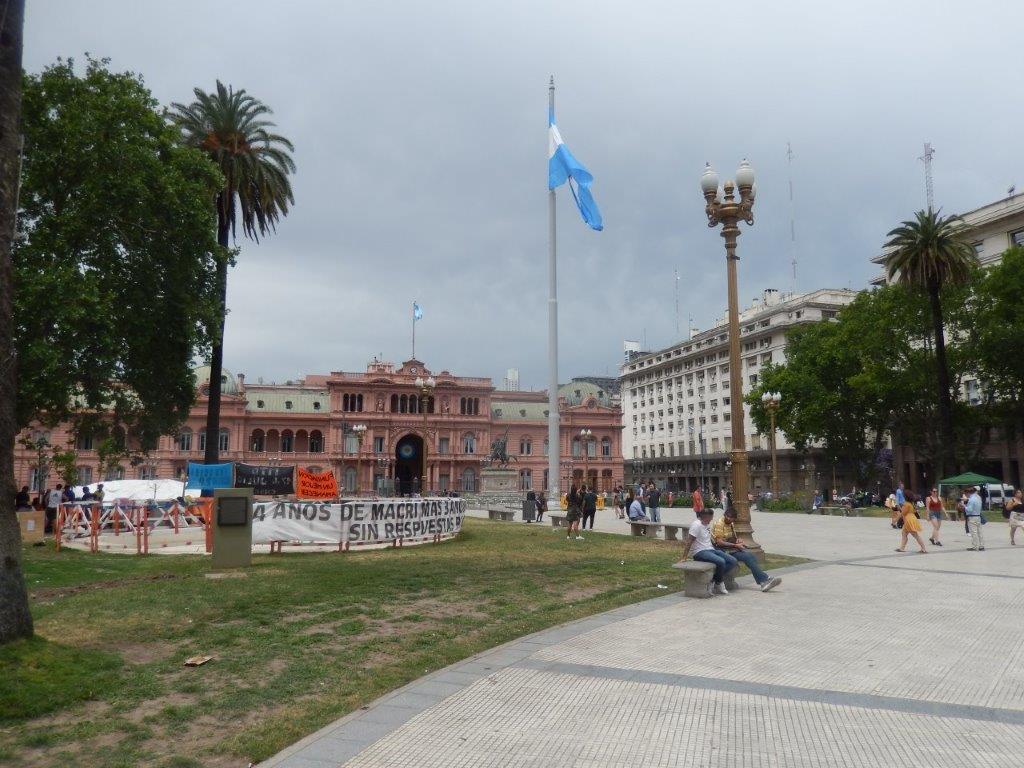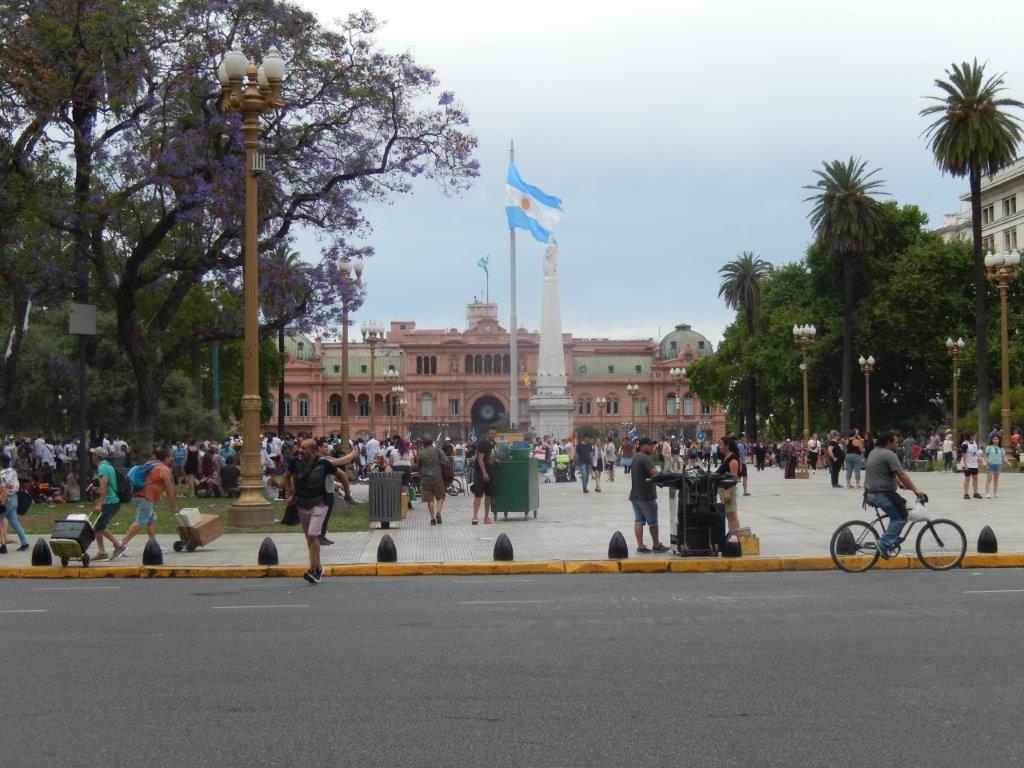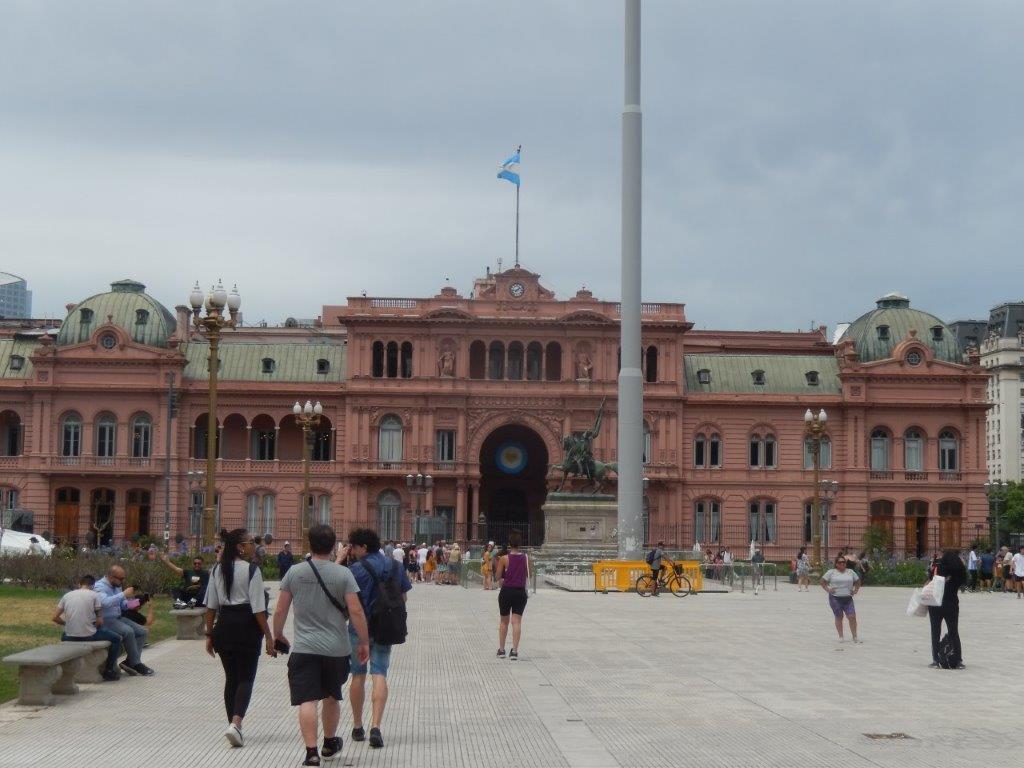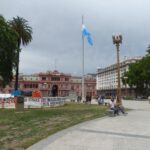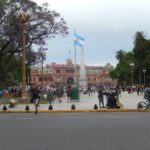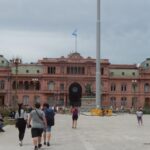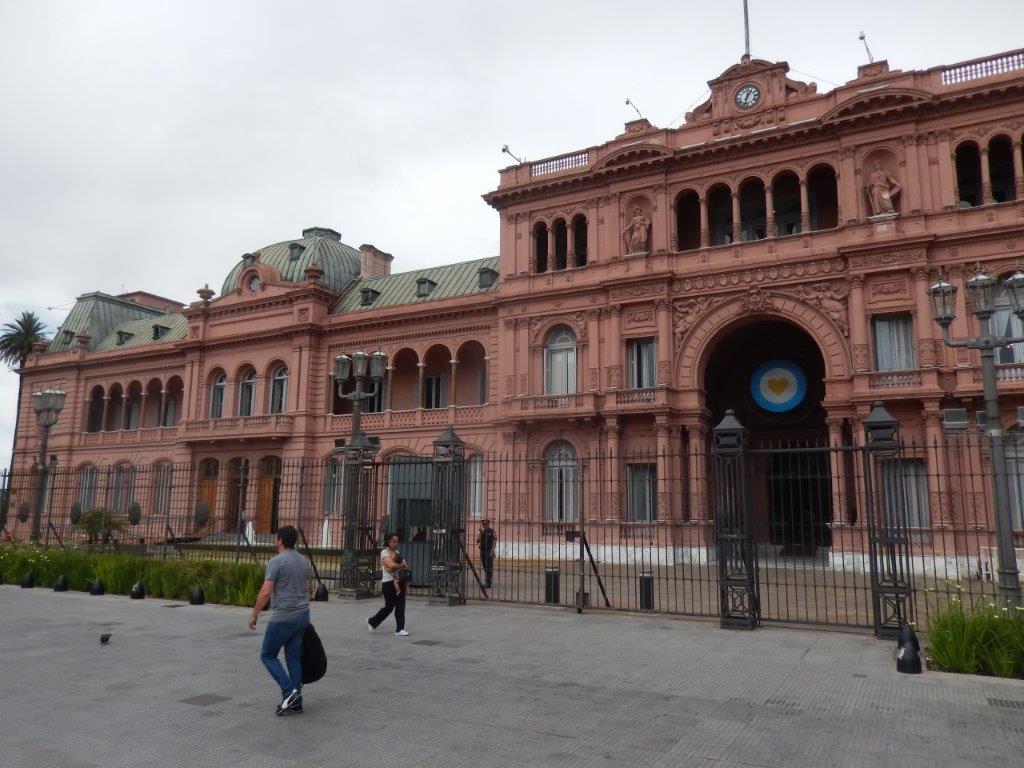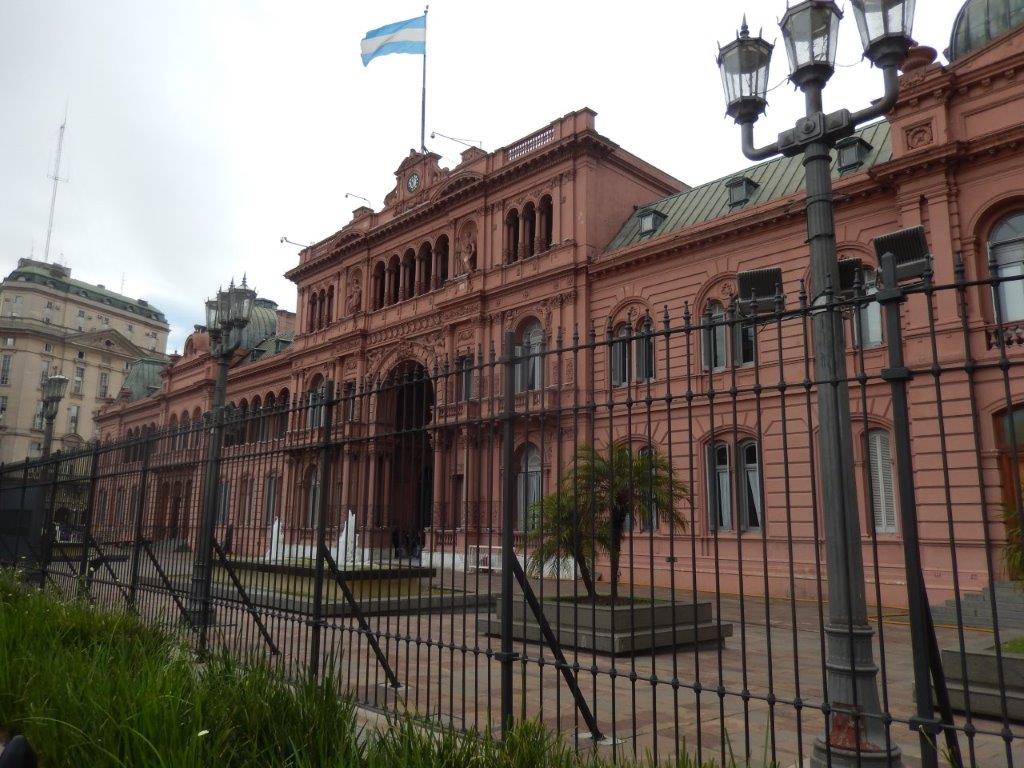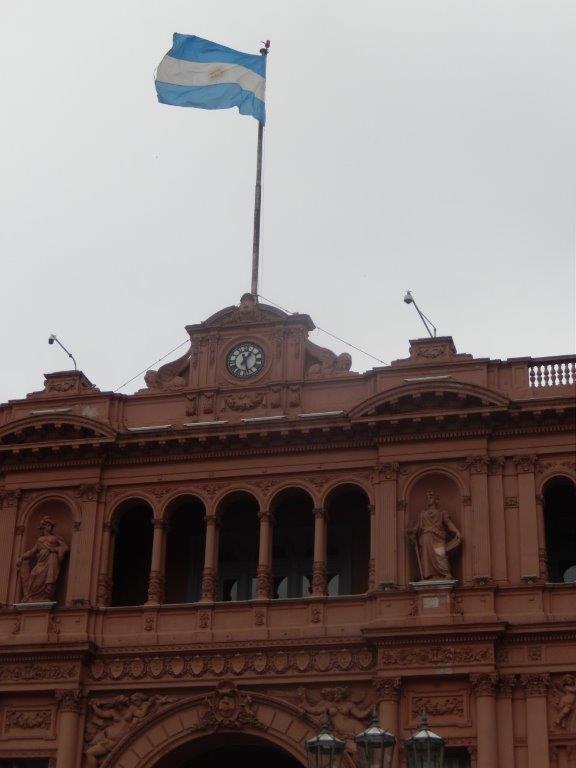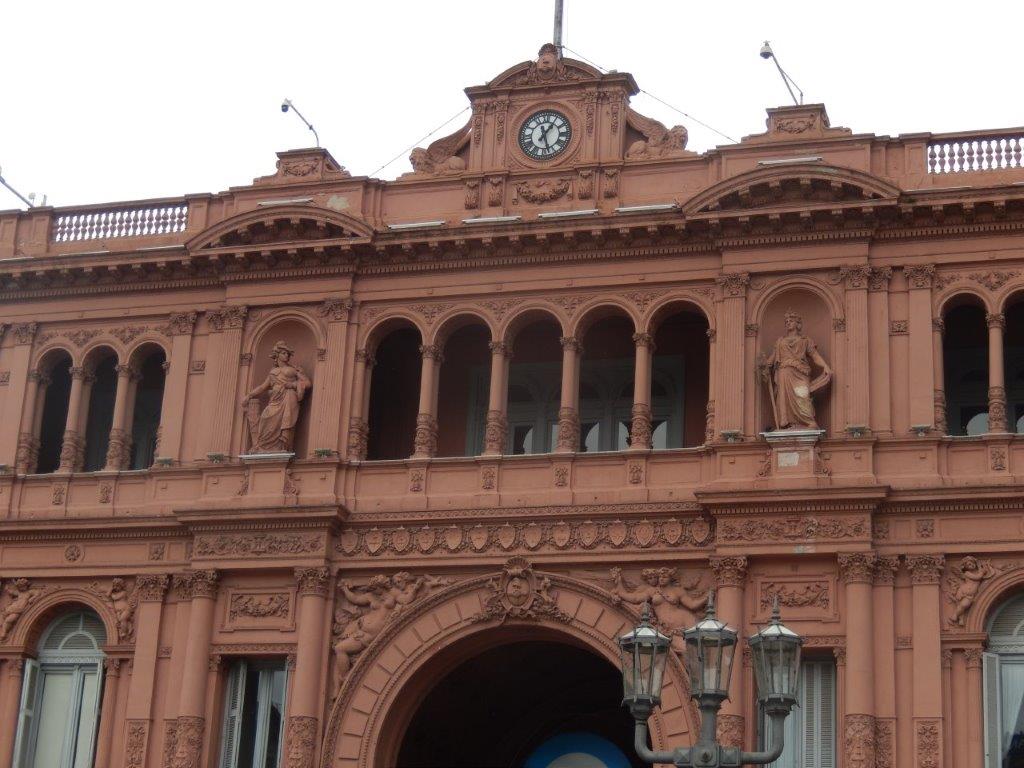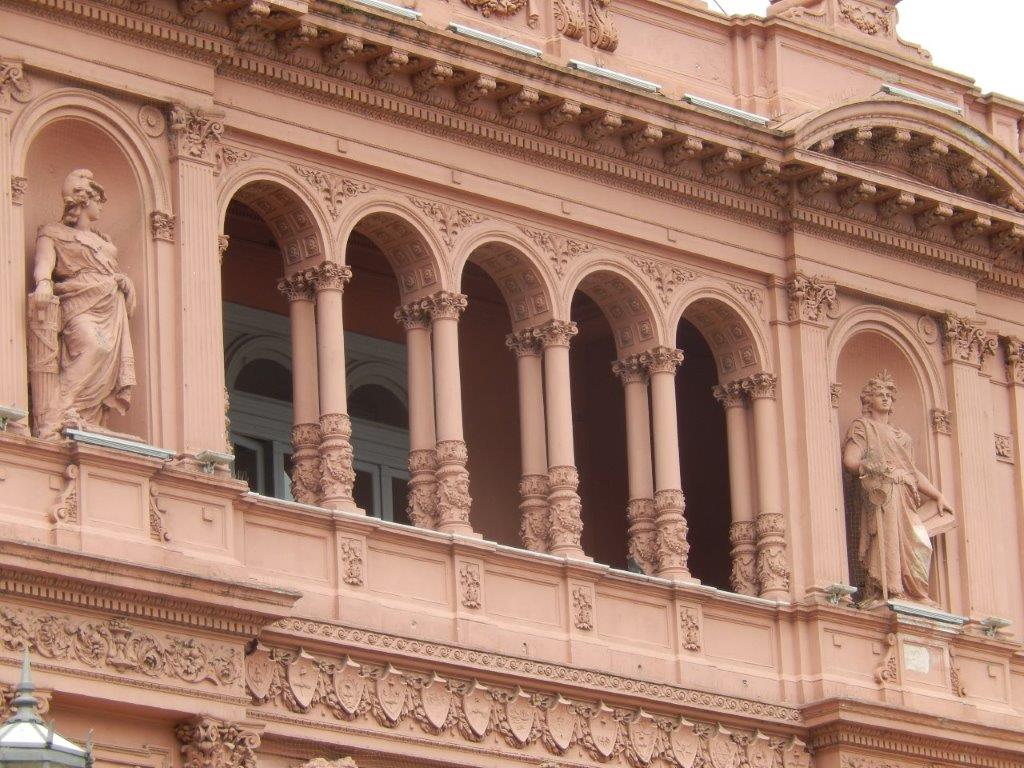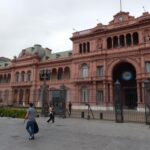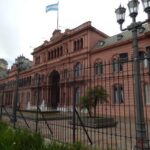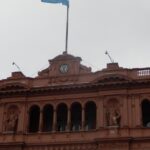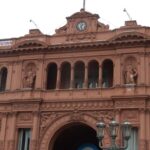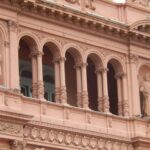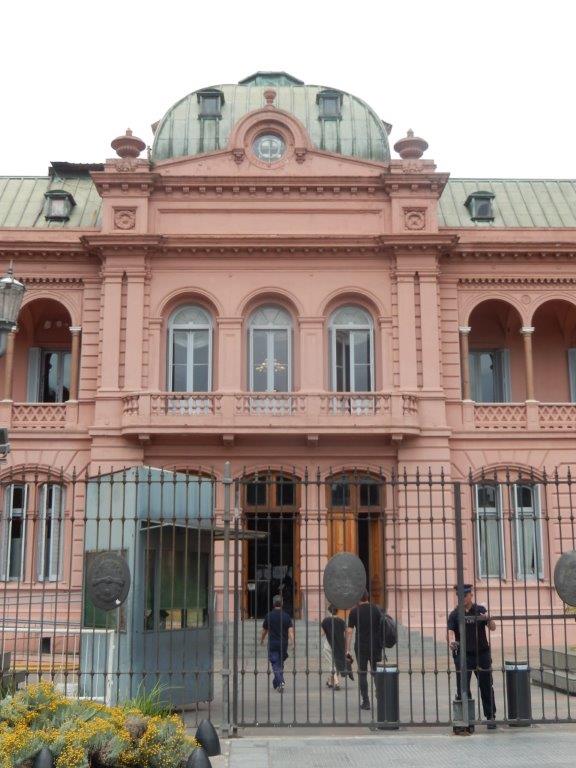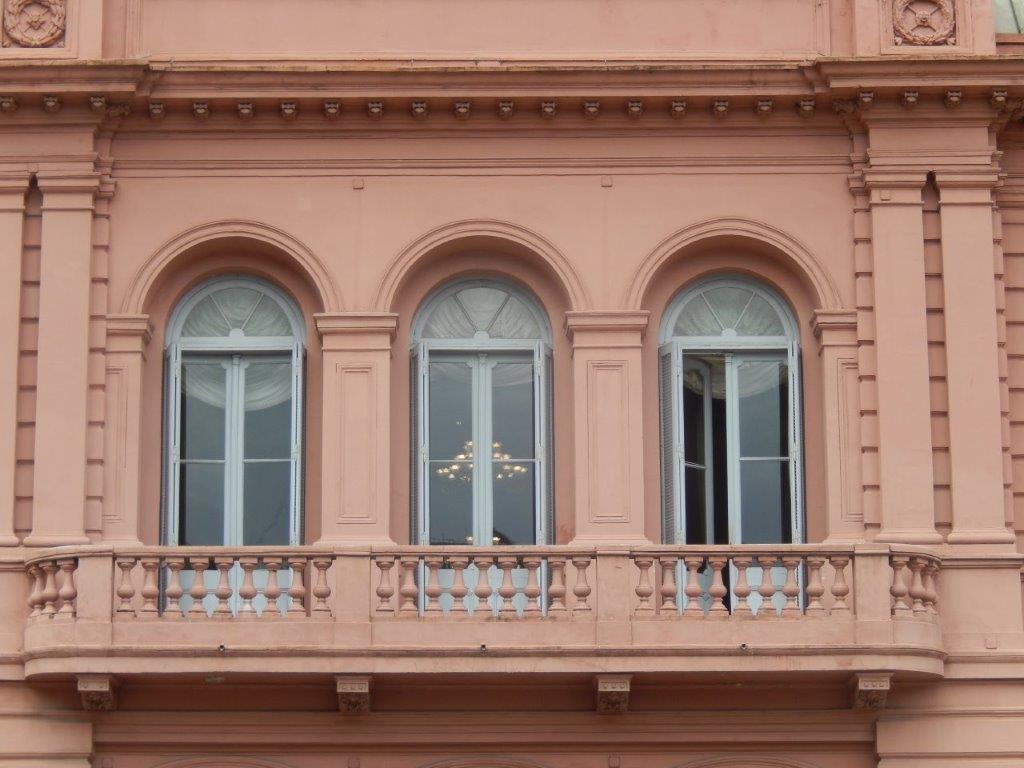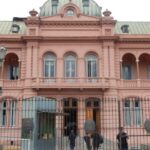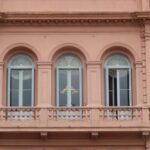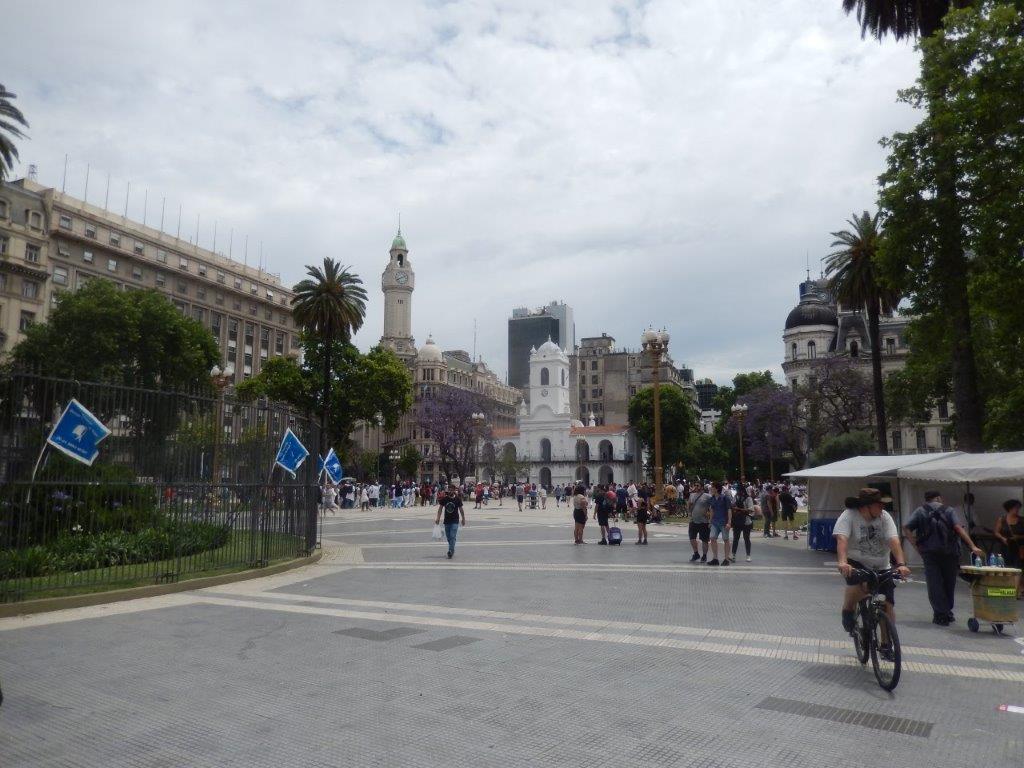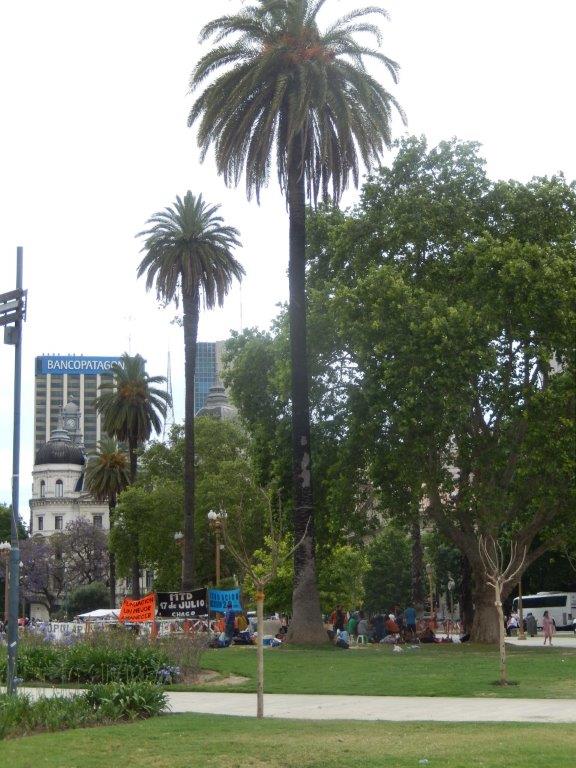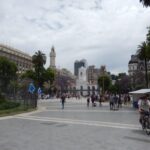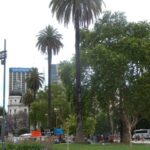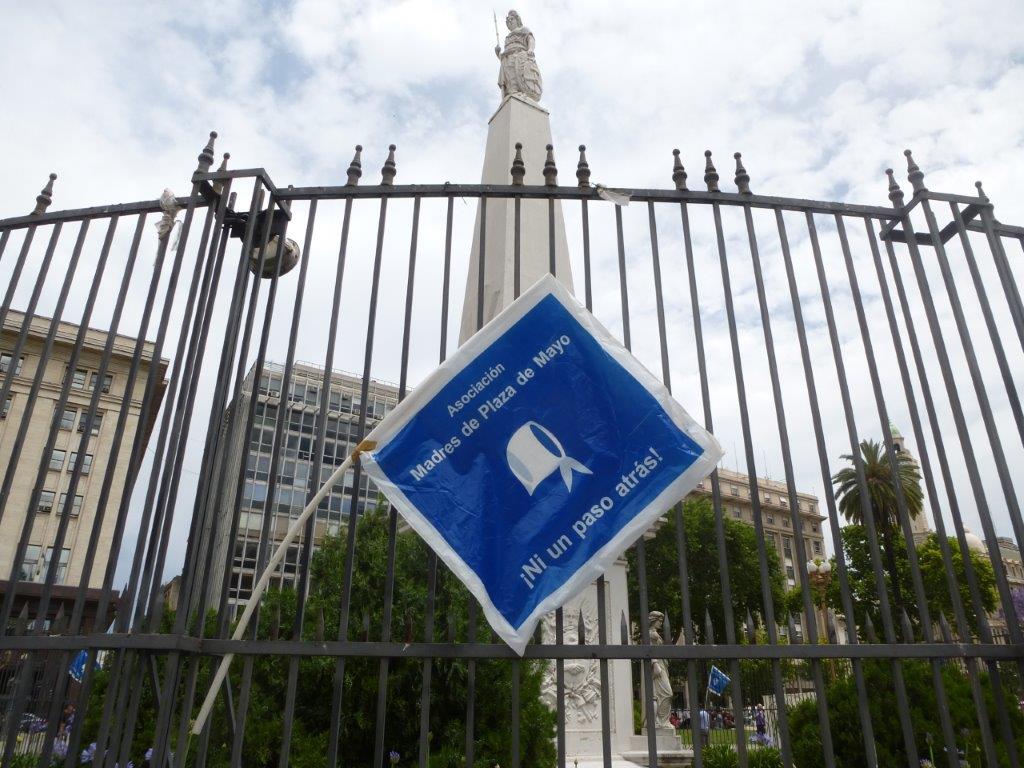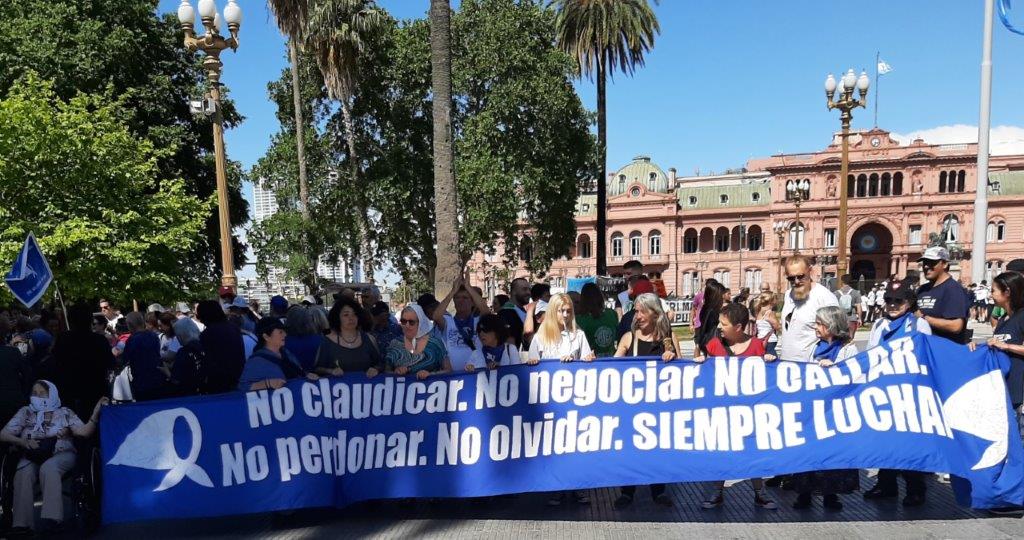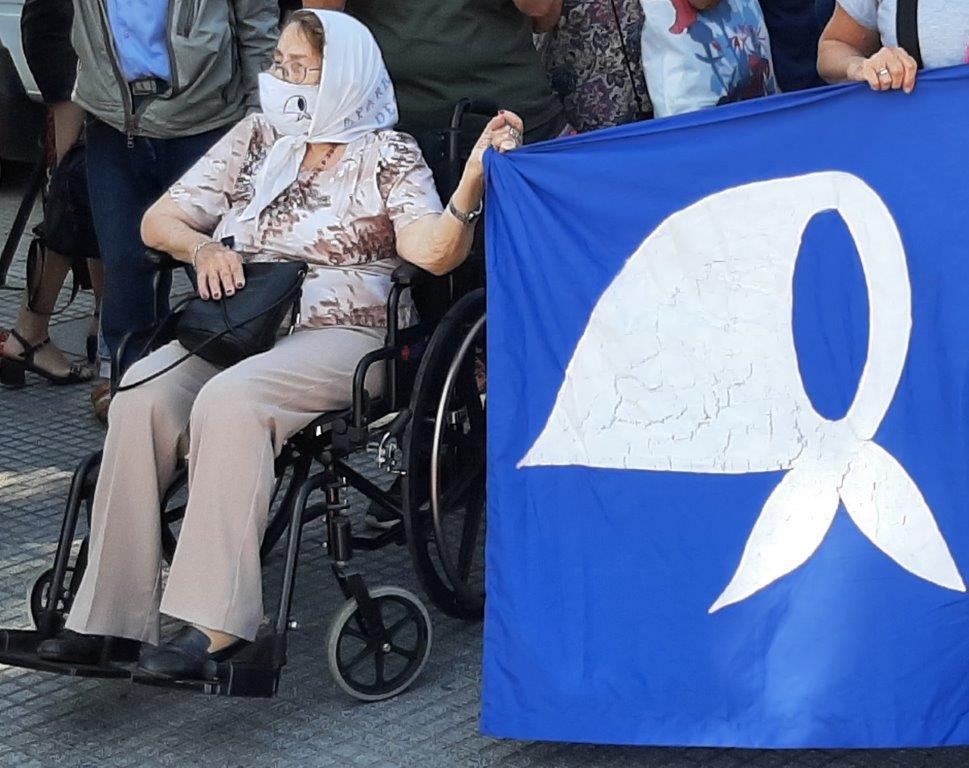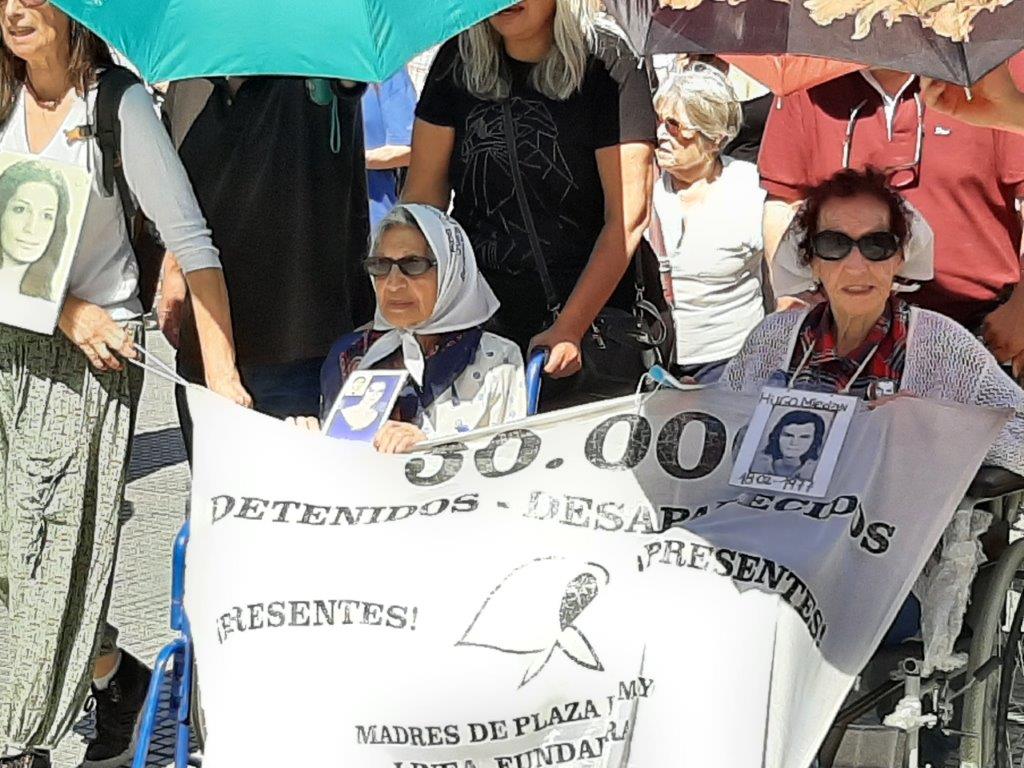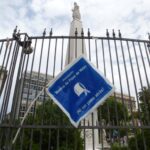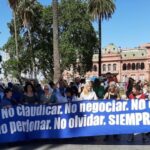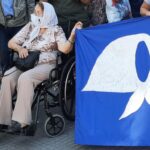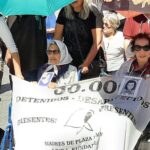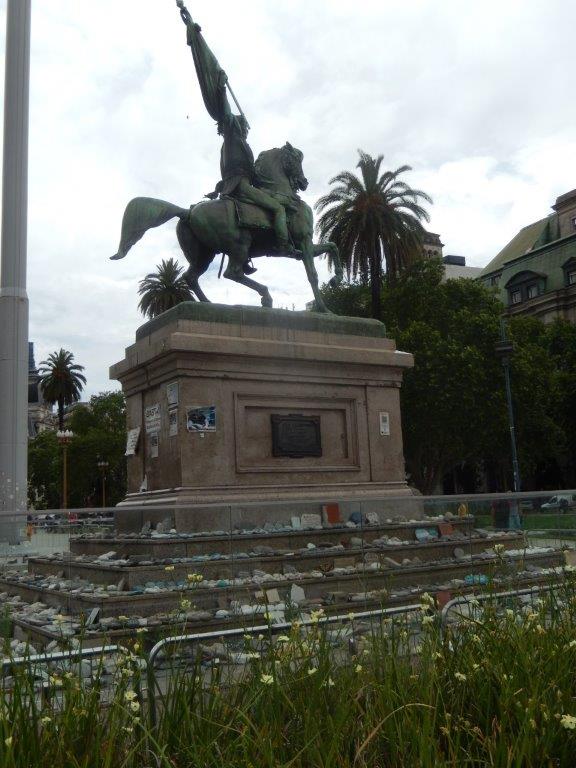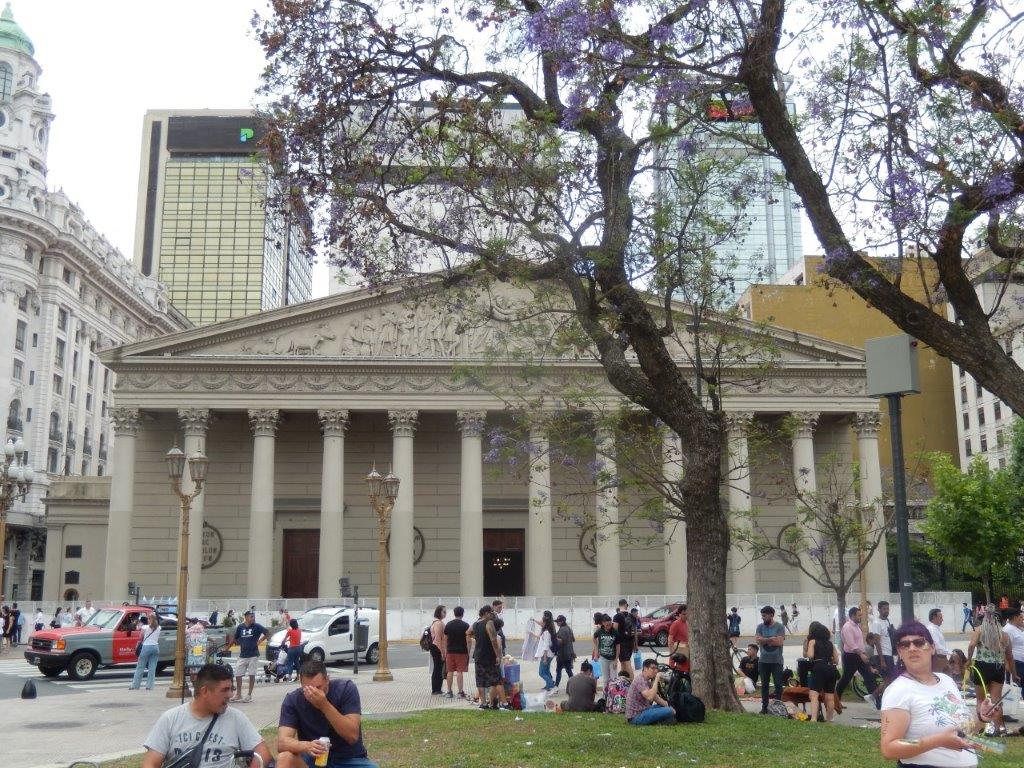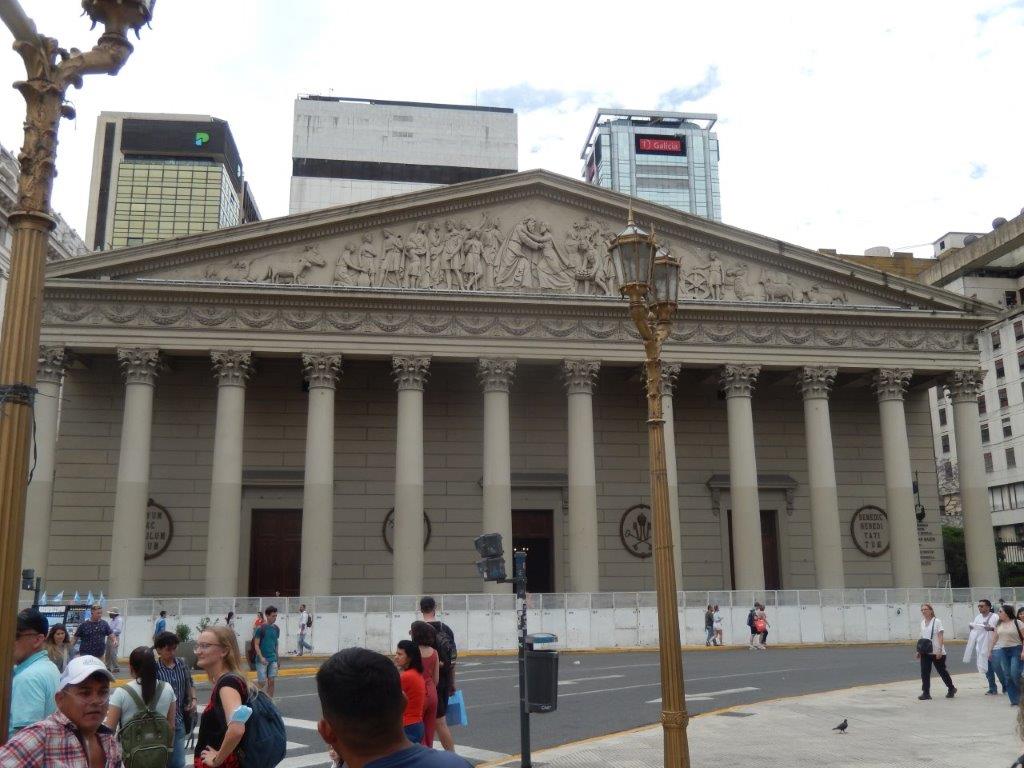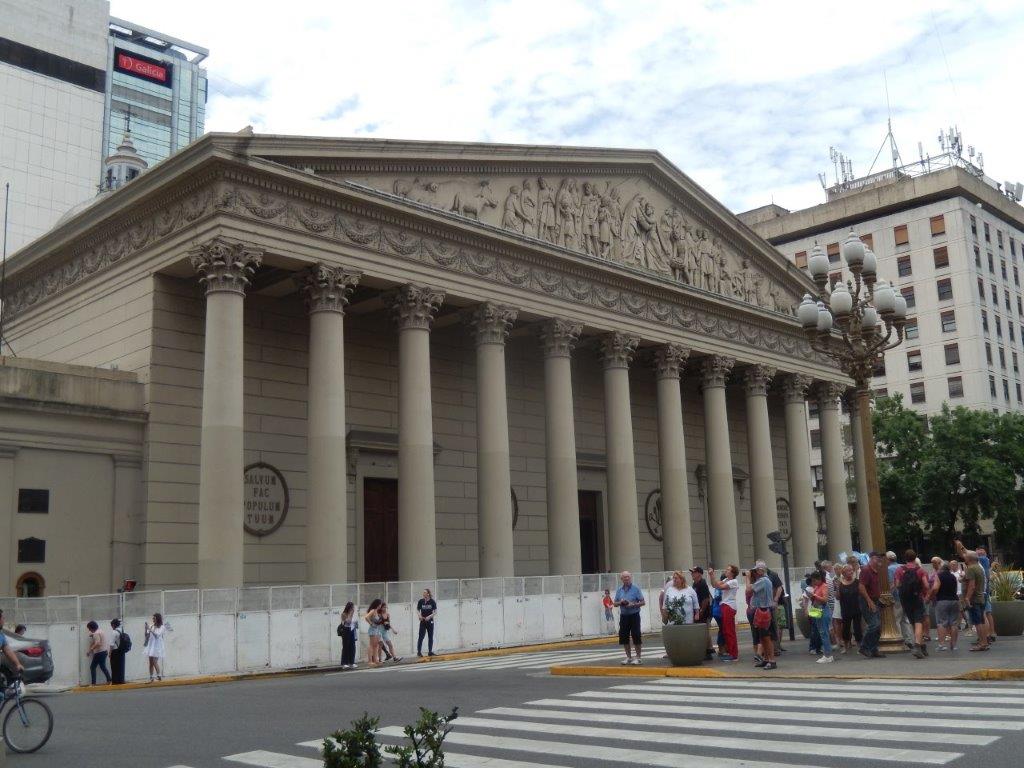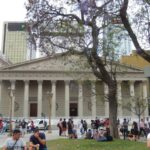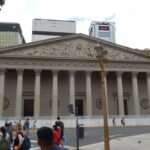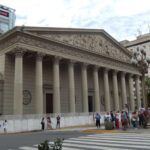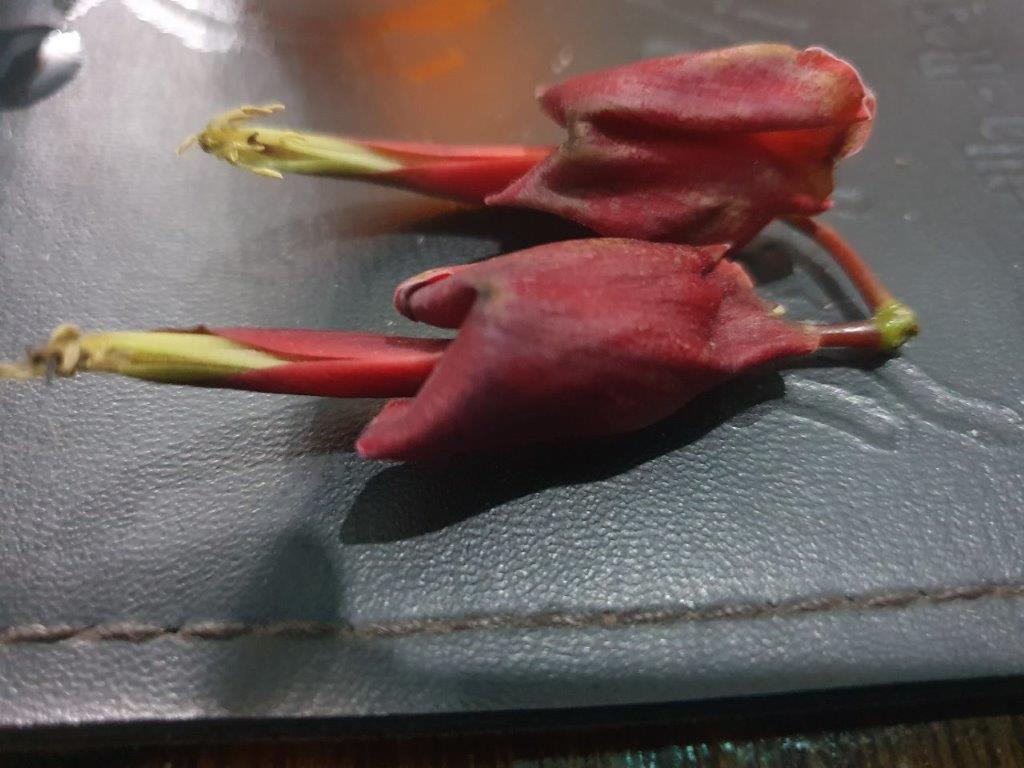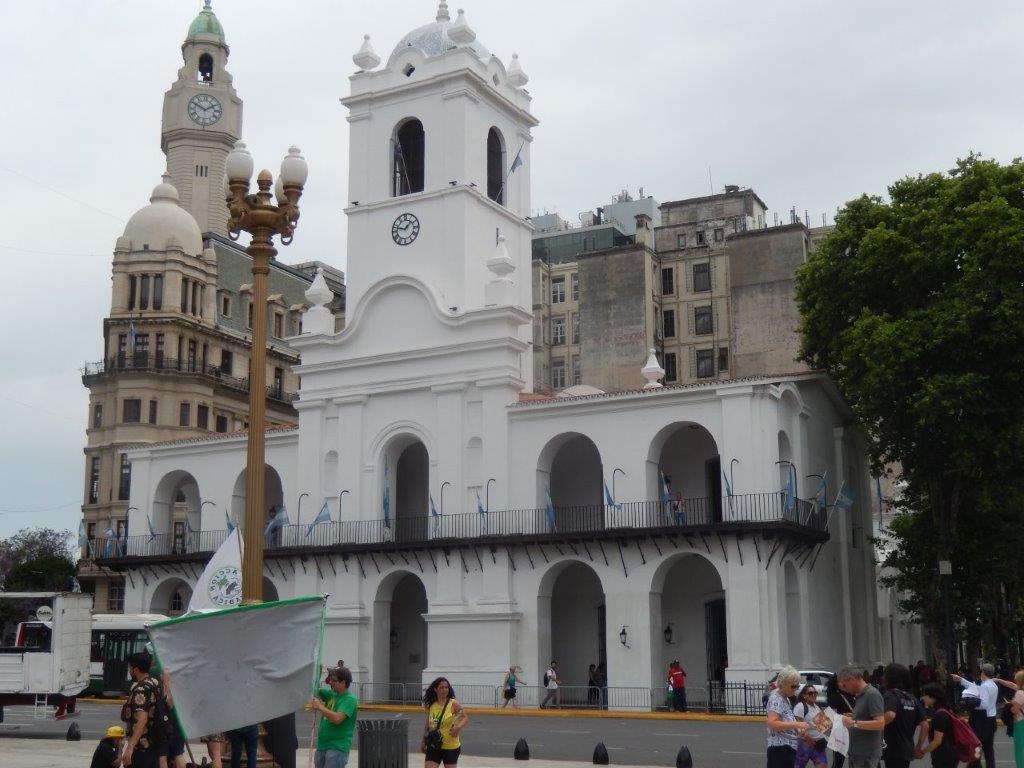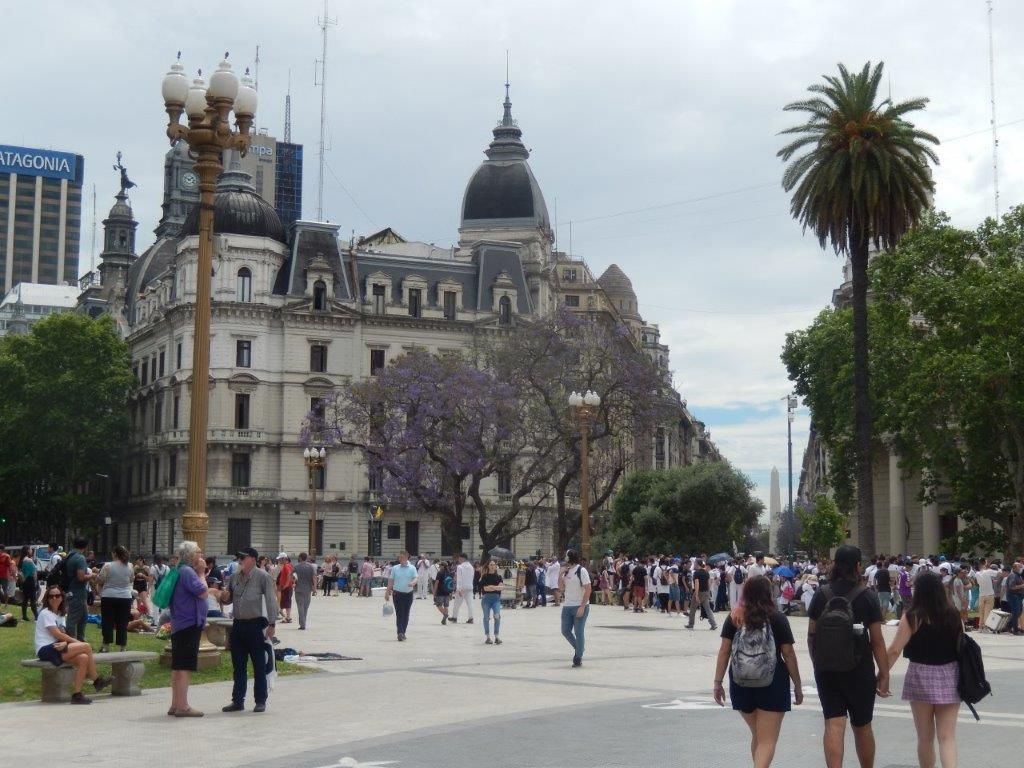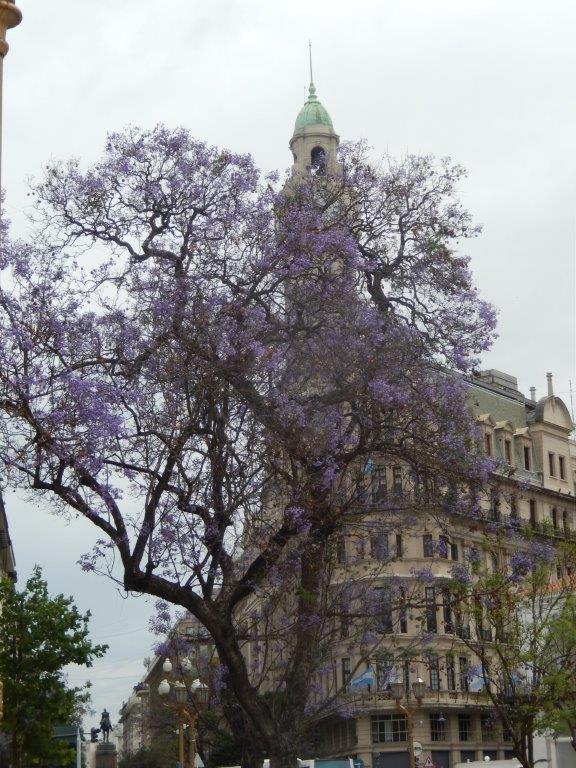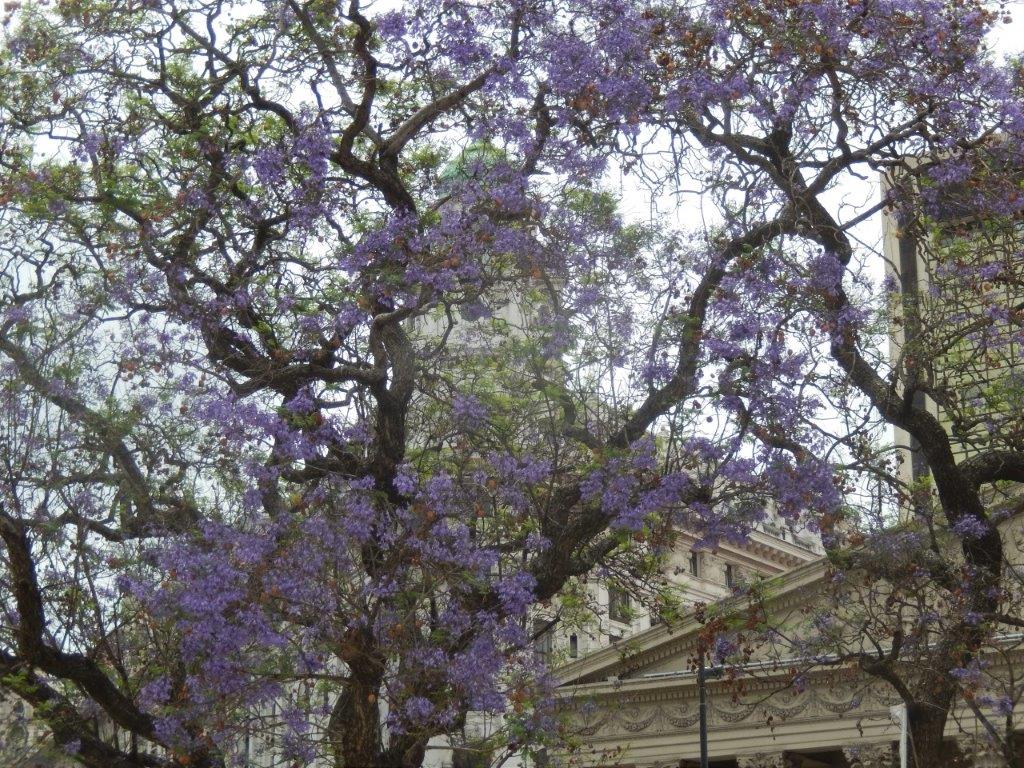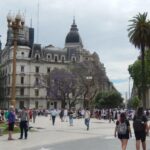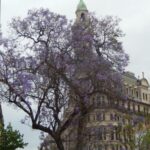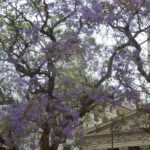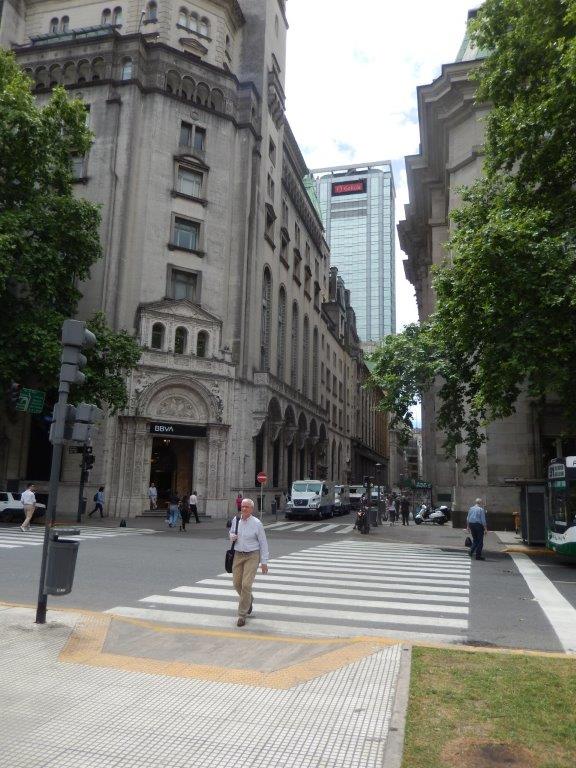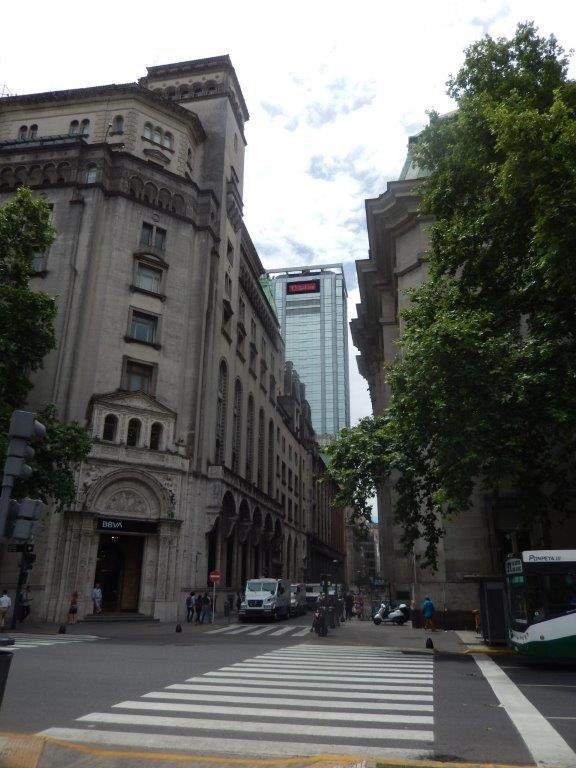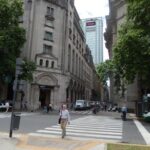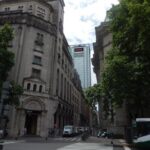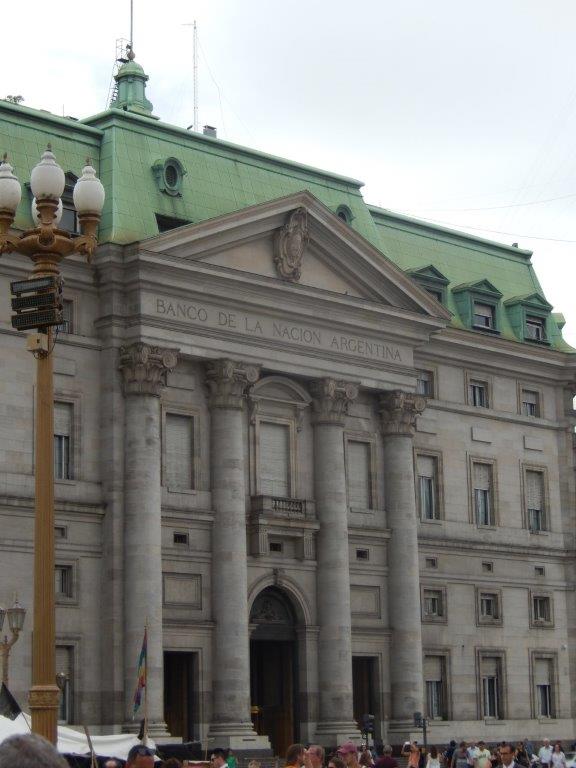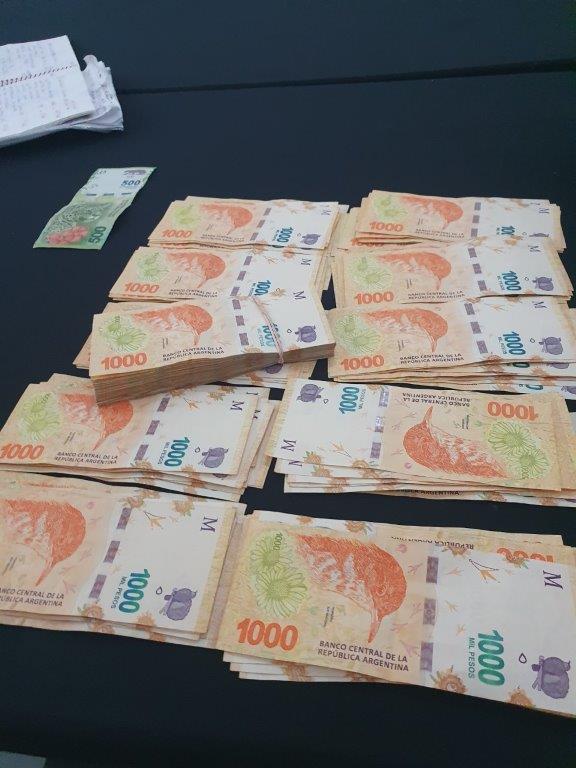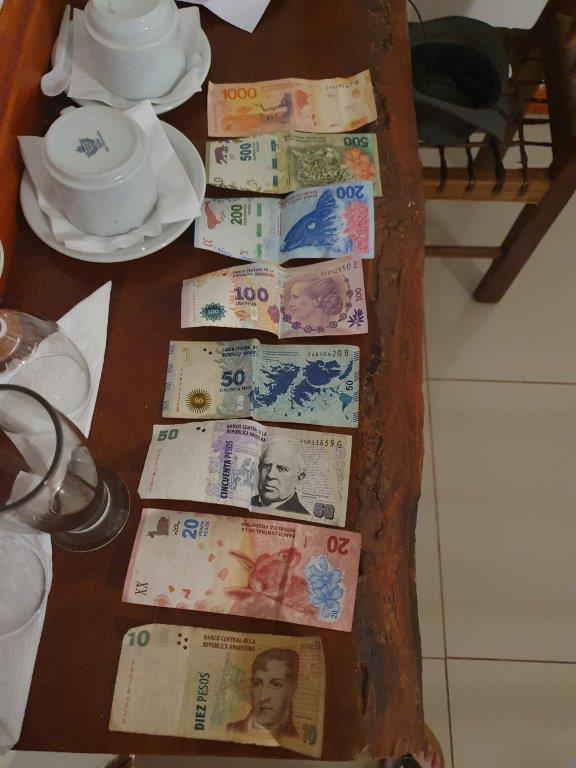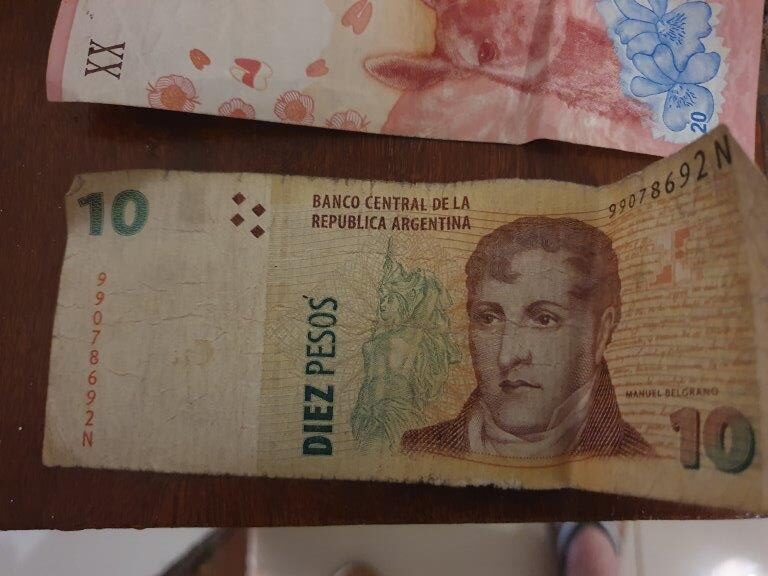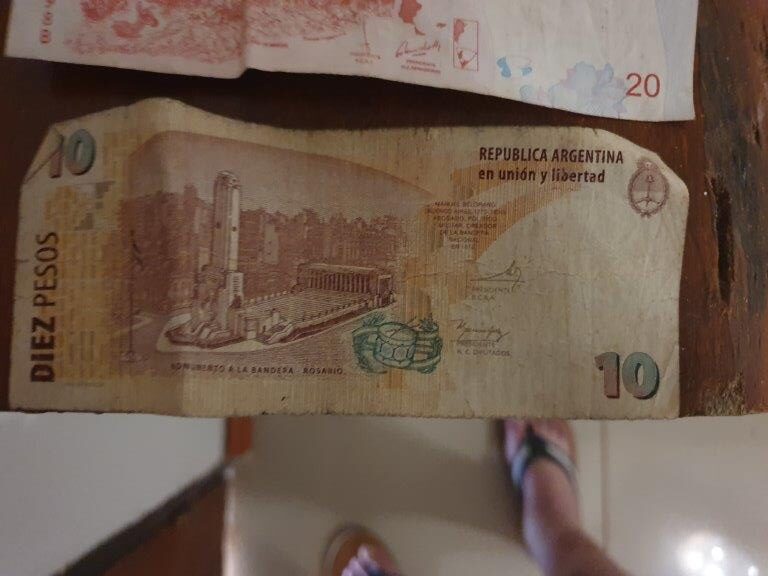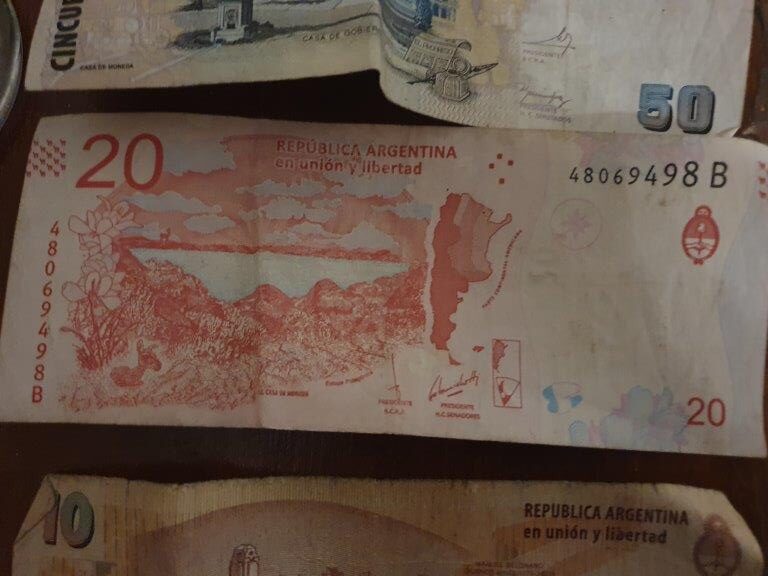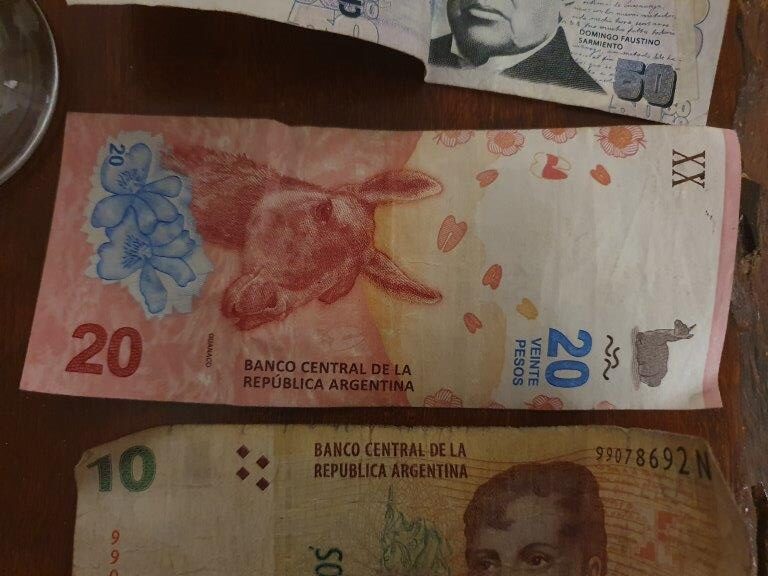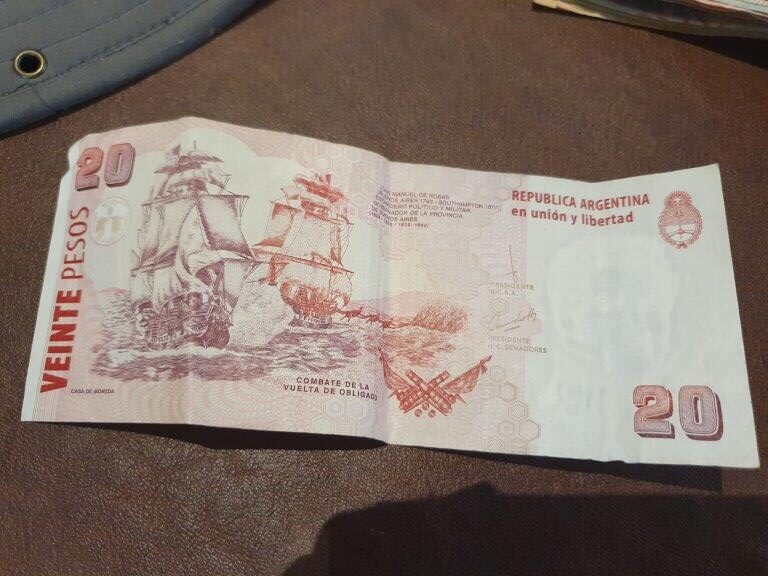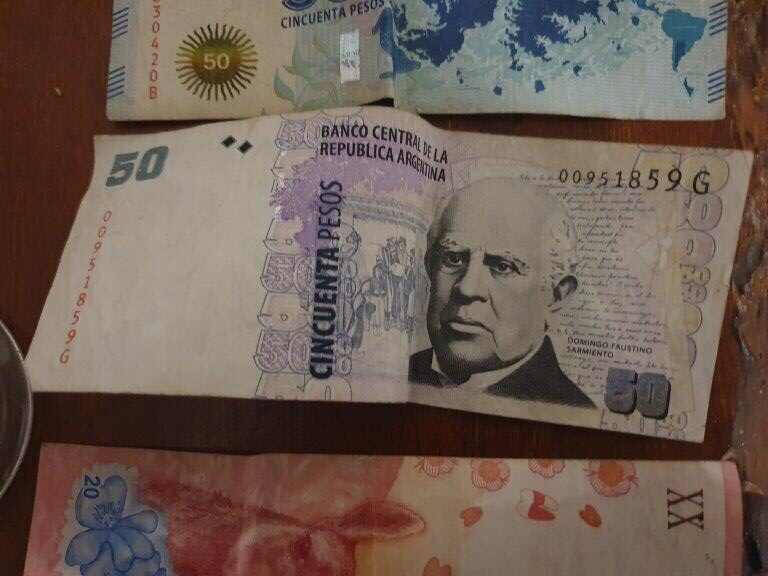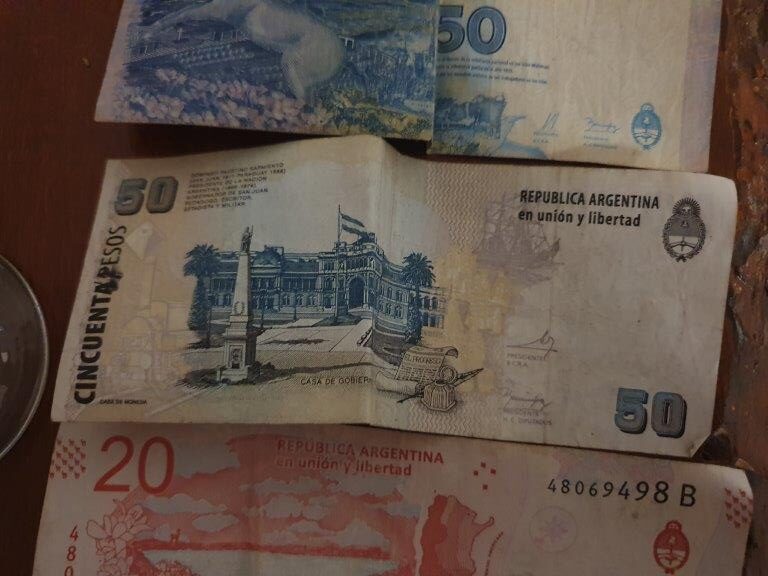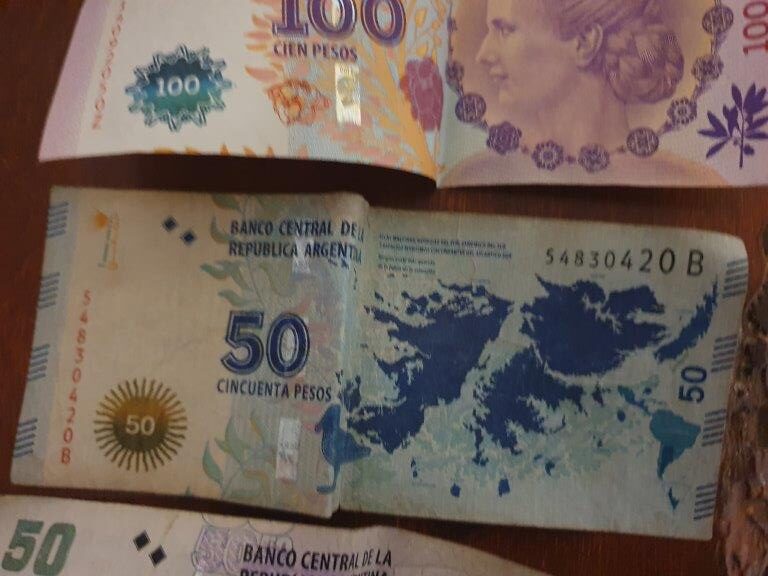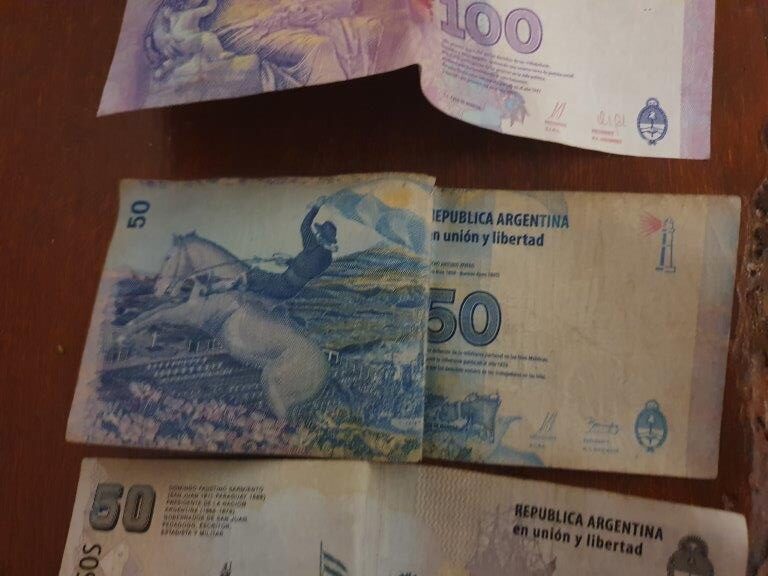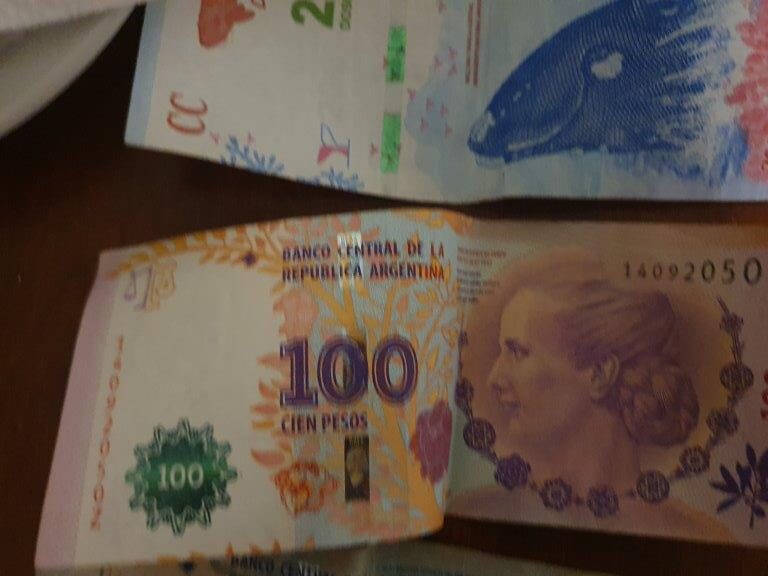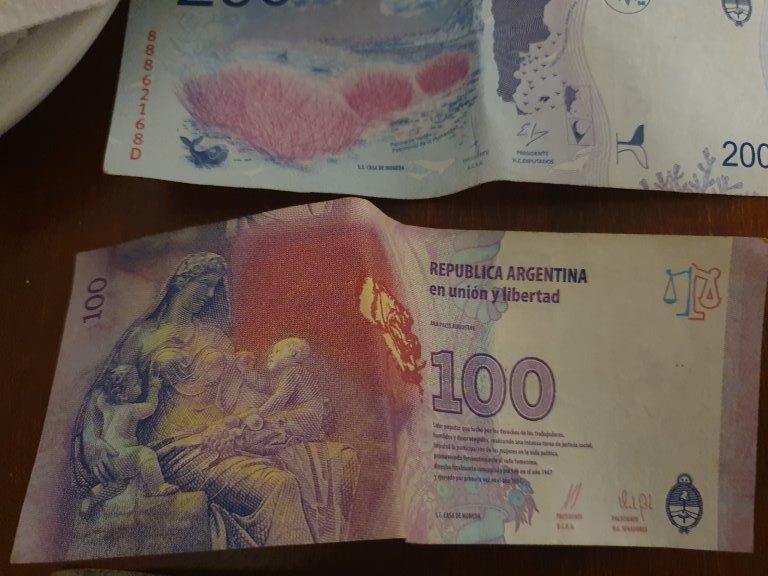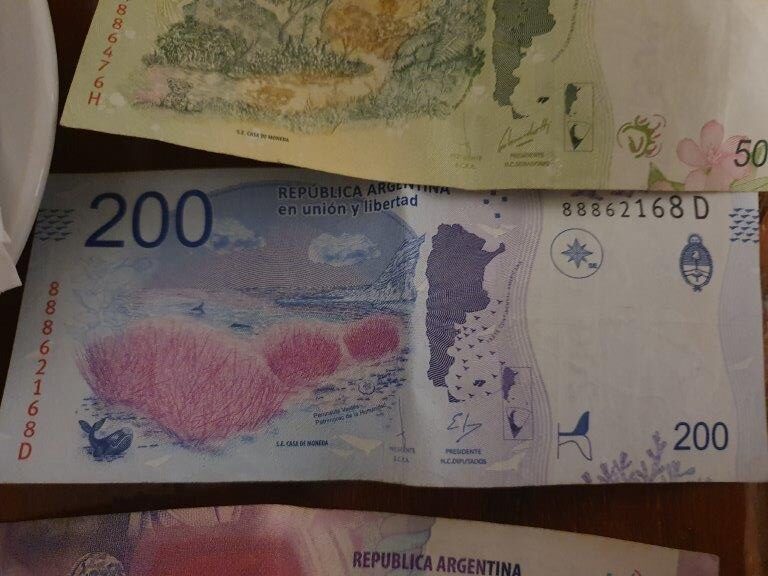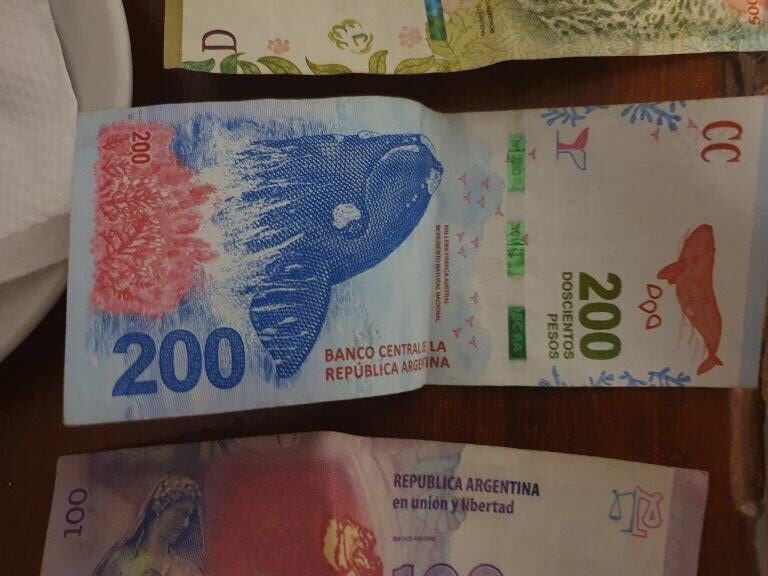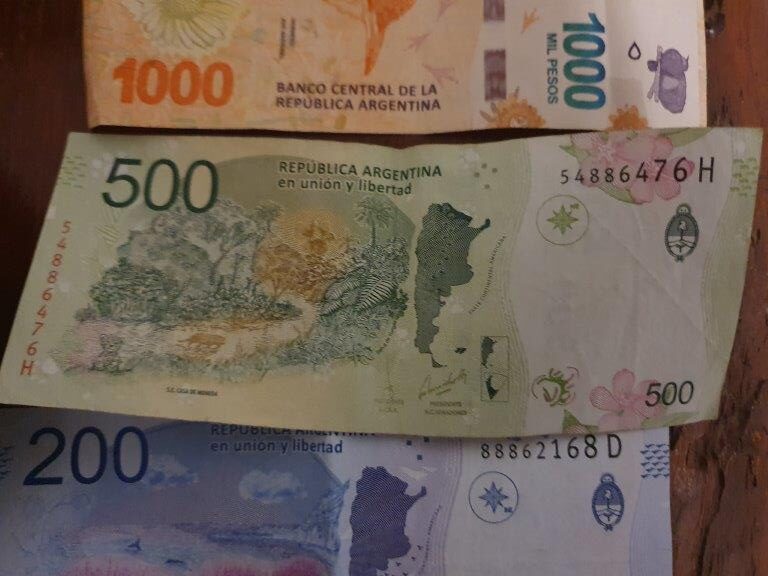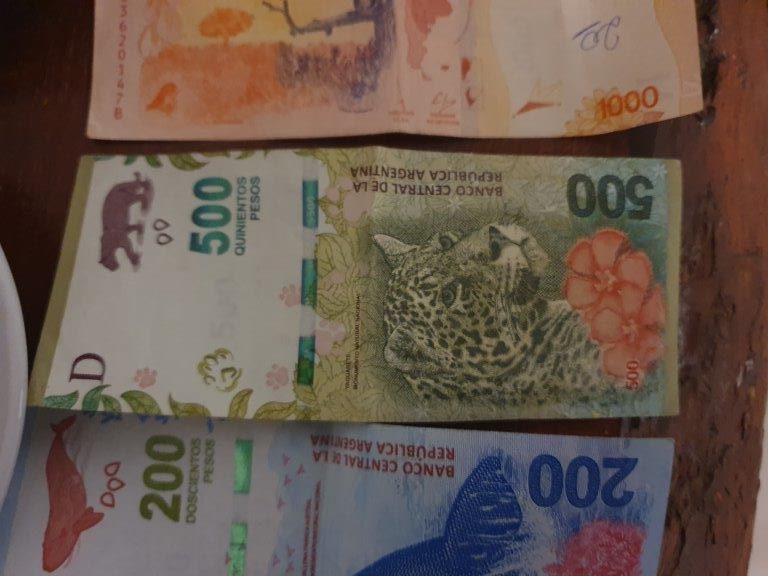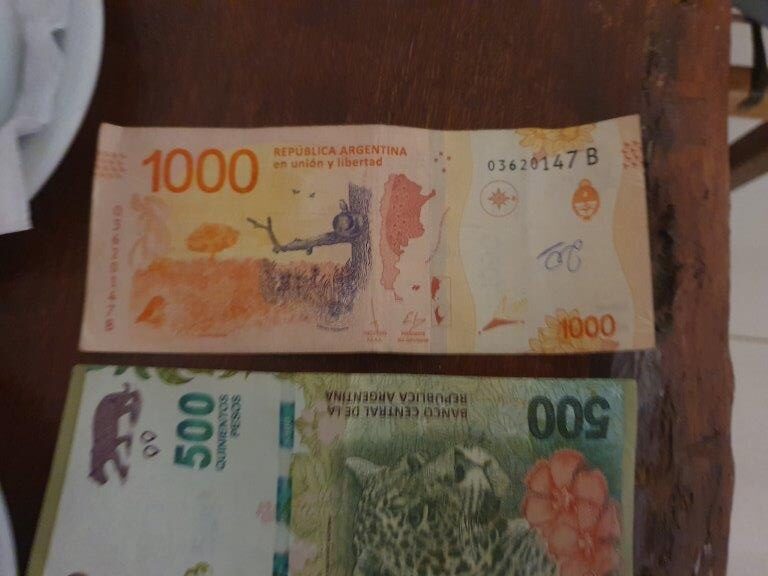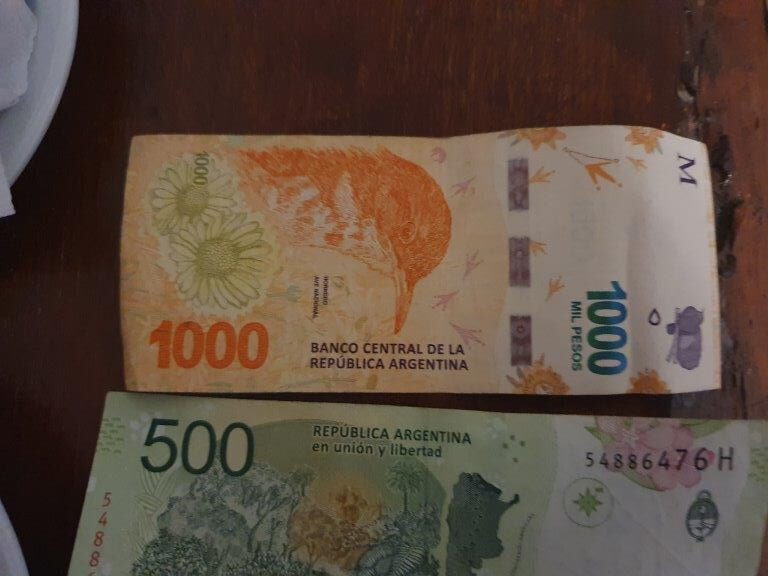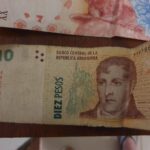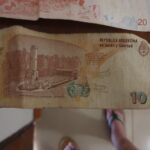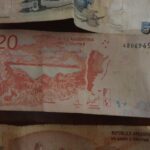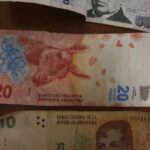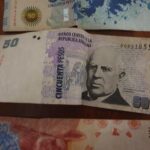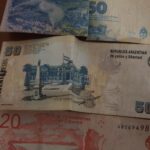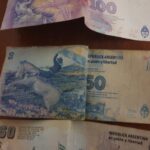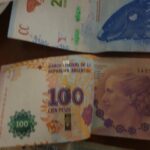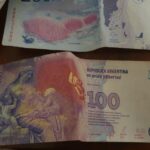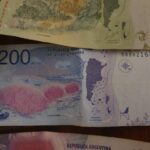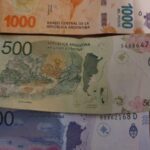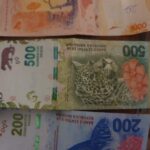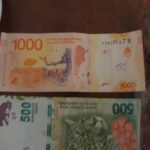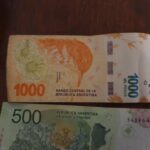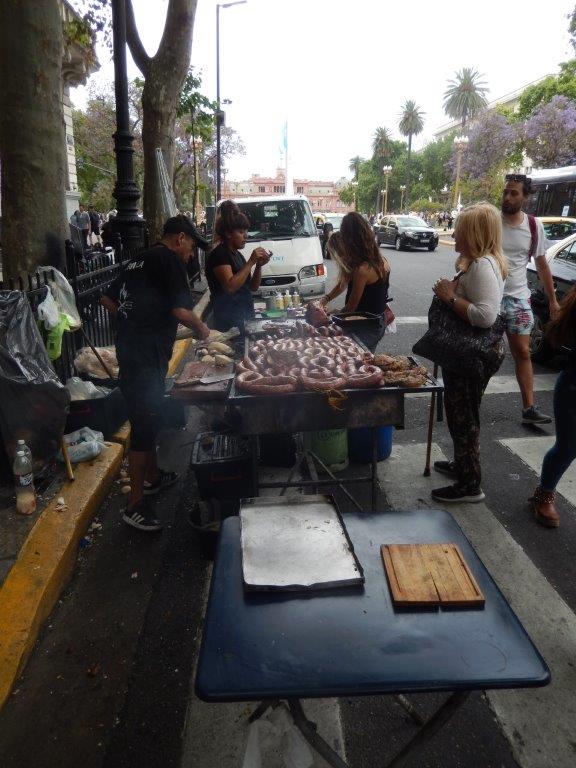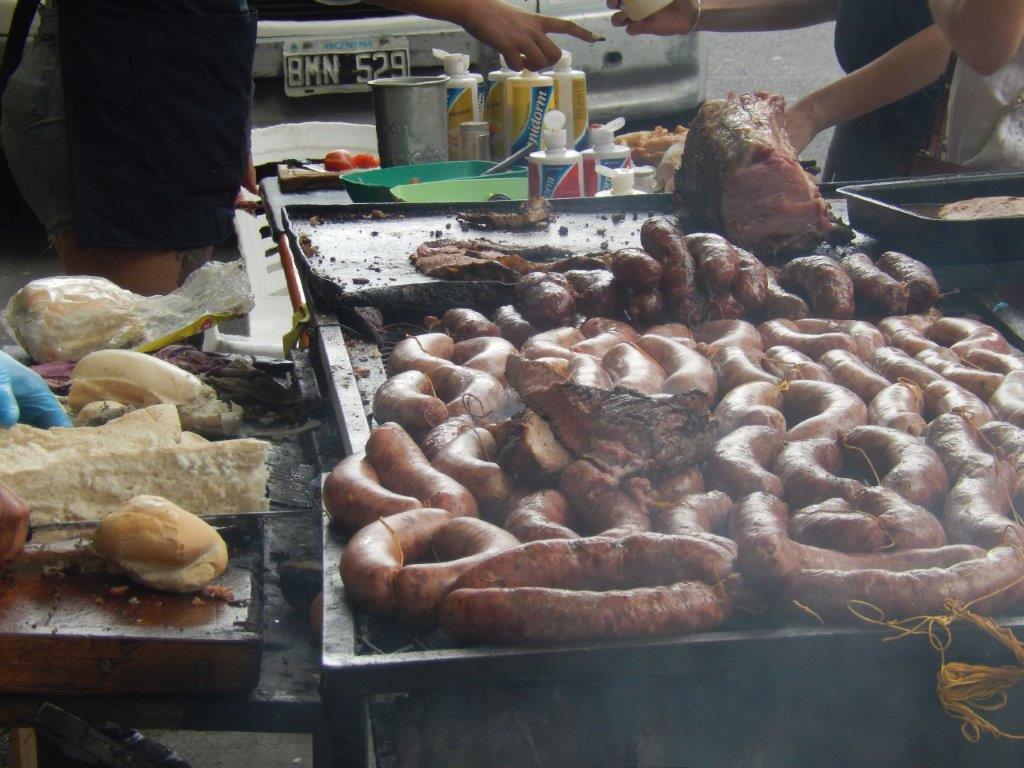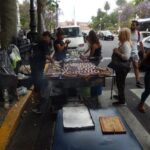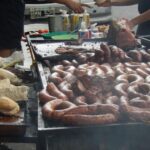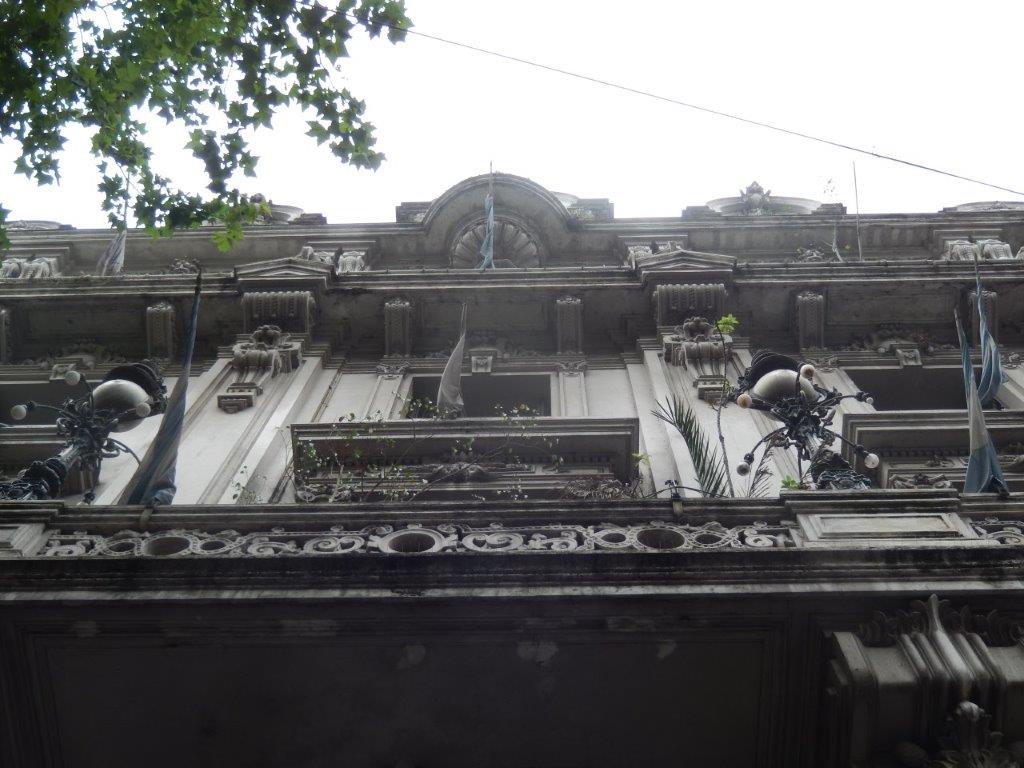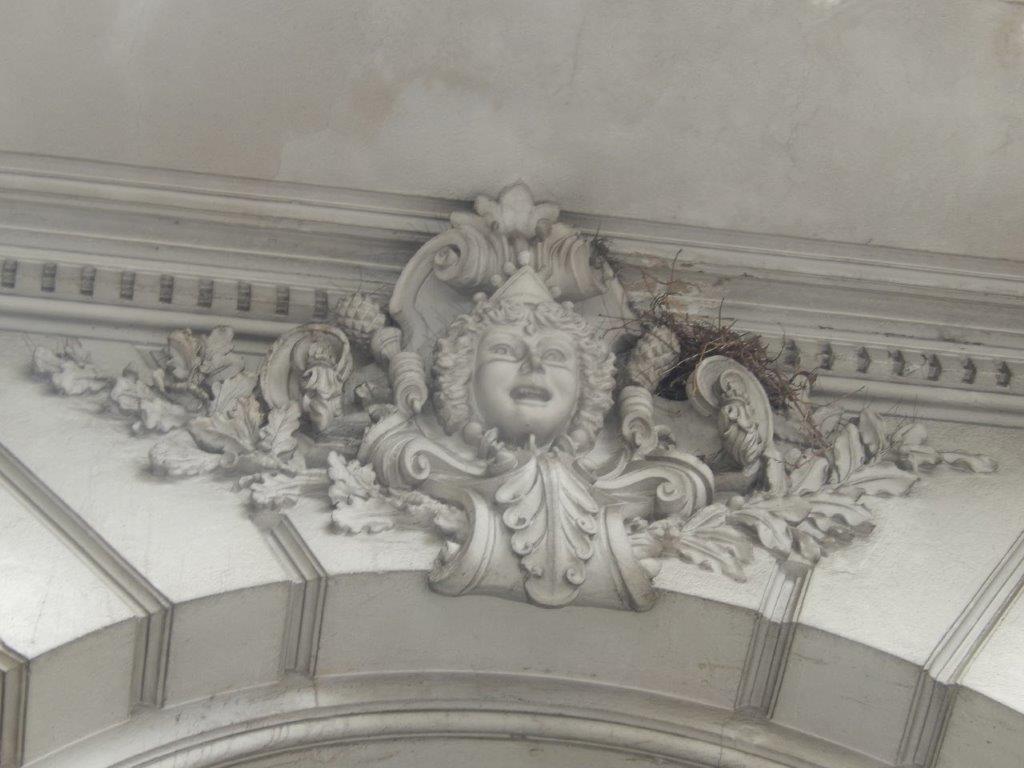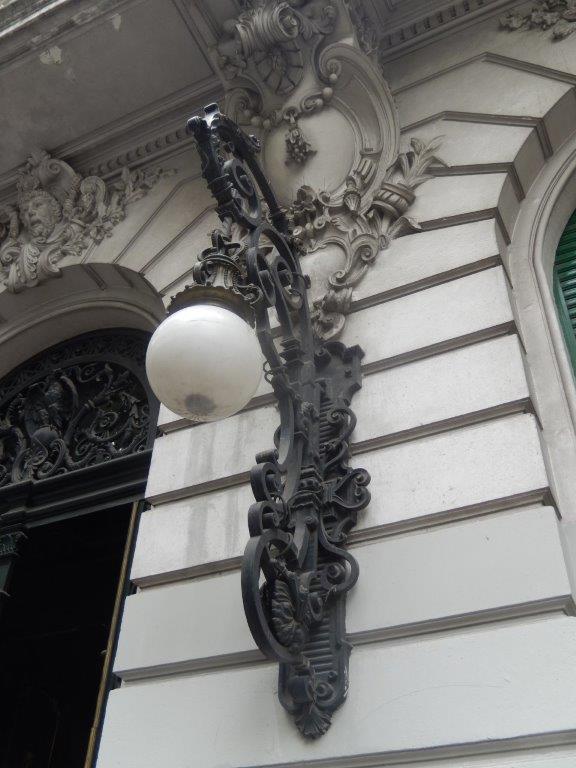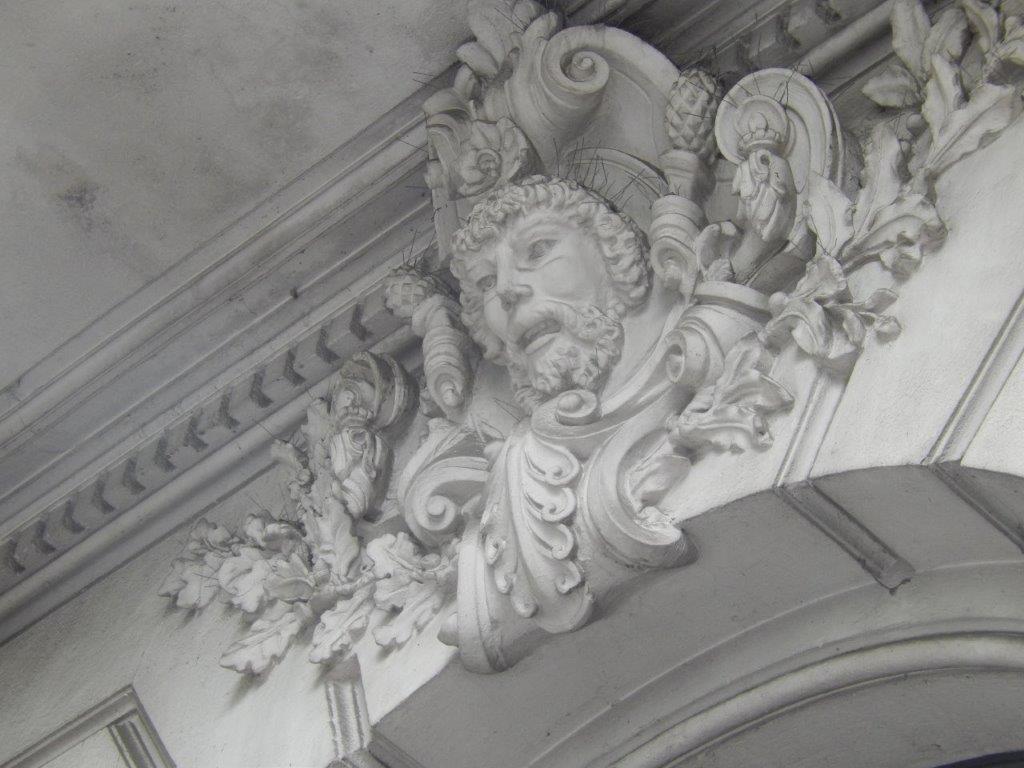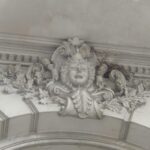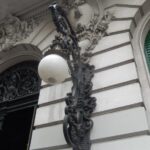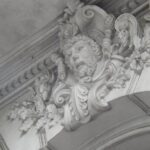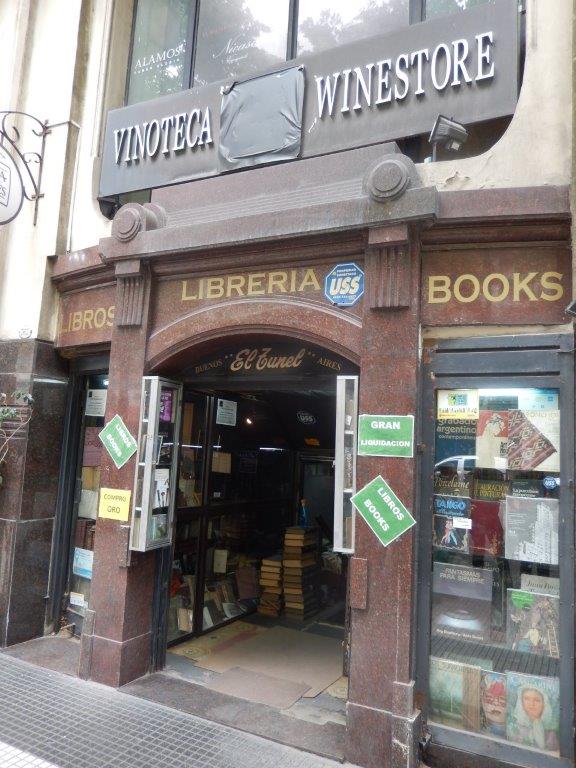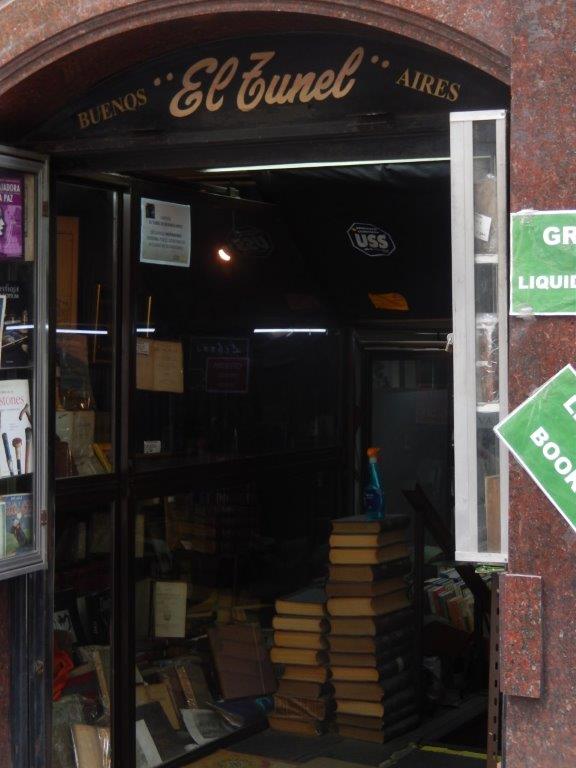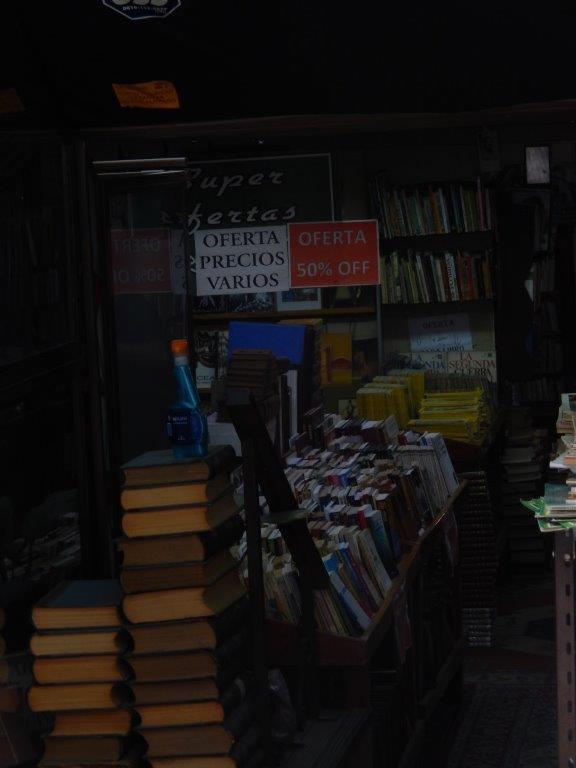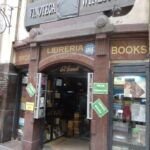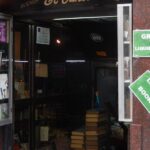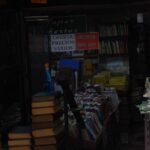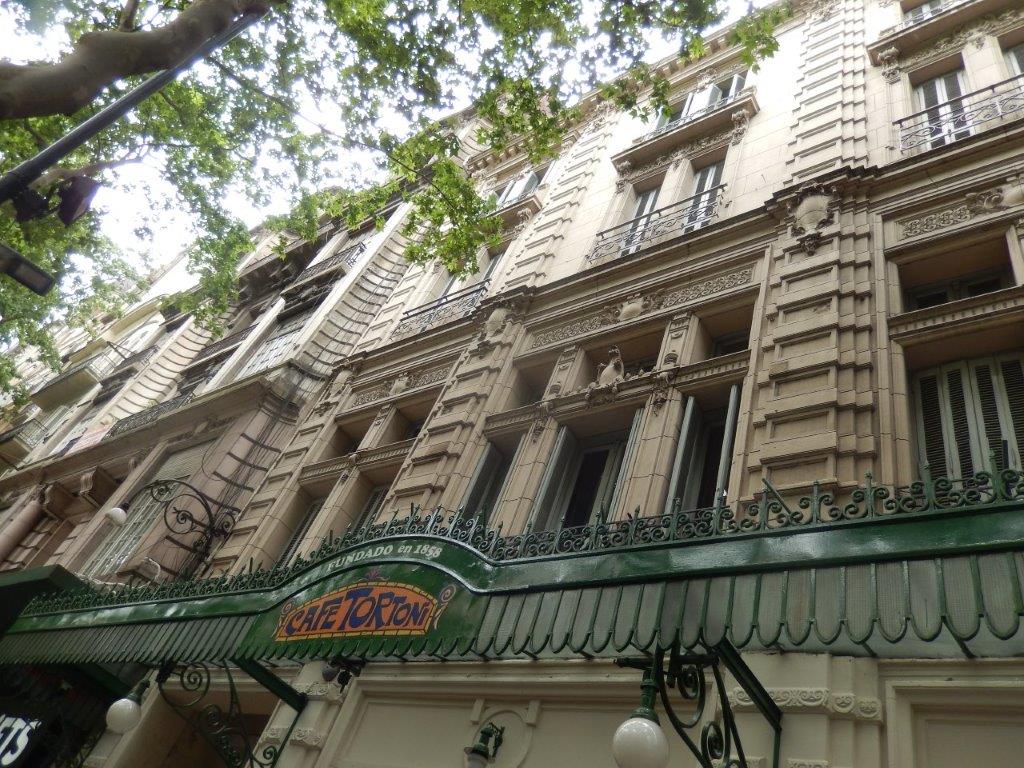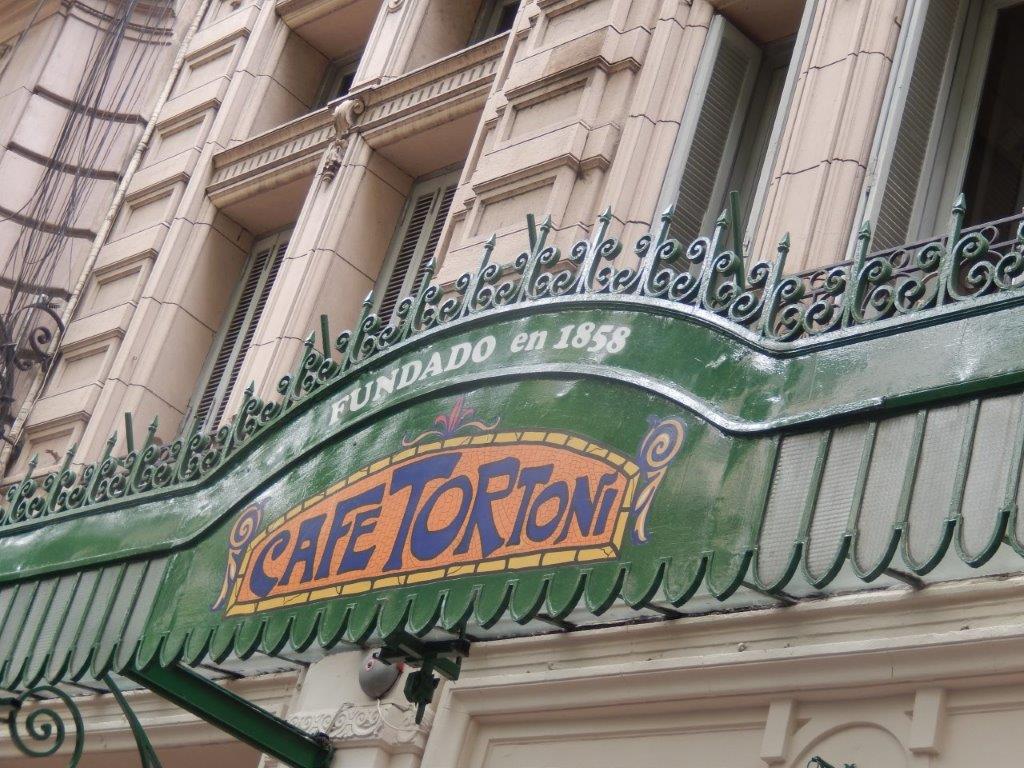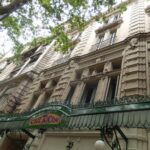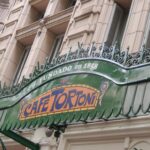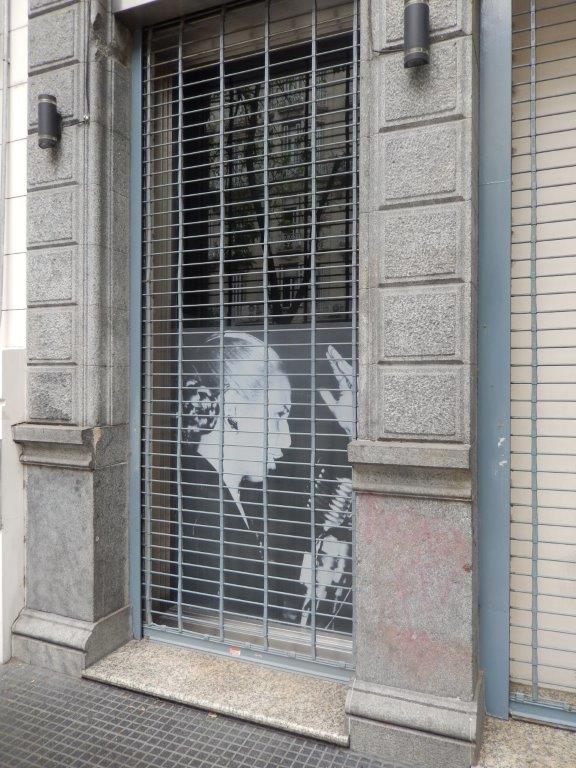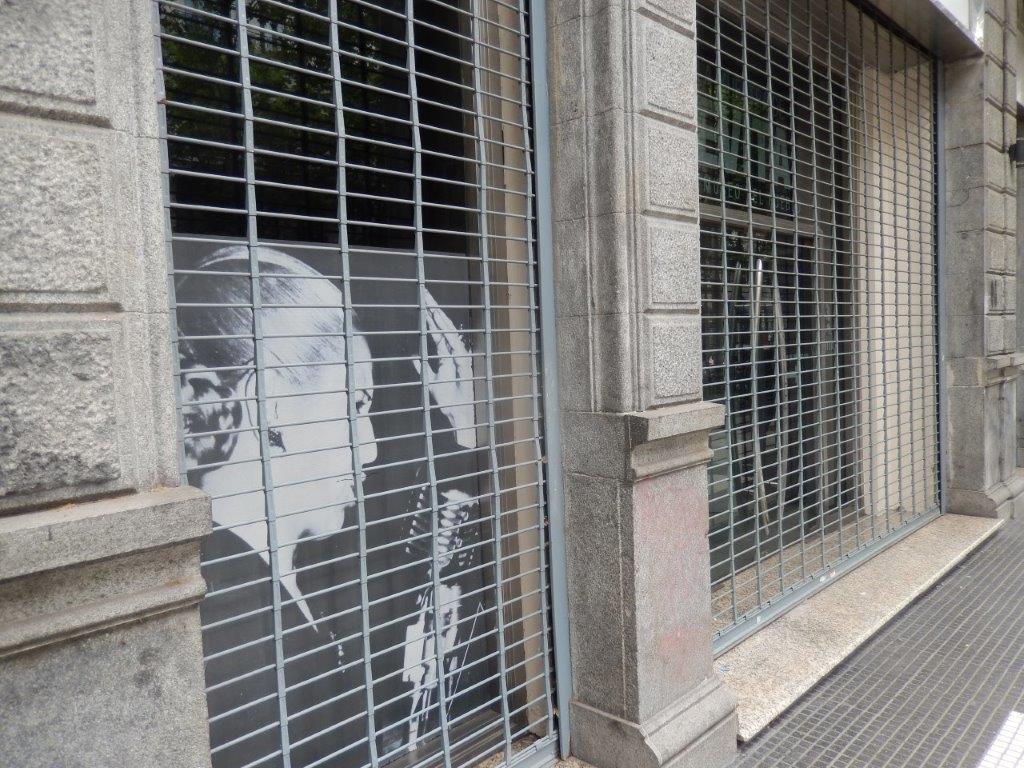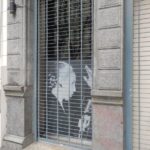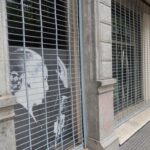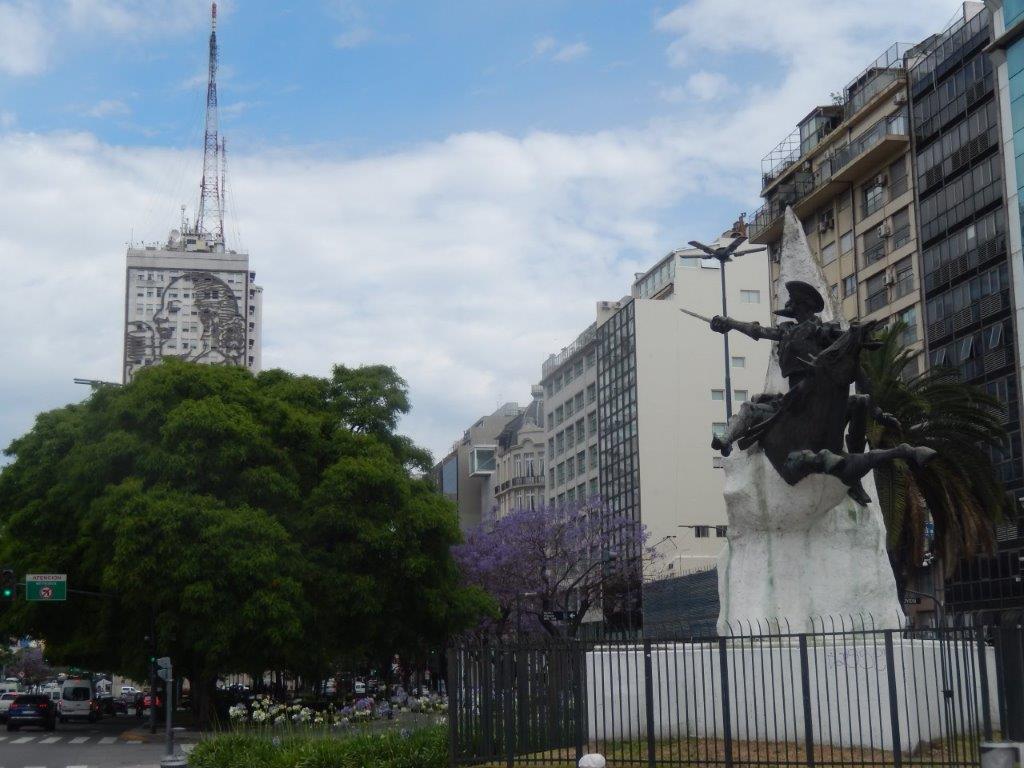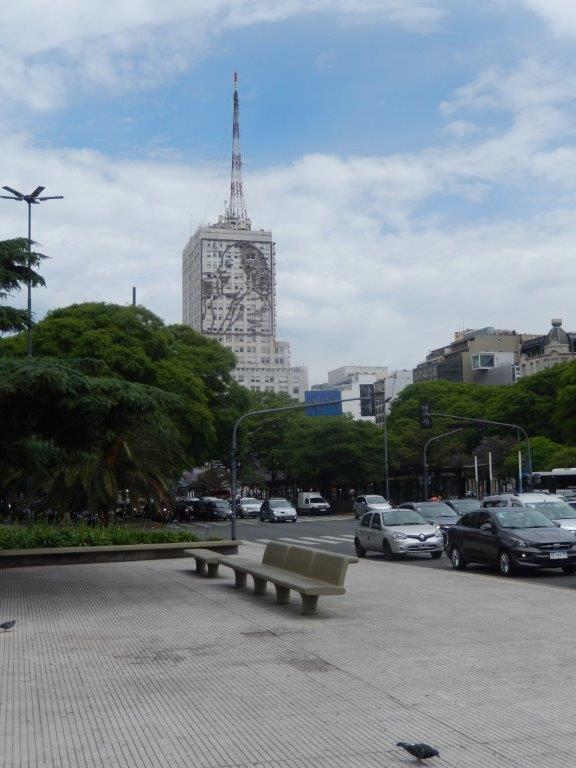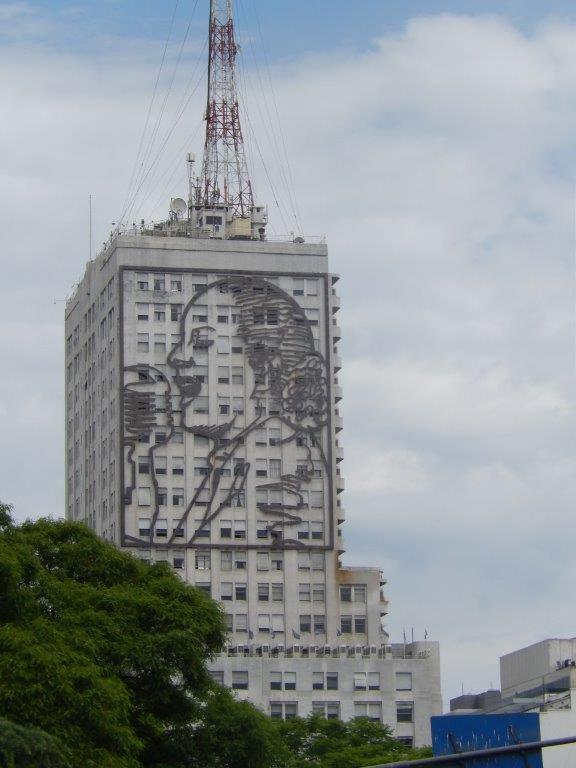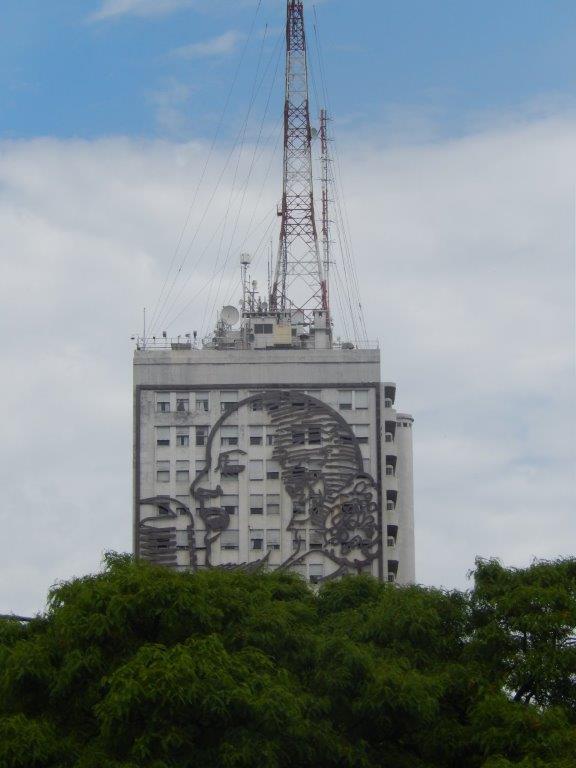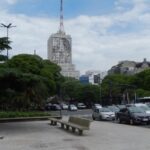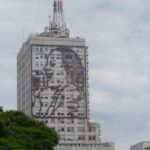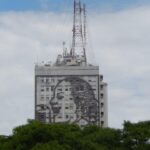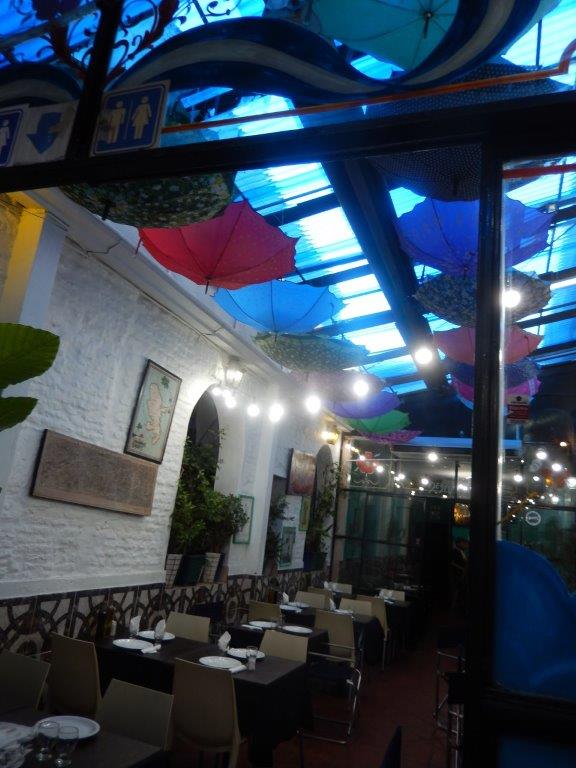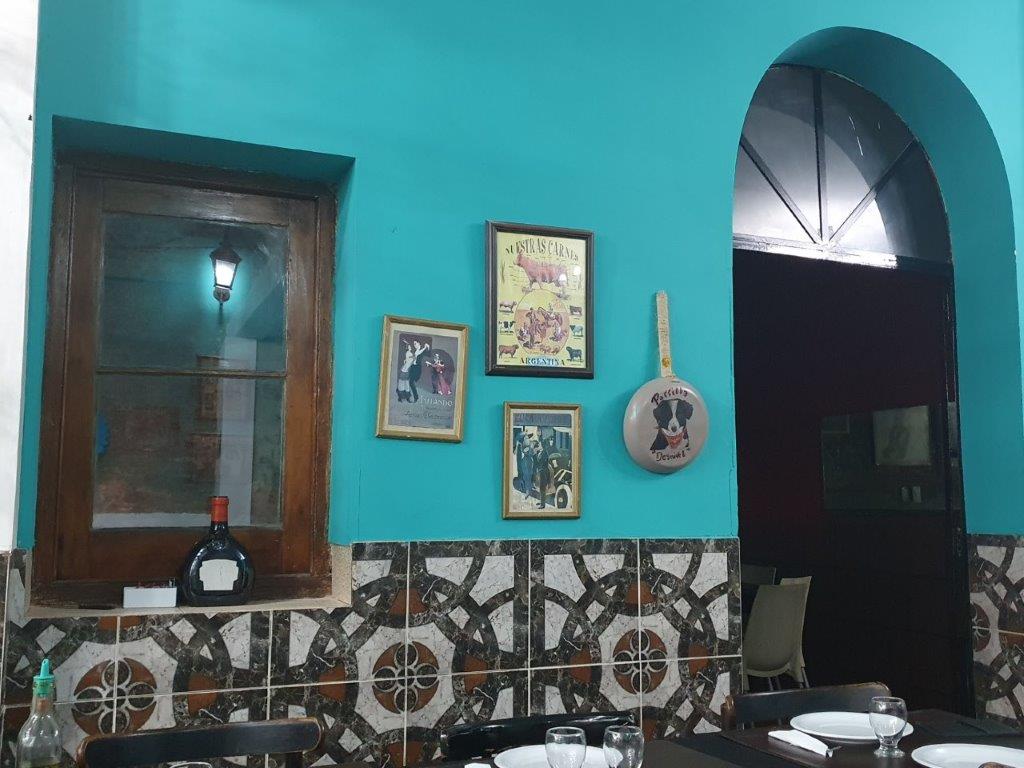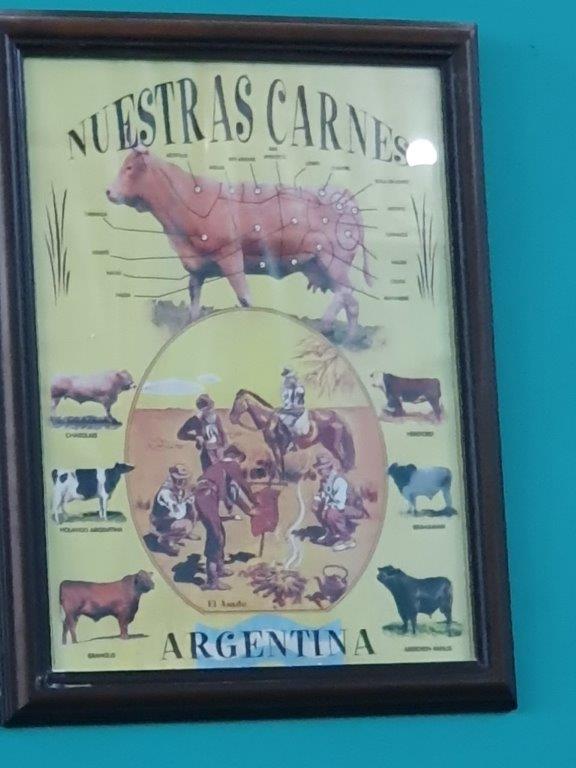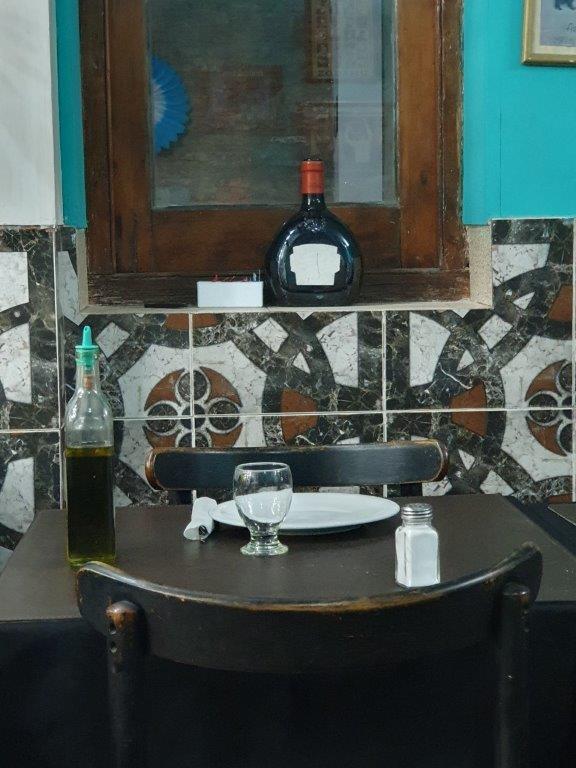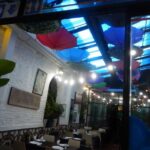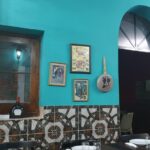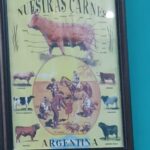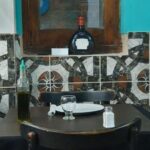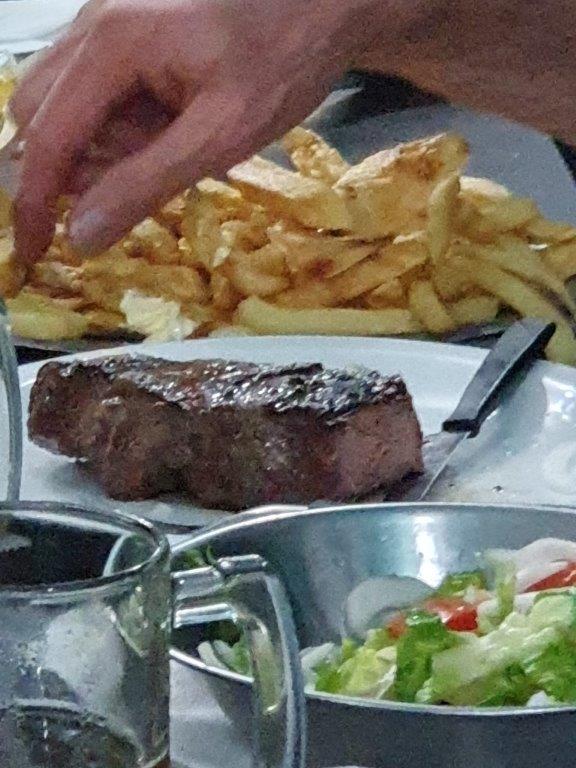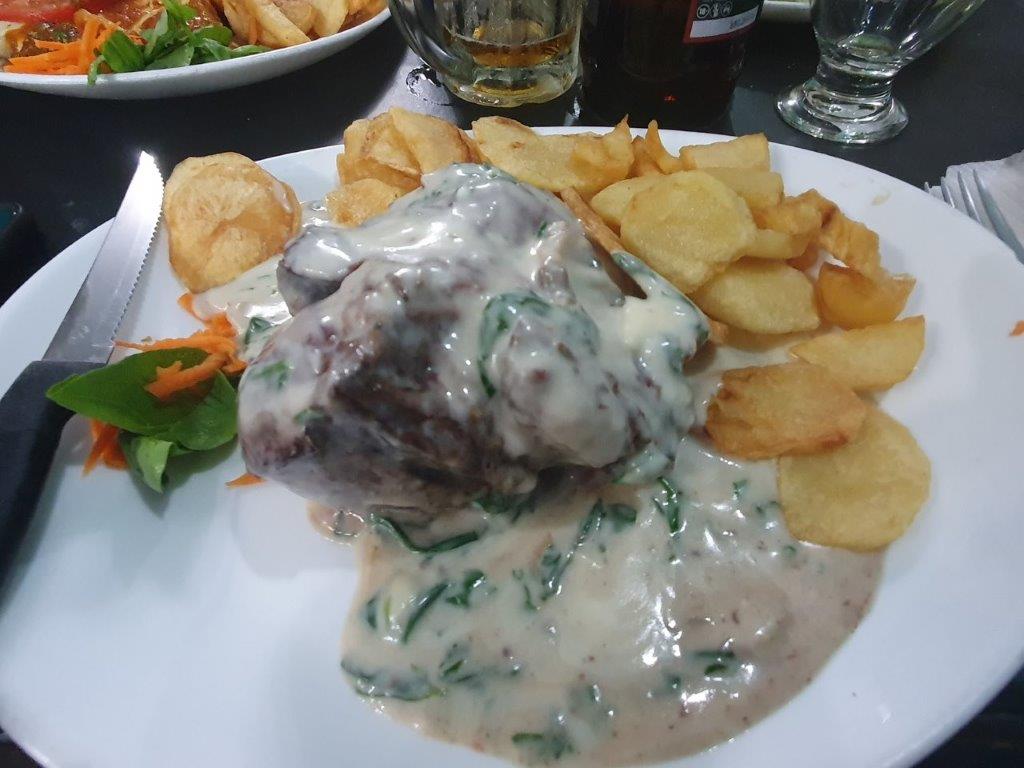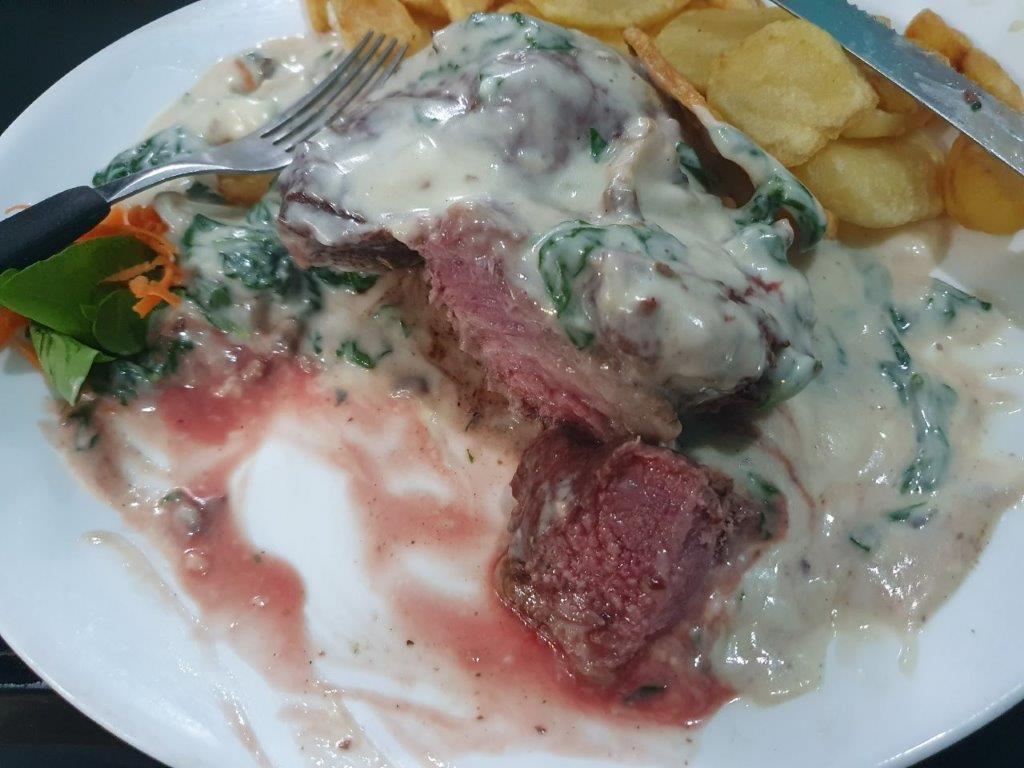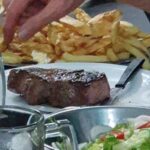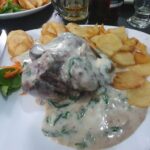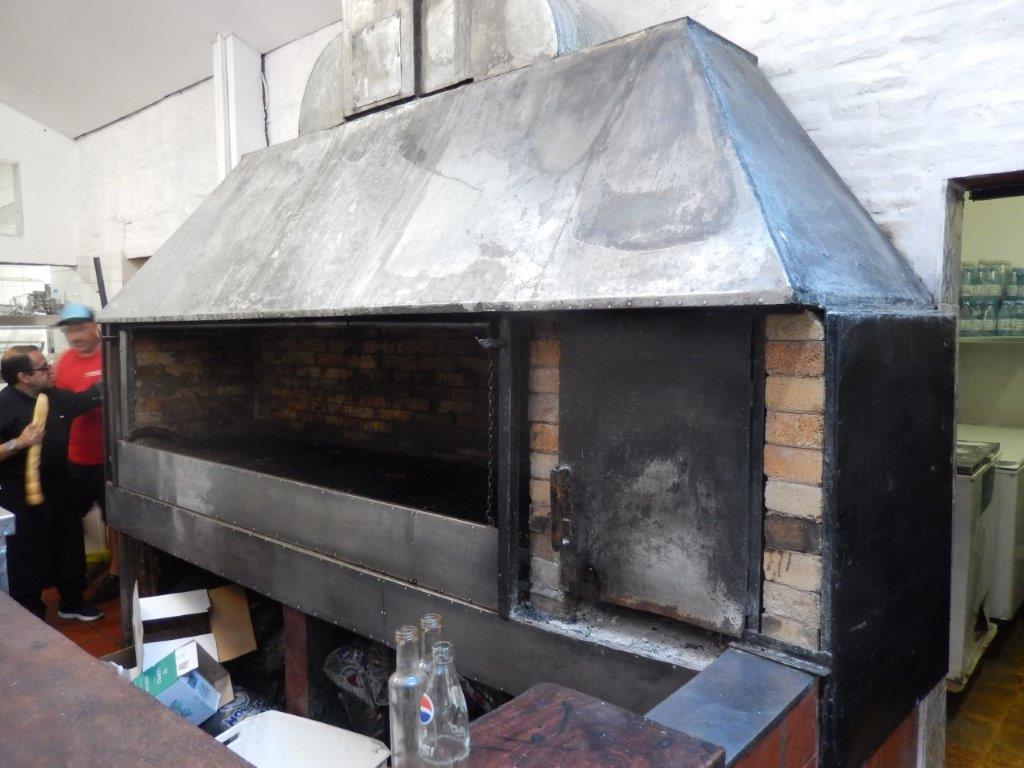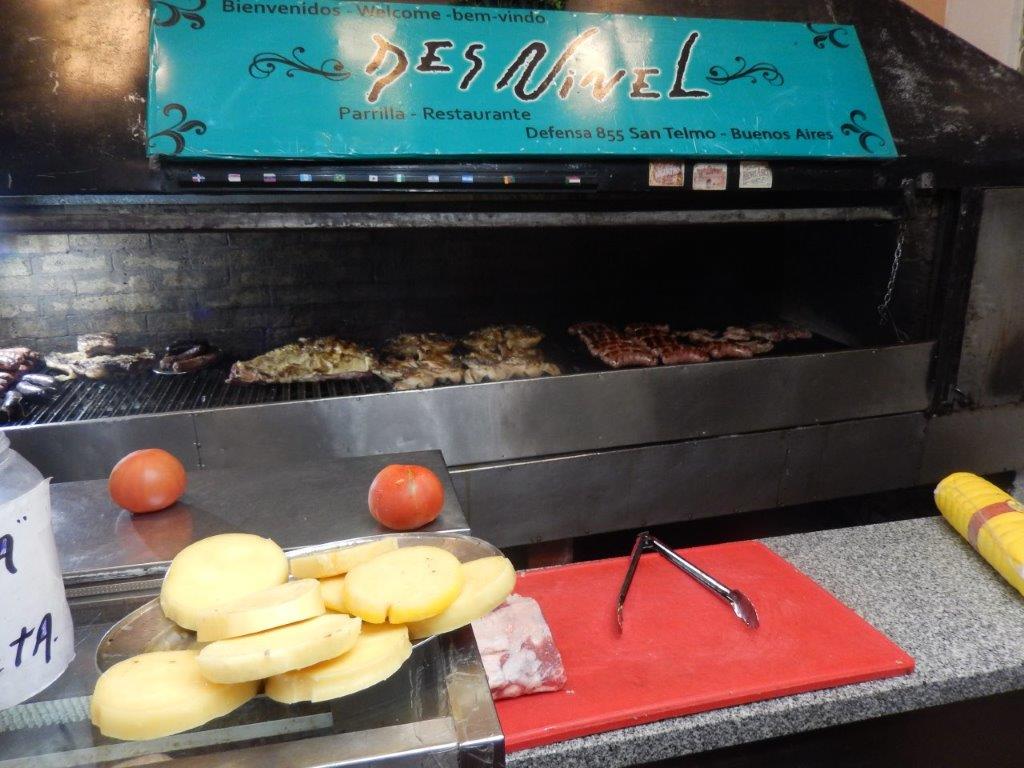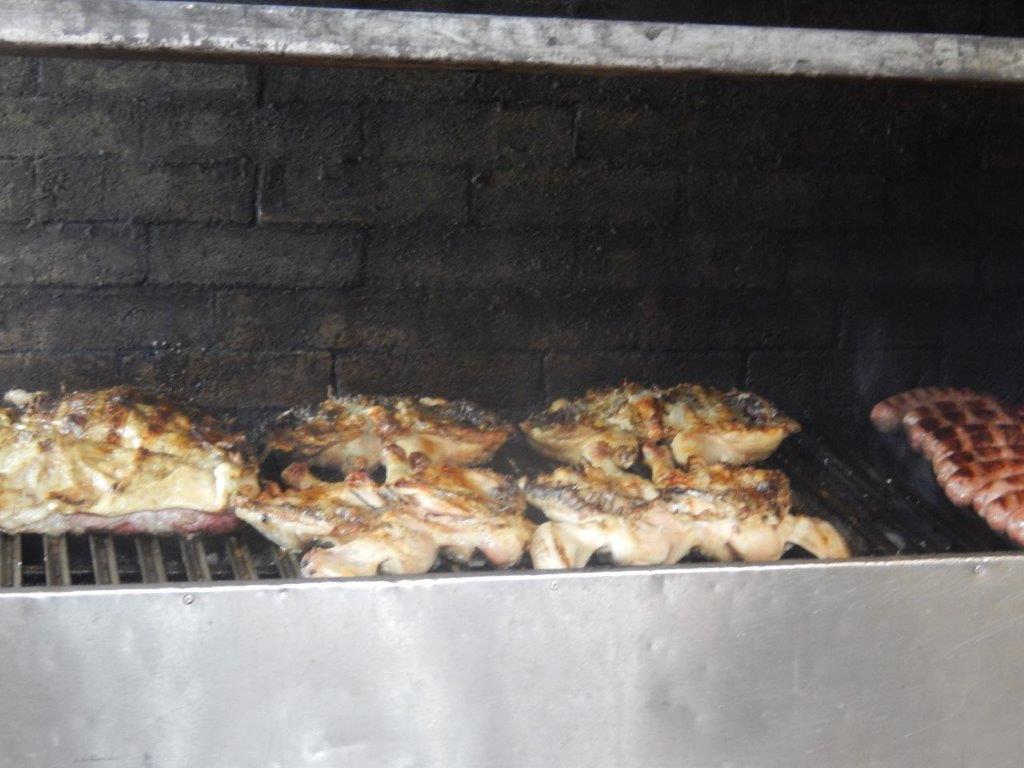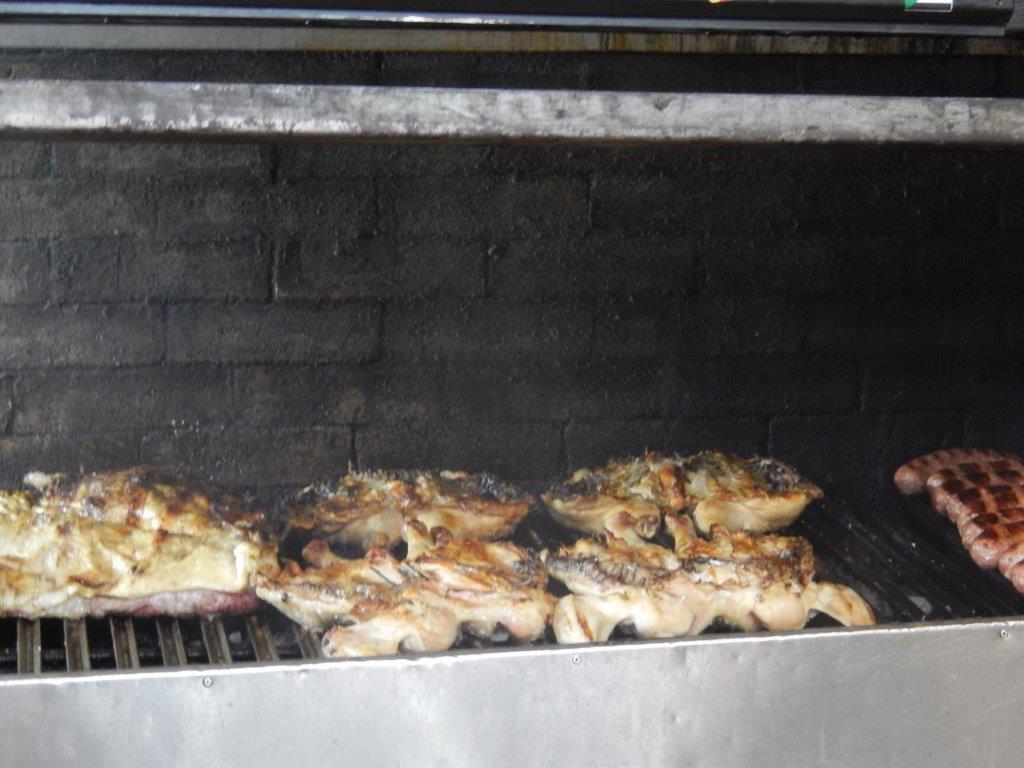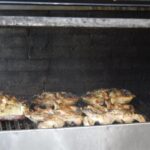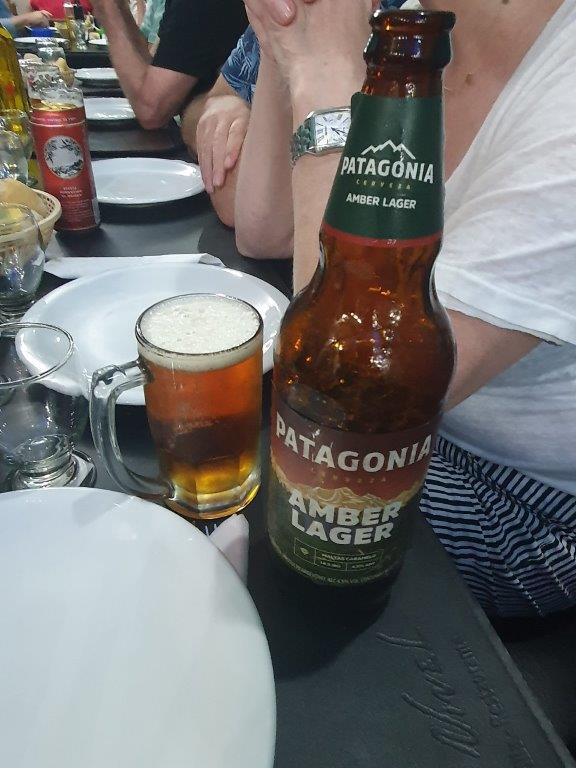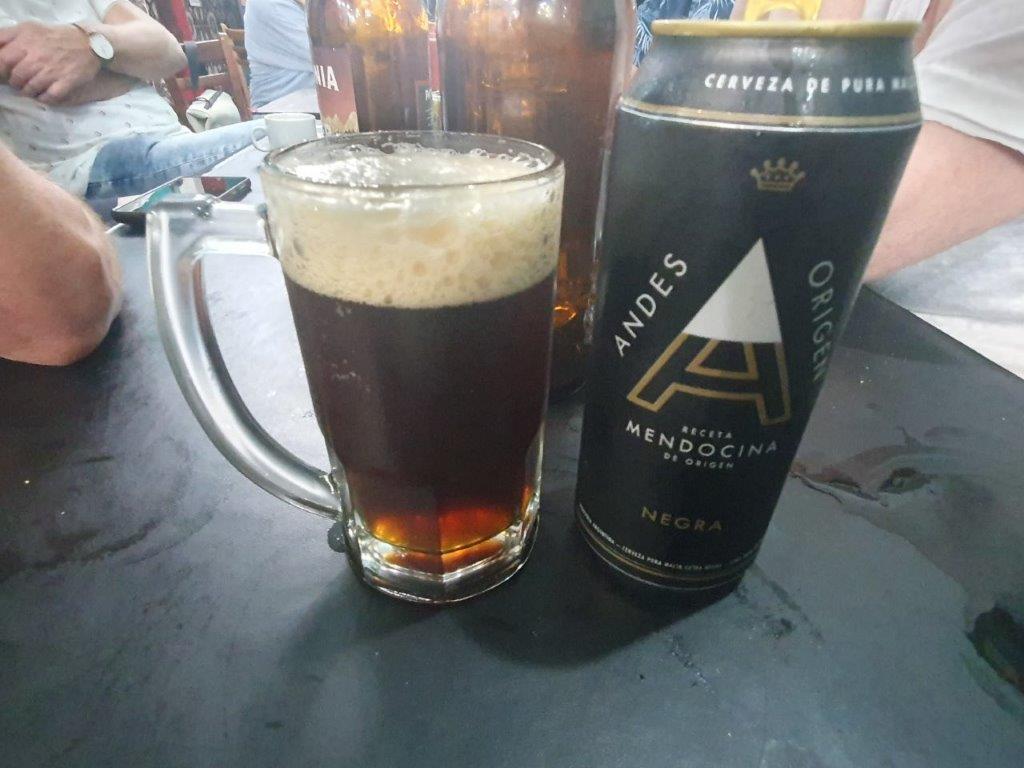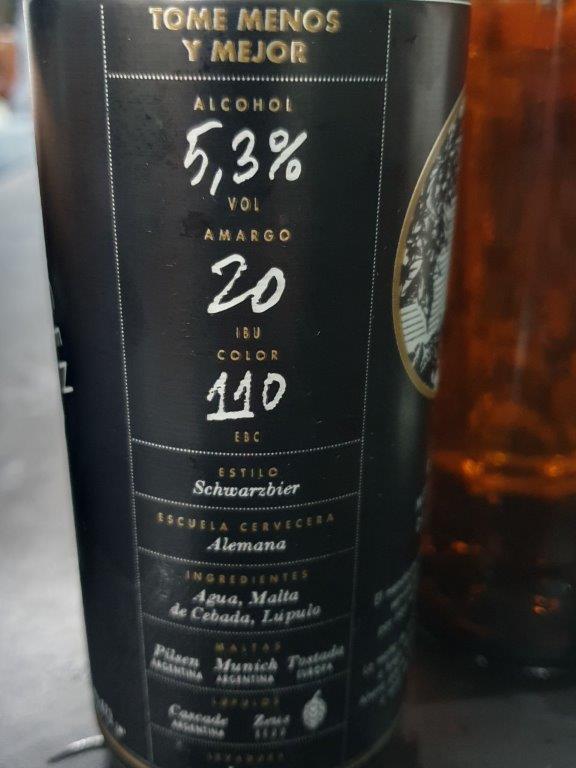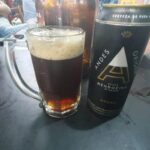1. Argentina: Arrival in Buenos Aires and 1st citywalk through San Telmo, Monserrat and vicinity
The journey to Argentina
Before realizing his wish to go backpacking and walking in the Patagonian Andes mountains, The Wandelgek had planned for a brief but intensive visit of Buenos Aires, the Argentine capital. For this he flew from Amsterdam via Madrid to Buenos Aires.
In the “after” Covid years it is nessecary to be 3 to 4 hours early on the airport to avoid crowds. To still make this time a bit more pleasant, The Wandelgek searched for and found this wonderful Amsterdam brown café, where he could enjoy some old cheese and a beer.
After passing customs, The Wandelgek found a Grand Café in Parisian Style where he enjoyed another beer to pass the wait before boarding time.
The flight plan was an afternoon flight first from Amsterdam to Madrid and then a connection to a night flight from Madrid to Buenos Aires with Air Europe. Luggage was automatically forwarded to the next plane. No worries I thought.
The plane leaves Spain in the south (Andalusia) and crosses the Atlantic Ocean past the African coast and mid ocean over the Canary Islands towards the Brazilian coast, flying over the west of Brazil and over Uruguay, ending its flight by crossing the Rio de la Plata to Buenos Aires. 19hrs. flight time, covering a distance of 11.420 kilometers (7.096 miles). I think one of the longest flights ever undertaken by The Wandelgek, 2nd only to the flight from Denpasar to Jakarta and probably the flight from Amsterdam to Jakarta.
I went for a toilet 1st and arrived later at the luggage belt. But then things went wrong. My backpack did not arrive. The luggage on the belt got less and less and kept rotating, without new luggage being added. I was on my way to the luggage reclaim counter when I suddenly saw my backpack lying on the floor, a few meters away from the belt. Luckily it hadn’t been opened and I could just pick it up and walk on towards the exit. Pffff.
Buenos Aires
Buenos Aires; officially the Autonomous City of Buenos Aires (Spanish: Ciudad Autónoma de Buenos Aires), is the capital and primary city of Argentina. The city is located on the western shore of the Río de la Plata, on South America’s southeastern coast. “Buenos Aires” can be translated as “fair winds” or “good airs”, but the former was the meaning intended by the founders in the 16th century, by the use of the original name “Real de Nuestra Señora Santa María del Buen Ayre”, named after the Madonna of Bonaria in Sardinia, Italy. Buenos Aires is classified as an alpha global city, according to the Globalization and World Cities Research Network (GaWC) 2020 ranking.
The city of Buenos Aires is neither part of Buenos Aires Province nor the Province’s capital; rather, it is an autonomous district. In 1880, after decades of political infighting, Buenos Aires was federalized and removed from Buenos Aires Province. The city limits were enlarged to include the towns of Belgrano and Flores; both are now neighborhoods of the city. The 1994 constitutional amendment granted the city autonomy, hence its formal name of Autonomous City of Buenos Aires. Its citizens first elected a Chief of Government in 1996; previously, the Mayor was directly appointed by the President of Argentina.
The Greater Buenos Aires conurbation, which also includes several Buenos Aires Province districts, constitutes the fourth-most populous metropolitan area in the Americas, with a population of around 15.6 million. It is also the second largest city south of the Tropic of Capricorn. The quality of life in Buenos Aires was ranked 91st in the world in 2018, being one of the best in Latin America. In 2012, it was the most visited city in South America, and the second-most visited city of Latin America.
It is known for its preserved eclectic European architecture and rich cultural life. It is a multicultural city that is home to multiple ethnic and religious groups, contributing to its culture as well as to the dialect spoken in the city and in some other parts of the country. This is because since the 19th century, the city, and the country in general, has been a major recipient of millions of immigrants from all over the world, making it a melting pot where several ethnic groups live together. Thus, Buenos Aires is considered one of the most diverse cities of the Americas.
Hotel room in San Telmo
In Buenos Aires, The Wandelgek stayed at the Ker San Telmo Hotel.
After a welcoming cappuccino, which tasted well…
 …The Wandelgek retreated to his room…
…The Wandelgek retreated to his room…
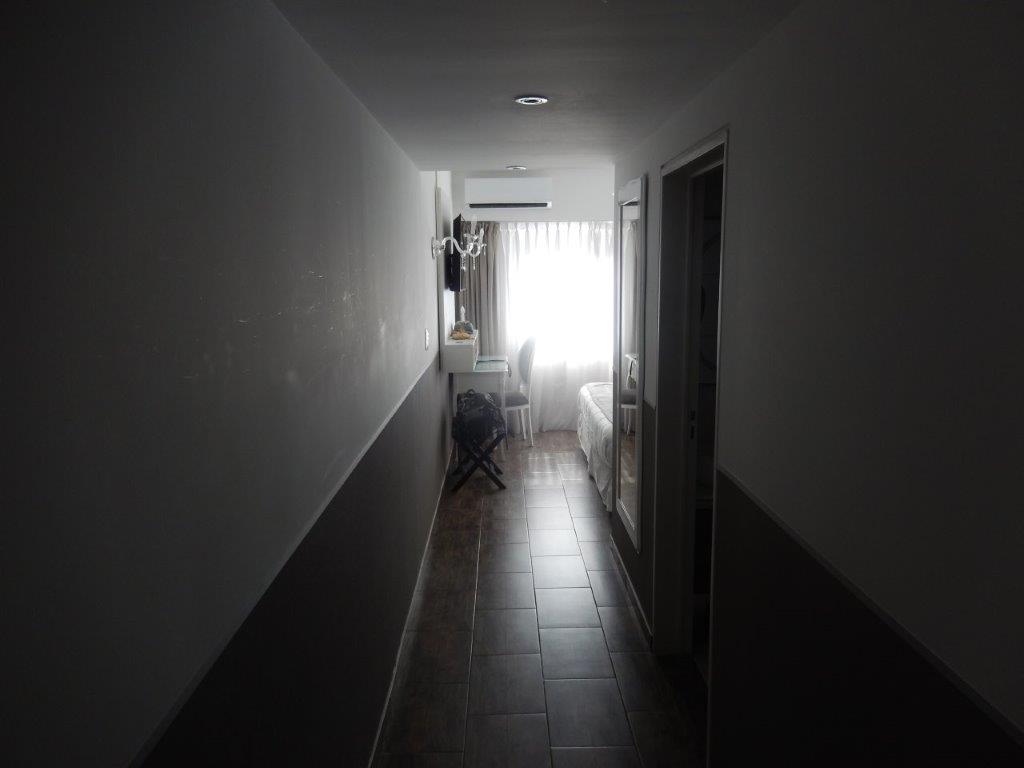 …which was clean and spacy containing a large double bed and a large television on the wall. That would come in handy to watch the World Championship of Football in the upcoming weeks.
…which was clean and spacy containing a large double bed and a large television on the wall. That would come in handy to watch the World Championship of Football in the upcoming weeks.
The bathroom was clean and spacious too…
After having installed himself for the next couple of days, The Wandelgek went down to the hotel’s restaurant and bar, to have a drink before going for a 1st prelimenary walk in the hotel’s direct vicinity.
1st City Walk through Monserrat & San Telmo
Plaza Presidente Juan Domingo Perón
1st The Wandelgek walked east of the Plaza Presidente Juan Domingo Perón, which was dominated by a double towered building in an architectoral style which immediately reminds you of Paris or Madrid…
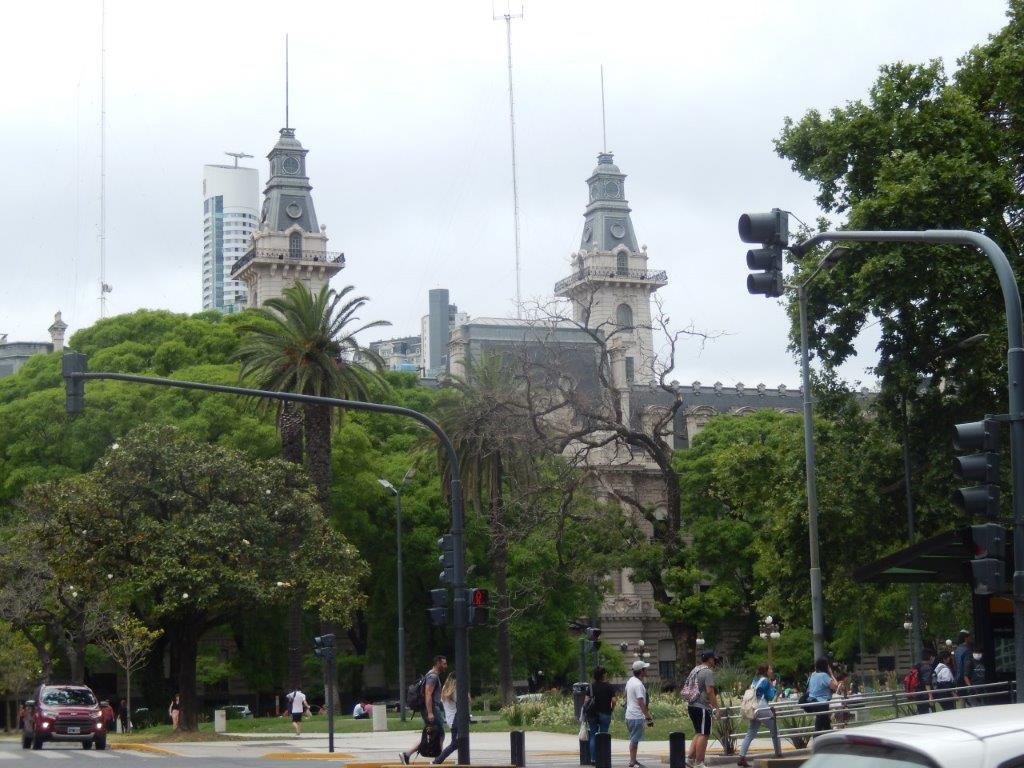 In the park was a statue of the illustrious Juan Domingo Perón. Juan Domingo Perón (8 October 1895 – 1 July 1974) was an Argentine Army general and politician who served as President of Argentina from 1946 to his overthrow in 1955, and again from October 1973 to his death in July 1974. He had previously served in several government positions, including Minister of Labour and Vice President of a military dictatorship.
In the park was a statue of the illustrious Juan Domingo Perón. Juan Domingo Perón (8 October 1895 – 1 July 1974) was an Argentine Army general and politician who served as President of Argentina from 1946 to his overthrow in 1955, and again from October 1973 to his death in July 1974. He had previously served in several government positions, including Minister of Labour and Vice President of a military dictatorship.
During his first presidential term (1946–1952), Perón was supported by his second wife, Eva Duarte (“Evita”): they were immensely popular among the Argentine working class. Perón’s government invested heavily in public works, expanded social welfare, and forced employers to improve working conditions. Trade unions grew rapidly with his support and women’s suffrage was granted with Eva’s influence. On the other hand, dissidents were fired, exiled, arrested and tortured, and much of the press was closely controlled. Several high-profile war criminals, such as Josef Mengele, Adolf Eichmann and Ante Pavelić, were given refuge in Argentina during this time.
Though Perón was re-elected by a wide margin, his second term (1952–1955) was far more troubled. Eva, a major source of support, died a month after his inauguration in 1952. An economic crisis was ongoing, Perón’s relationship with a teenage girl, Nelly Rivas, was revealed, and his plans to legalise divorce and prostitution damaged his standing with the Catholic Church. After he deported two Catholic priests and was thought to be excommunicated, pro-Church elements of the Argentine Navy and Air Force bombed Plaza de Mayo in Buenos Aires, where supporters of Perón had gathered, killing more than 300 civilians in June 1955. The event in turn prompted violent reprisals against several churches. Within months, Perón lost his power in a military coup.
During the following period of two military dictatorships, interrupted by two civilian governments, the Peronist party was outlawed and Perón was exiled. Over the years he lived in Paraguay, Venezuela, Panama, and Spain. When the Peronist Héctor José Cámpora was elected President in 1973, Perón returned to Argentina amidst the Ezeiza massacre and was soon after elected President for a third time (12 October 1973 – 1 July 1974). During this term, left- and right-wing Peronists were permanently divided and violence between them erupted, with Perón increasingly siding with the right. His minister José López Rega formed the Argentine Anticommunist Alliance, believed to have committed at least hundreds of extrajudicial killings and kidnappings. Perón’s third wife, María Estela Martínez, known as Isabel Perón, was elected as Vice President on his ticket and succeeded him as President upon his death in 1974. Political violence only intensified, and she was ousted in 1976, followed by a period of even deadlier repression under the junta of Jorge Rafael Videla.
Although they are still controversial figures, Juan and Eva Perón are nonetheless considered icons by the Peronists. The Peróns’ followers praised their efforts to eliminate poverty and to dignify labour, while their detractors considered them demagogues and dictators. The Peróns gave their name to the political movement known as Peronism, which in present-day Argentina is represented mainly by the Justicialist Party.
Ministerio de Economía
The Ministry of Economy (Spanish: Ministerio de Economía) of Argentina is the country’s state treasury and a ministry of the national executive power that manages economic policy.
The Ministry of Economy is one of the oldest ministries in the Argentine government, having existed continuously since the formation of the first Argentine executive in 1854, in the presidency of Justo José de Urquiza – albeit under the name of Ministry of the Treasury. The current minister responsible is Sergio Massa, who has served since 2022 in the cabinet of Alberto Fernández.
Argentina has always known periods of economic disaster in its history. Therefore this ministry was part of that history. Several gruesome events took place on and around the political center of Argentina; the Plaza de Mayo. One of those was a ruthless bombing by airplanes in 1955:
The Bombing of Plaza de Mayo was a massacre that took place in Buenos Aires, Argentina, on 16 June 1955. 30 aircraft from the Argentine Navy and Air Force strafed and bombed Plaza de Mayo square in Buenos Aires in the largest aerial bombing ever on the Argentine mainland. The attack targeted the adjacent Casa Rosada, the official seat of government, while a large crowd of protestors gathered to demonstrate support for President Juan Perón.
The strike took place during a day of official public demonstrations to condemn the burning of a national flag allegedly carried out by detractors of Perón during the recent Corpus Christi procession. The military reacted as a result of growing tension between President Juan Perón and his actions against the Roman Catholic Church. The action was to be the first step in an eventually aborted coup d’état. The number of identified bodies was put at 308, including six children; an unknown number of victims could not be identified.
The disregard for civilian lives and the violence with which the act was carried out has prompted comparisons with the wave of state terrorism during the dictatorship of 1976-1983.
Plaza de Mayo
The Plaza de Mayo (May Square) is a city square and main foundational site of Buenos Aires, Argentina. It was formed in 1884 after the demolition of the Recova building, unifying the city’s Plaza Mayor and Plaza de Armas, by that time known as Plaza de la Victoria and Plaza 25 de Mayo, respectively. The city centre of Buenos Aires, Plaza de Mayo has been the scene of the most momentous events in Argentine history, as well as the largest popular demonstrations in the country.
On the occasion of the first anniversary of the May Revolution in 1811, the Pirámide de Mayo (May Pyramid) was inaugurated in the square’s hub, becoming Buenos Aires’ first national monument.
It is located in the financial district known as microcentro, within the barrio (English: neighborhood) of Monserrat. It is bounded by Bolívar, Hipólito Yrigoyen, Balcarce and Avenida Rivadavia streets; and from its west side three important avenues are born: Avenida Presidente Julio Argentino Roca, Avenida Roque Sáenz Peña and Avenida de Mayo. In the square’s surroundings are several significant monuments and points of interest: the Cabildo, the Casa Rosada (seat of the President of Argentina), the Metropolitan Cathedral, the Buenos Aires City Hall, and the Bank of the Argentine Nation’s headquarters.
Underneath its lands are the Underground stations of Plaza de Mayo (Line A), Catedral (Line D), and Bolívar (Line E).
Casa Rosada
The Casa Rosada (Pink House) is the office of the president of Argentina. The palatial mansion is known officially as Casa de Gobierno (“House of Government” or “Government House”). Normally, the president lives at the Quinta de Olivos, the official residence of the president of Argentina, which is located in Olivos, Greater Buenos Aires. The characteristic color of the Casa Rosada is baby pink, and it is considered one of the most emblematic buildings in Buenos Aires. The building also houses a museum, which contains objects relating to former presidents of Argentina. It has been declared a National Historic Monument of Argentina.
The Casa Rosada’s function and exterior changed through the ages. It started as a fortress in 1594 and was improved several times, before a new customs house was added to the fortress in 1855. In 1873 a main Post Office was build, which diminished the splendour of the government house. The president ordered some architects to re build the government house and a proposal which incorporated building a second post office like building and connecting it with a wing containing balconies to the first post office was executed thus creating the 1st palace and removing all fortress like remains. It was inaugurated in 1898.
Beneath is the famous balcony used by the Juan Domingo and Evita Perón to address the working class crowds on the Plaza de Mayo with their compelling speeches.
Mothers of the Plaza de Mayo
The Mothers of the Plaza de Mayo is an Argentine human rights association formed in response to the National Reorganization Process, the military dictatorship by Jorge Rafael Videla, with the goal of finding the desaparecidos, initially, and then determining the culprits of crimes against humanity to promote their trial and sentencing.
The Mothers began demonstrating in the Plaza de Mayo, the public square located in front of the Casa Rosada presidential palace, in the city of Buenos Aires, on April 30, 1977, to petition for the alive reappearance of their disappeared children. Originally, they would remain there seated, but by declaring state of emergency, police expelled them from the public square.
In September 1977, in order to provide themselves with an opportunity to share their stories with other Argentinians, the mothers decided to join the annual pilgrimage to Our Lady of Luján, located 30 miles outside Buenos Aires. In order to stand out among the crowds, the mothers decided to wear their children’s nappies (diapers) as headscarves. Following the pilgrimage, the mothers decided to continue wearing these headscarves during their meetings and weekly demonstrations at the Plaza. On them, they embroidered the names of their children and wrote “Aparición con Vida” (Alive reappearance).The blue flags with the white diaper on them has since become the flag used by the demonstrating mothers. The square is still a central place in Argentine political life and used for all sorts of demonstrations against the ruling government or against specific laws or other to get the spotlight on issues that concern Argentinians.
Ceremonially, every Thursday at 3:30 p.m the Mothers of the Plaza de Mayo, led by Hebe de Bonafini, march around the May Pyramid at the central hub of the Plaza de Mayo, and at 4:00 p.m they give speeches from the Equestrian monument to General Manuel Belgrano, where they opine over the current national and global situation.
The Equestrian monument to General Manuel Belgrano is a landmark of Buenos Aires, Argentina. It is located at Plaza de Mayo, in front of the Casa Rosada. It depicts General Manuel Belgrano holding the Flag of Argentina, and it is made of bronze over a pedestal of granite.
Around the monument an impressive collection of stones and small letters or notices had appeared during the Covid-19 epidemic. This started with a protest march against Covid at which the stones were laid down. Each stones carries the name of a Covid-19 victim.
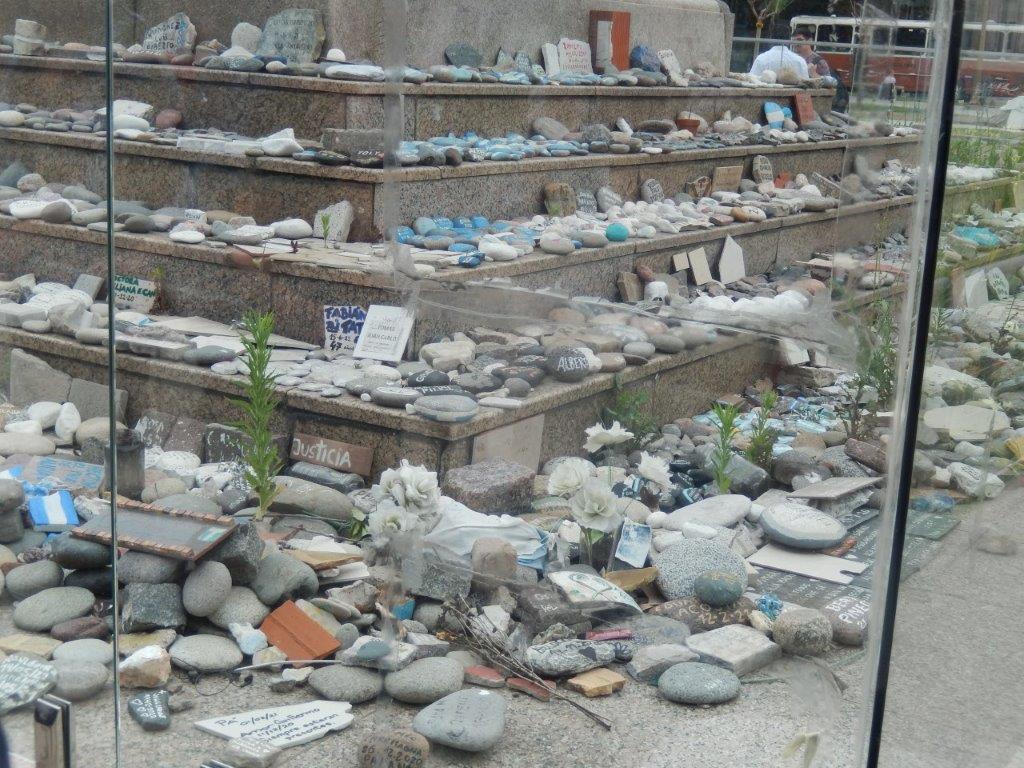 After the march the collection of stones was much larger then the remaining stones that are left after the area was cleaned.
After the march the collection of stones was much larger then the remaining stones that are left after the area was cleaned.
Metropolitan Cathedral
The Buenos Aires Metropolitan Cathedral (Catedral Metropolitana de Buenos Aires) is the main Catholic church in Buenos Aires, Argentina. It is located in the city center, overlooking Plaza de Mayo, on the corner of San Martín and Rivadavia streets, in the San Nicolás neighbourhood. It is the mother church of the Archdiocese of Buenos Aires and the primatial church of Argentina.
The Cathedral of Buenos Aires was rebuilt several times since its humble origins in the 16th century. The present building is a mix of architectural styles, with an 18th-century nave and dome and a severe, 19th-century Neoclassical façade without towers. The interior keeps precious 18th-century statues and altarpieces, as well as abundant Neo-Renaissance and Neo-Baroque decoration.
National Tree
Erythrina crista-galli, often known as the cockspur coral tree, is a flowering tree in the family Fabaceae, native to Argentina, Uruguay, southern Brazil and Paraguay. It is widely planted as a street or garden tree in other countries, notably in California. It is known by several common names within South America: ceibo, seíbo (Spanish), corticeira (Portuguese) and the more ambiguous bucaré, to name a few. Its specific epithet crista-galli means “cock’s comb” in Latin.
The ceibo is the national tree of Argentina,…
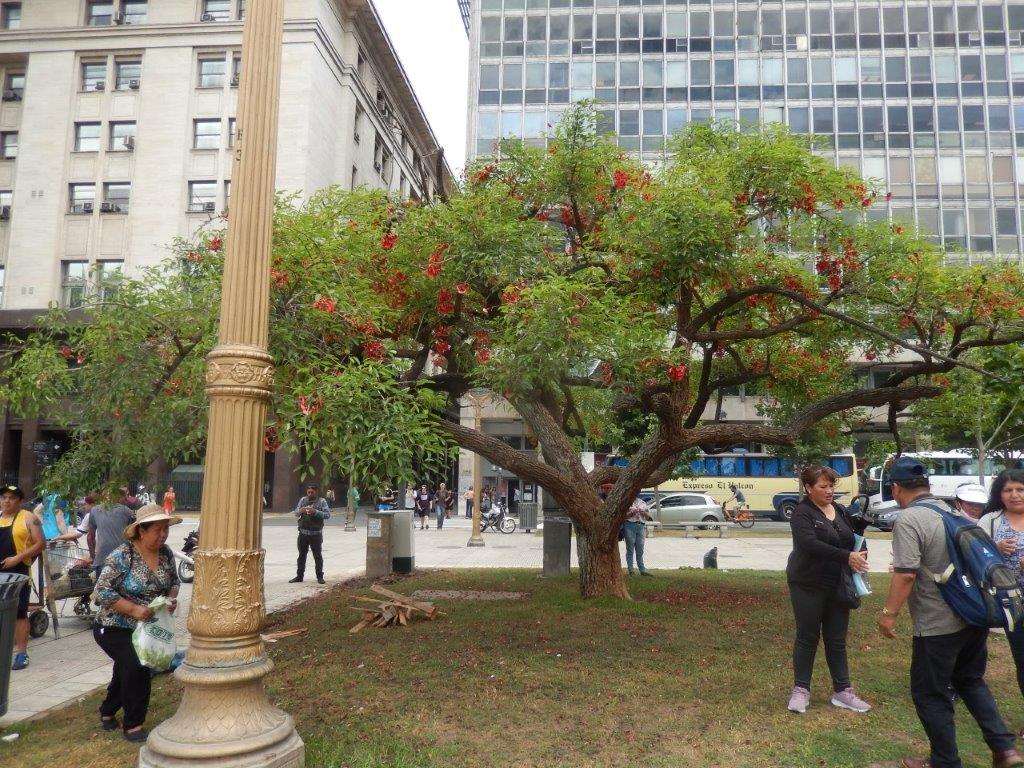 …and its flower the national flower of Argentina and Uruguay.
…and its flower the national flower of Argentina and Uruguay.
Cabildo
The Cabildo of Buenos Aires (Cabildo de Buenos Aires) is the public building in Buenos Aires that was used as seat of the town council during the colonial era and the government house of the Viceroyalty of the Río de la Plata. Today the building is used as a museum.
In 1867 the building still had 11 arches (1 in the center and 5 on each side. Only 2 of the 5 on each side are left.
Music on the Plaza de Mayo
Spring in Buenos Aires
The Wandelgek visited Argentina in Spring and the Jaccaranda Trees were in full bloom…
The 2001 massacre of Plaza de Mayo
The 2001 Massacre of Plaza de Mayo was a slaughter of people at Plaza de Mayo (May Square), Buenos Aires, Argentina, and around this area that took place on December 20, 2001. Five people were murdered. The names of the fatal victims were Carlos Almiron, Gustavo Ariel Benedetto, Diego Lamagna, Alberto Marquez and Gaston Marcelo Riva. The perpetrators tried to kill four more people (Marcelo Dorado, Martin Galli, Sergio Ruben Sanchez, and Paula Simonetti), but they did not succeed. A total of 277 injuries was reported. These crimes were committed under Fernando de la Rua’s presidential term in which Argentina was suffering one of its deepest crises and people were rioting in different cities around the nation. These incidents left a total of 39 people that were murdered across the country, among them 7 children. The trial against the 17 defendants started on February 24, 2014.
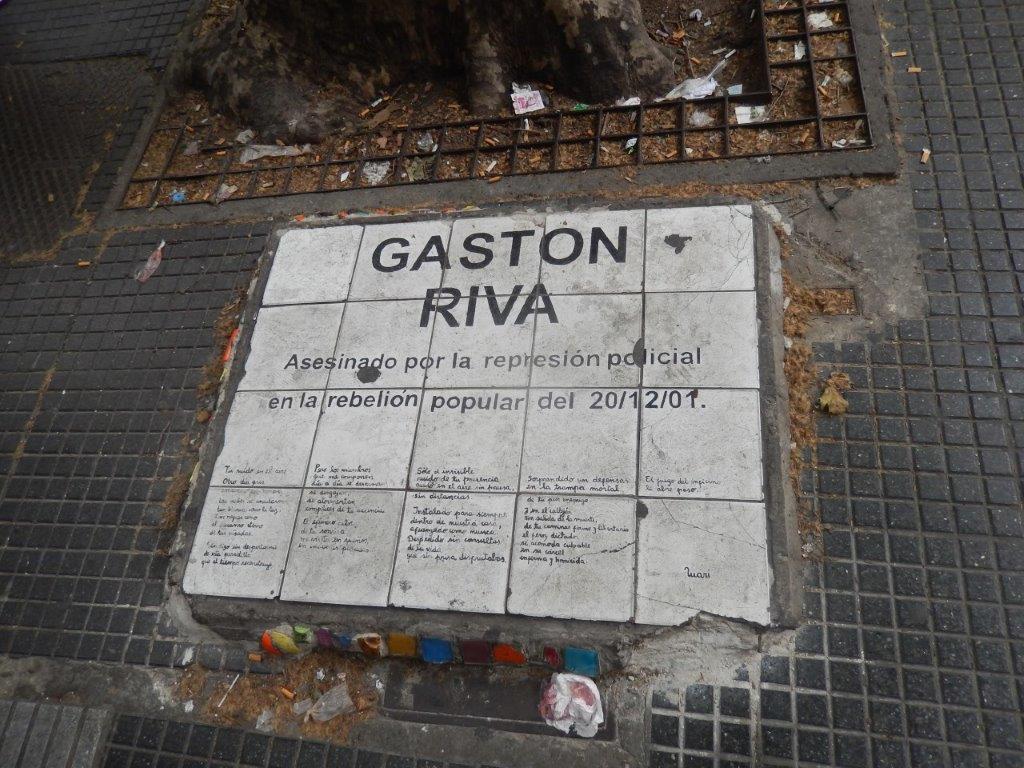 All victims were normal Argentinians, worried for theireconomic situation, but also bystanders and people doing their job, being at the wrong place at the wrong moment during these criemes, like Gaston Riva, who was a 31-year-old man who was married and had three children. He worked as a messenger carrier around the city making deliveries on motorbike. While on his motorbike he was shot by the police. His wife saw him dying on TV.
All victims were normal Argentinians, worried for theireconomic situation, but also bystanders and people doing their job, being at the wrong place at the wrong moment during these criemes, like Gaston Riva, who was a 31-year-old man who was married and had three children. He worked as a messenger carrier around the city making deliveries on motorbike. While on his motorbike he was shot by the police. His wife saw him dying on TV.
Money change in Argentina
If you want to change money in Argentina, than bare in mind the following:
Common Argentinians do not trust their Banking system!
This is very important. It originates from the many financial crises that Argentina had to deal with. Governments which had to solve these crises, more than once confiscated the money which Argentinians put on a bank account, (sometimes promising to return it after 5 years).
Now imagine what that does to Argentine people who need to eat drink and provide food and shelter for their family, during an economic/financial crisis.
It means that nowadays lots of the money that Argentinians earn, is not put in bank accounts, because those are controlled by the government.
Beneath you see streets bordering the Plaza de Mayo which are full of Banks and financial institutes…
And this is the National Bank at the Plaza de Mayo…
What are the best ways to change Euro’s or Dollar’s in Argentina. Well you start with either getting Euro’s/Dollar’s in your own country and bringing those into Argentina. If this doesn’t work for you, you can use Western Union Offices in Argentina, which can be found in almost every town or village (even in Patagonia), but… there are limits to the amount of money you vcan withdraw from Western Union, per day.
Next: Do not use Banks to change your money. Their exchange rates can be twice or trice as low as those on the black market. Of course the black market is tricky, because you can get fooled when exchanging money, but there is a golden rule for that too:
Never change money on the street!
Instead go to an exchange office or a hotel for changing money.
I felt quite rich after my first money change at a very good rate.
The Argentine valuta is the Argentine pesos.
Official bank rates go up and down very fast and extreme, which makes it impossible to predict rates. In EU countries, banks and exchange offices temporarily stopped offering Argentine and also Chilean pesos for that reason. But again change rates in change offices and hotels in Argentina can be 2 to 3 times better than those at Argentina’s Banks.
The Plaza de Mayo is like a spider from where several large almost Parisian or Madrilan style avenues venture into the large city, like e.g.the Avenida Julio A. Roca, the Avenida de Mayo and the Avenida Rogué Saenz Peña de Mayo (which connects the plaza with the famous Obelisk).
At a street corner were stalls where the delicious Argentine style Chorizo sausages were sold. Argentina is the 1st country in the world where people have the highest meat consumption. More about that later though.
The Wandelgek entered the Avenida de Mayo…
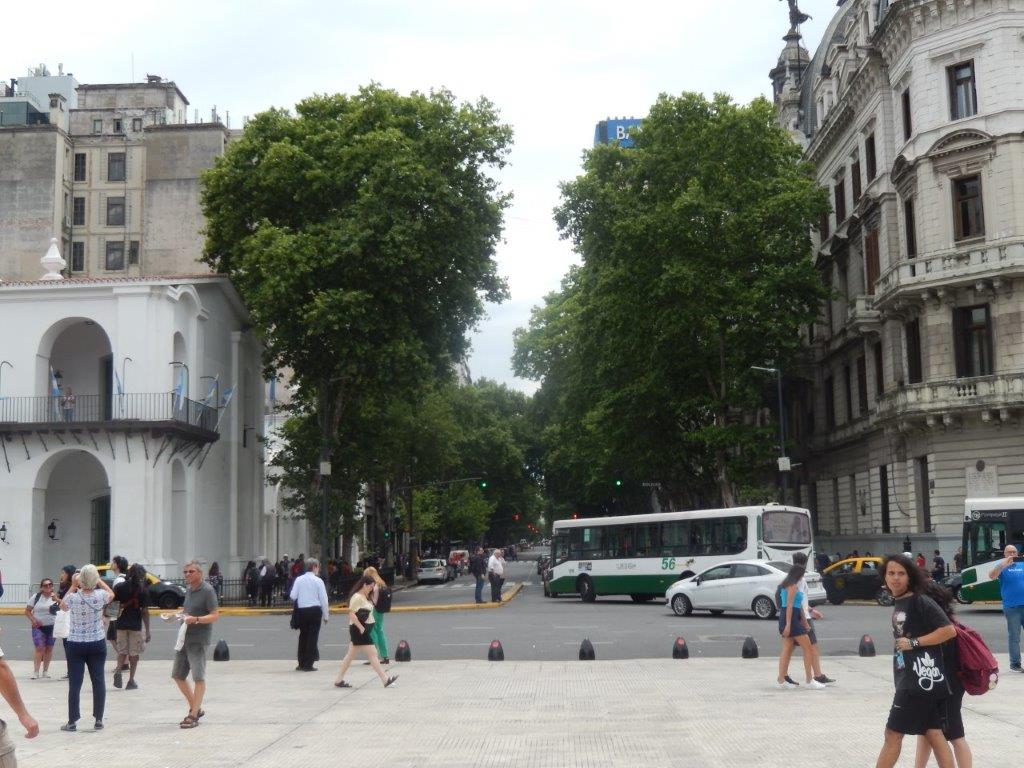 Above is the Avenida de Mayo, seen from the Plaza de Mayo.Beneath a typical, richly decorated building…
Above is the Avenida de Mayo, seen from the Plaza de Mayo.Beneath a typical, richly decorated building…
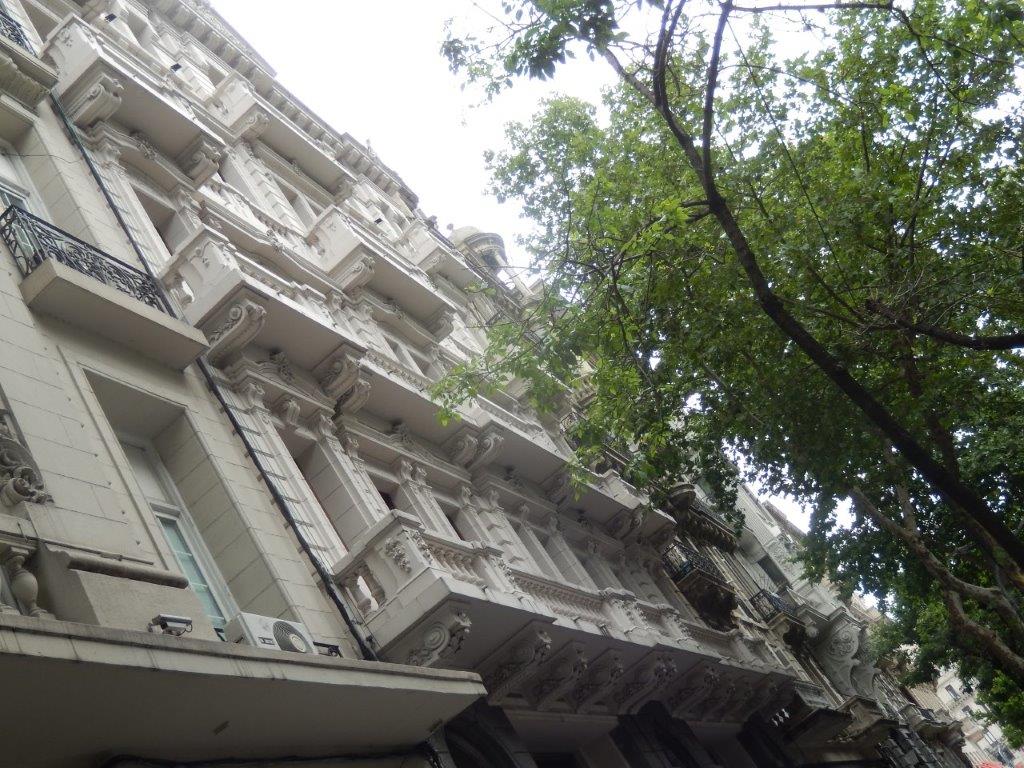 Walking through these Avenidas (Avenues) gives you a good impression as to why Buenos Aires, more than any other south american city, is compared with major European cities like Paris and Madrid. These are broad streets often lined with trees (of which a lot were blooming in late Spring) andthe buildings on both sides of the Avenidas were in a distinct Europen style.
Walking through these Avenidas (Avenues) gives you a good impression as to why Buenos Aires, more than any other south american city, is compared with major European cities like Paris and Madrid. These are broad streets often lined with trees (of which a lot were blooming in late Spring) andthe buildings on both sides of the Avenidas were in a distinct Europen style.
Another thing that immediately got noticed by The Wandelgek, was the abbundance of bookstores and book or litarature themed cafés and restaurants.
E.g. this little take away restaurant which had a selction of books in their shopping window…
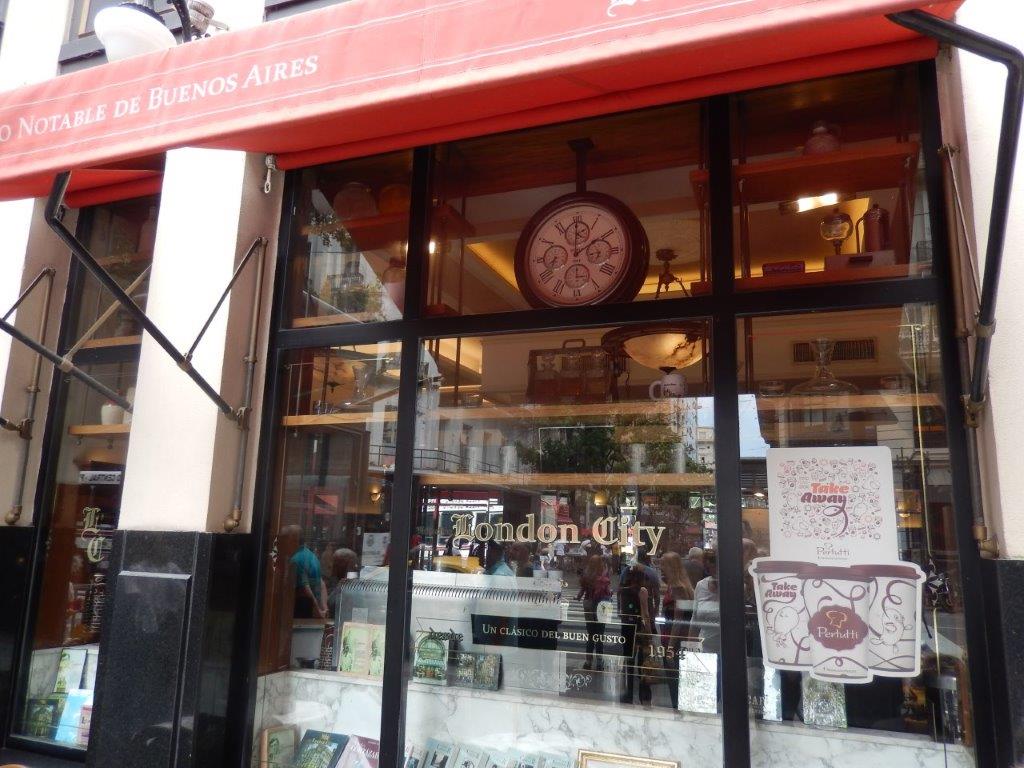 …or this little bookshop stuffed in between much larger stores…
…or this little bookshop stuffed in between much larger stores…
and a bit further was the famous Café Tortoni, which is now a cultural heritage landmark visited by loads of tourists, but once was a talking shop for intellectuals, writers and other types of nighthawks.
All of these showed that Buenos Aires had a large percentage of the population that loved to read books. I personally really love that, being a book, language and literature lover myself.
Another obvious, not to be missed thingy in Buenos Aires is the almost divine/cult-like adoration of Eva Perón, the 2nd wife of Juan Domingo Perón.
Where the Avenida de Mayo crosses the Avenida 9 de Julio, you can’t miss the high television signal tower which bares an image of Eva Perón on both sides that can be seen when driving on the Avenida 9 de Julio.
July 9 Avenue (Avenida 9 de Julio) is a major thoroughfare in the city centre of Buenos Aires, Argentina. Its name honors Argentina’s Independence Day, July 9, 1816.
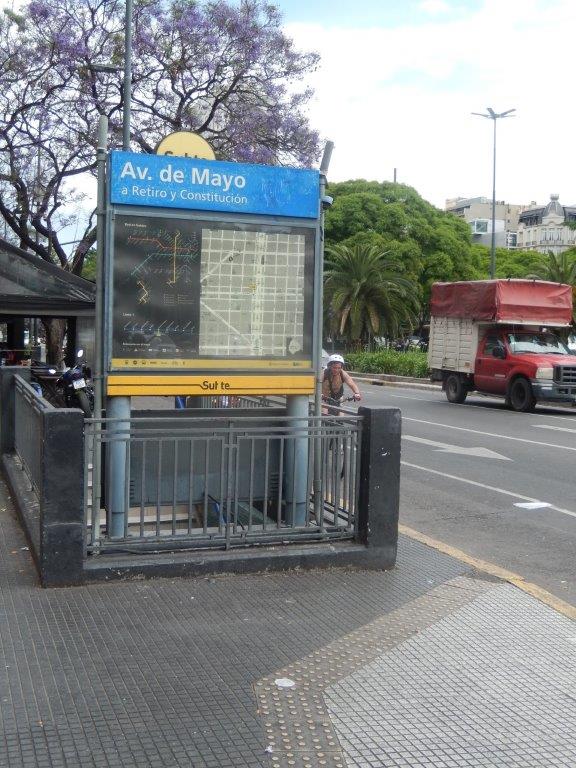 Above is the Avenida de Mayo Metro Station on the intersection with Avenida 9 de Julio.
Above is the Avenida de Mayo Metro Station on the intersection with Avenida 9 de Julio.
The avenue runs around 3 kilometres (1.9 mi) to the west of the Río de la Plata waterfront, from the Retiro district in the north to Constitución station in the south. The avenue has up to seven lanes in each direction and is flanked on either side by parallel streets of two lanes each. Through the centre of the avenue runs one of the city’s Metrobus (Bus rapid transit) corridors, which stretches 3 kilometres (1.9 mi) and was inaugurated in July 2013. There are two wide medians between the side streets and the main road. It is currently the widest avenue in the world.
The Republic Square is located on the intersection of this Avenue with the Corrientes Avenue and on that point is sited the Obelisk of Buenos Aires.
Beneath is a statue of Don Quixote de la Mancha, the famous character from a Spanish epic novel by Miguel de Cervantes who fought the wind mills.
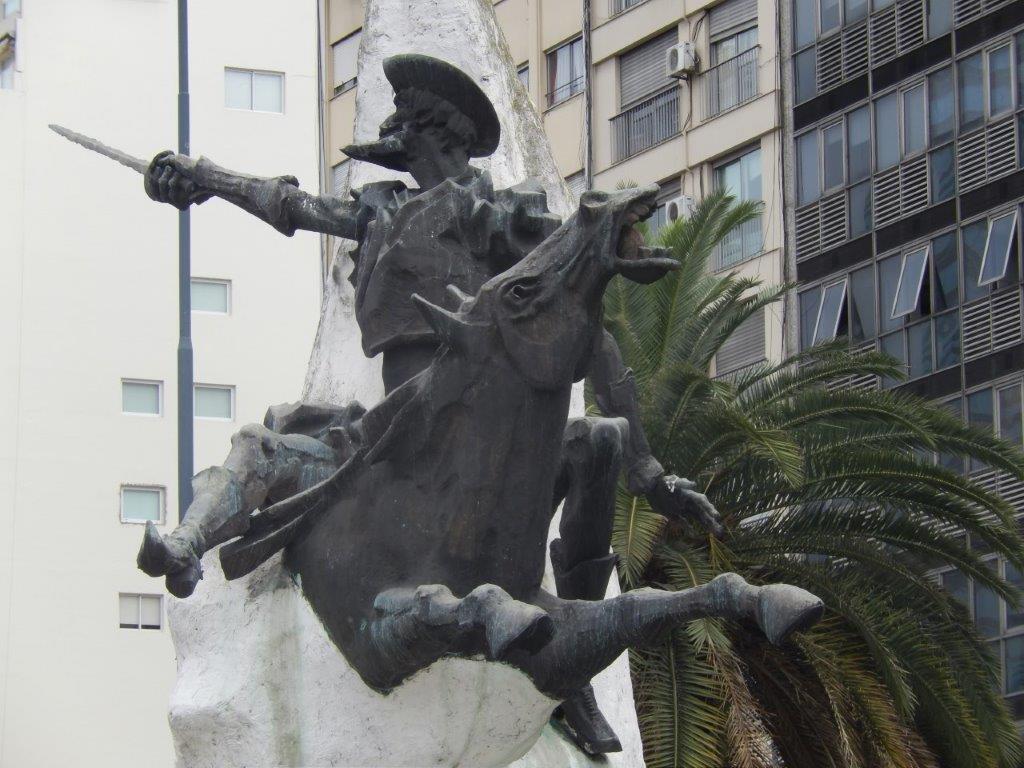 There might be a symbolic meaning to this but Don Quixote’s pointy sword points towards Eva Perón’s image, high above. Is she a windmill too?
There might be a symbolic meaning to this but Don Quixote’s pointy sword points towards Eva Perón’s image, high above. Is she a windmill too?
On one side of the building she’s depicted in a happy mood, on the other side in an angry mood…
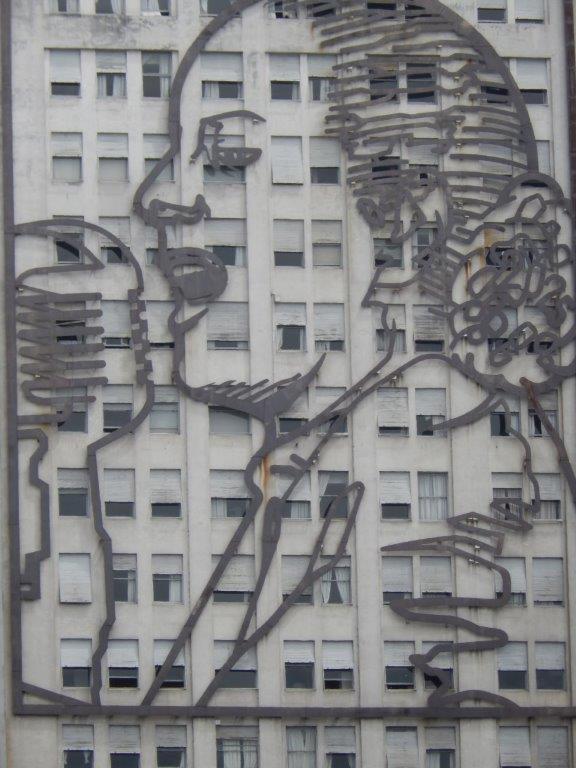 This concluded my first investigative city walk through Argentina’s capital and got very me curious about this enormous city. I was ready to explore more. But for now I returned to the hotel, passing the beautiful Teatro Colonial, which is a theater of Buenos Aires located at the corners of Paseo Colon and Belgrano, in the San Telmo neighborhood, just next to my hotel.
This concluded my first investigative city walk through Argentina’s capital and got very me curious about this enormous city. I was ready to explore more. But for now I returned to the hotel, passing the beautiful Teatro Colonial, which is a theater of Buenos Aires located at the corners of Paseo Colon and Belgrano, in the San Telmo neighborhood, just next to my hotel.
The current building dates from 1945, and was built on the land that belonged to Vicente de Azcuenaga, a wealthy merchant born in 1706 in Biscay. It featured the performances of distinguished national culture referents, including Juan Carlos Gené and Sergio Renán.
Some works of the Colonial Theater were musicalized by notable musicians and tango singers such as Astor Piazzolla and Edmundo Rivero.
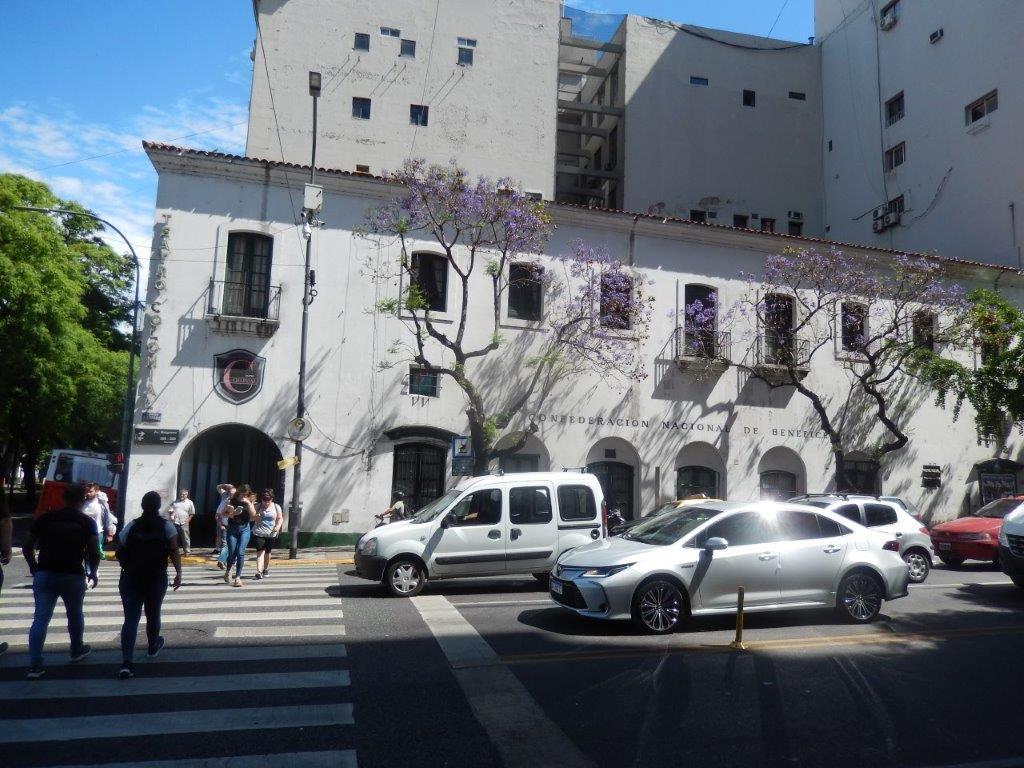 There is no story possible, about Argentina without mentioning the importance of Juan Dominge and Eva Perón, but this also counts for Astor Piazzola. I’ll delve into his importance for Argentina and it’s most well known music and dance; the Tango, in an upcoming blogpost.
There is no story possible, about Argentina without mentioning the importance of Juan Dominge and Eva Perón, but this also counts for Astor Piazzola. I’ll delve into his importance for Argentina and it’s most well known music and dance; the Tango, in an upcoming blogpost.
After concluding my city walk and after having a quick shower at my hotelroom, I was ready for dinner and walked a bit through San Telmo to discover this typical Argentine Grill (parilla) restaurant named “De Snivel”. I wondered about its typical Dutch name for a while 😉 No of course not! Des Nivel (meaning uneven) was a restaurant which mainly served meat. Lots of meat in large portions.
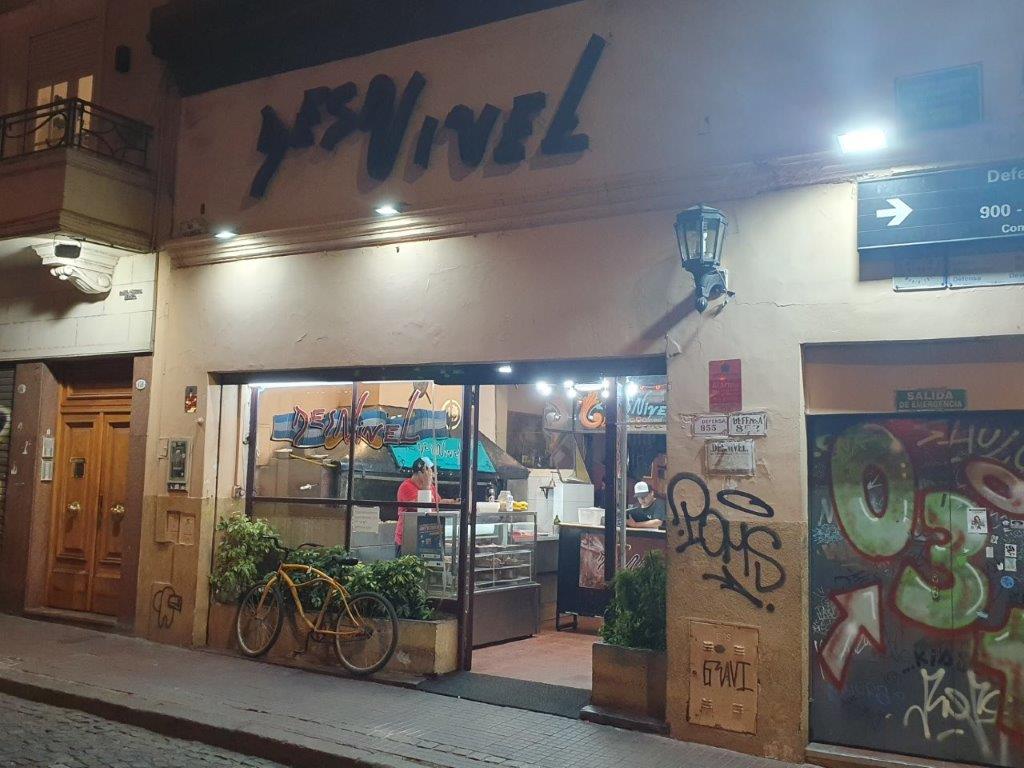 The restaurant’s interior was typically Argentinian:
The restaurant’s interior was typically Argentinian:
Personally I think that when you are Vegan or Veganist (unlike me), you still at least once need to try a meat dish in Argentina, simply because eating meat is a cultural thing in Argentina. If you’re willing to try this than Des Nivel is a really good choice, because they serve really tender meat dishes like e.g. Beaf steak or Sirloin and Tenderloin steaks uncovered or covered in pepper or mushroom sauce.
The meat is prepared on open grill fires which can be seen from the restaurant…
With the food came a surprisingly good selection of beers and of course wines. But The Wandelgek went for beer, simply because he always felt that when travelling through non European or non North Amercan coutries, the beer palette was mostly limited to Lager beers (pilsen beer or something similar) and he prefers specialty beers from either Belgian, British, Irish or German origin, but here he already saw different European beer styles on the menu.
There was e.g. Patagonia Amber Lager (yes a lager, but much tastier than a pilsen lager) and even a German Schwarzbier (Black or Dark beer).
After a really good dinner The Wandelgek returned with a filled stomach to his hotel for a good night’s rest, in full anticipation of the next day and what more Buenos Aires would have to offer 🙂

